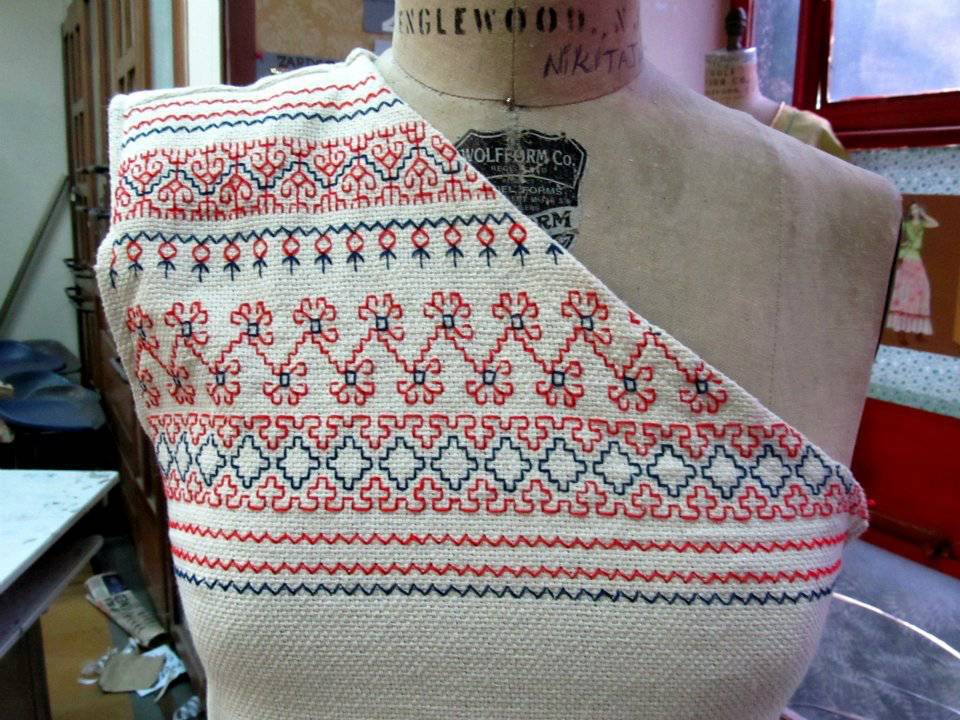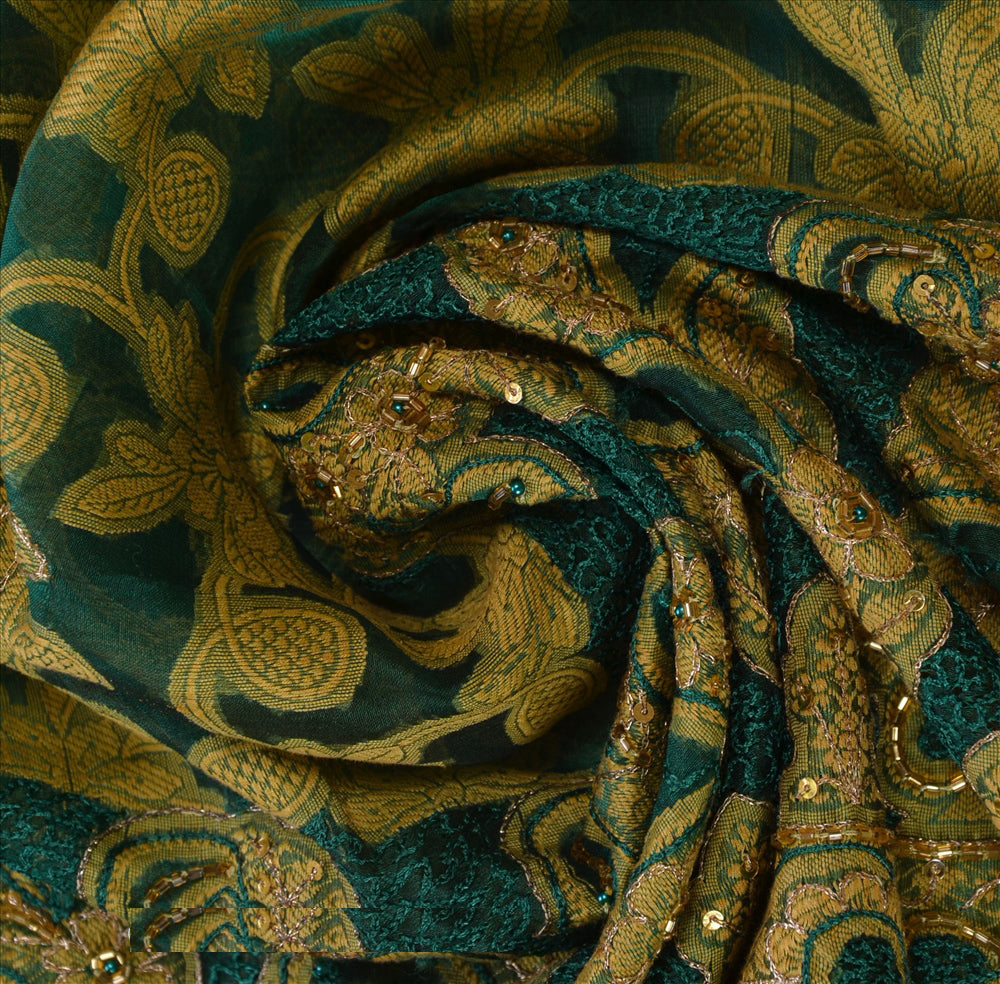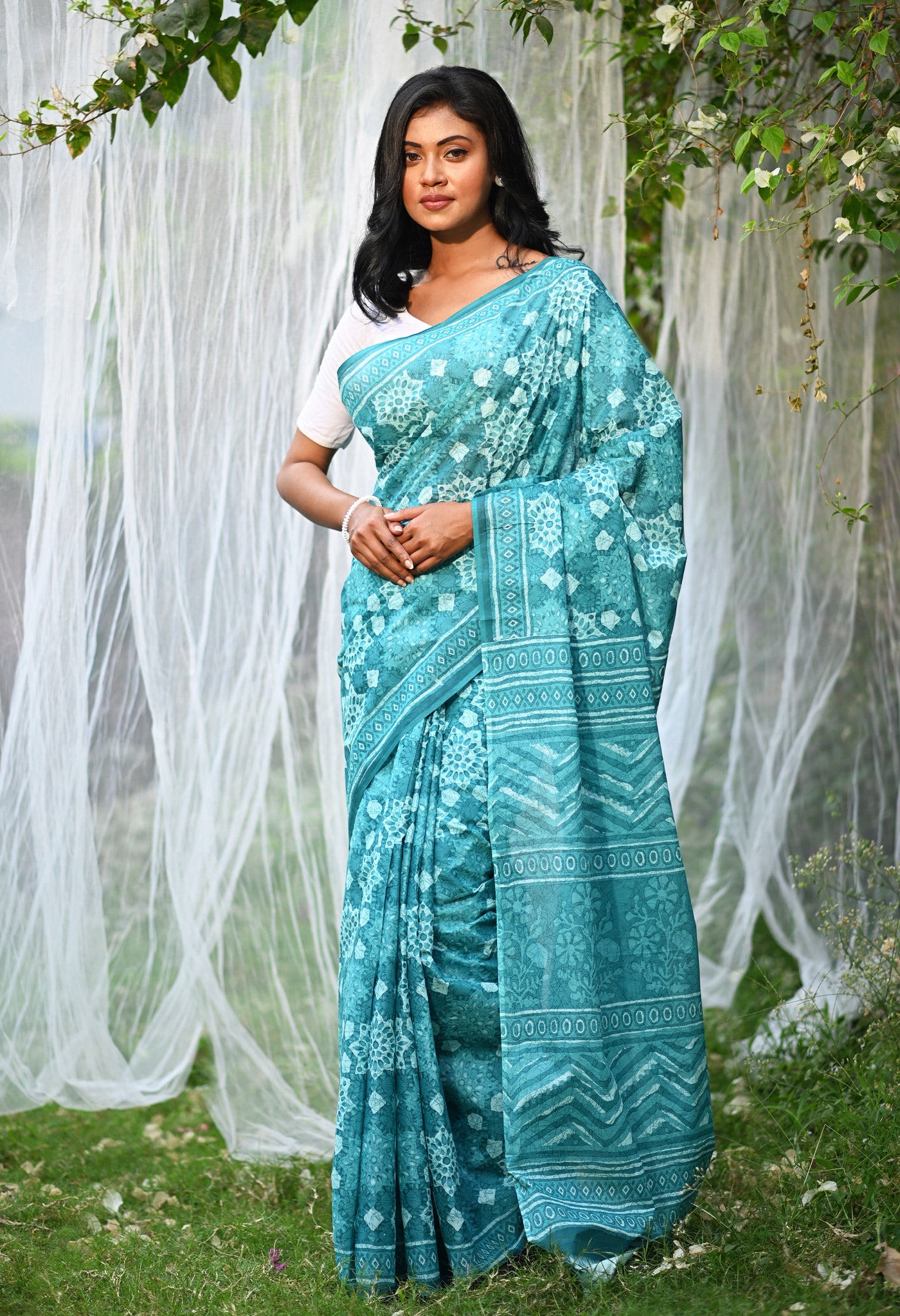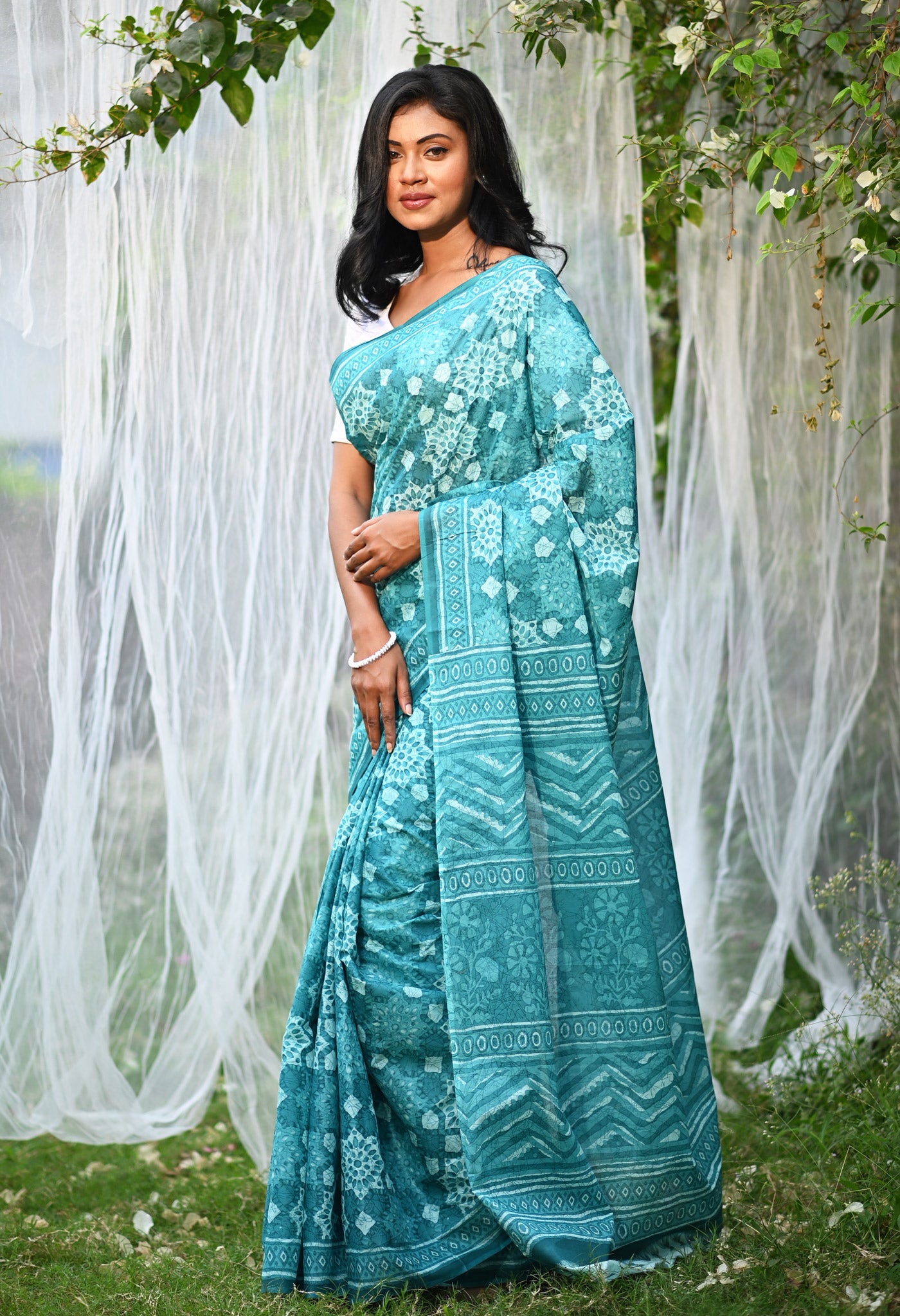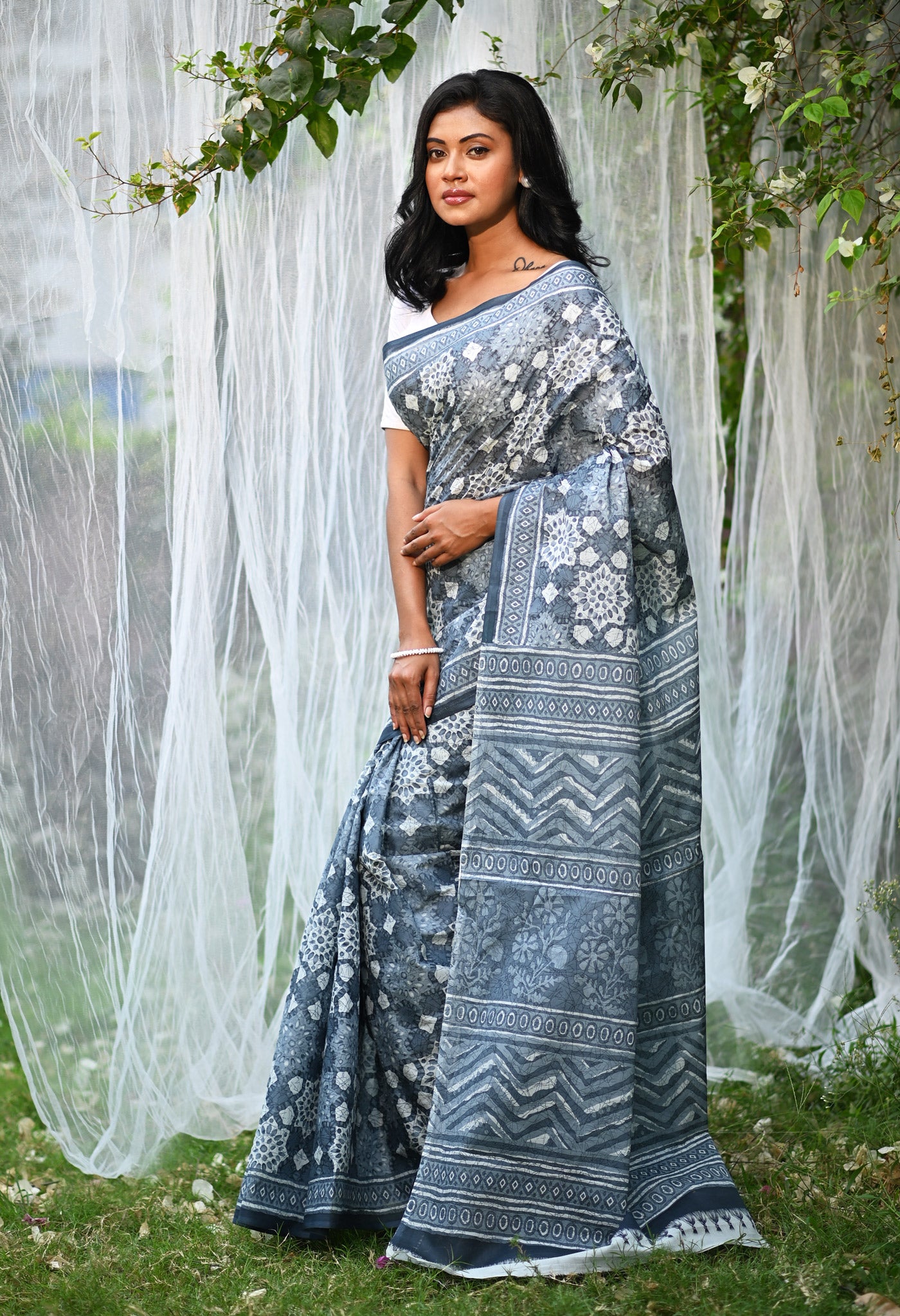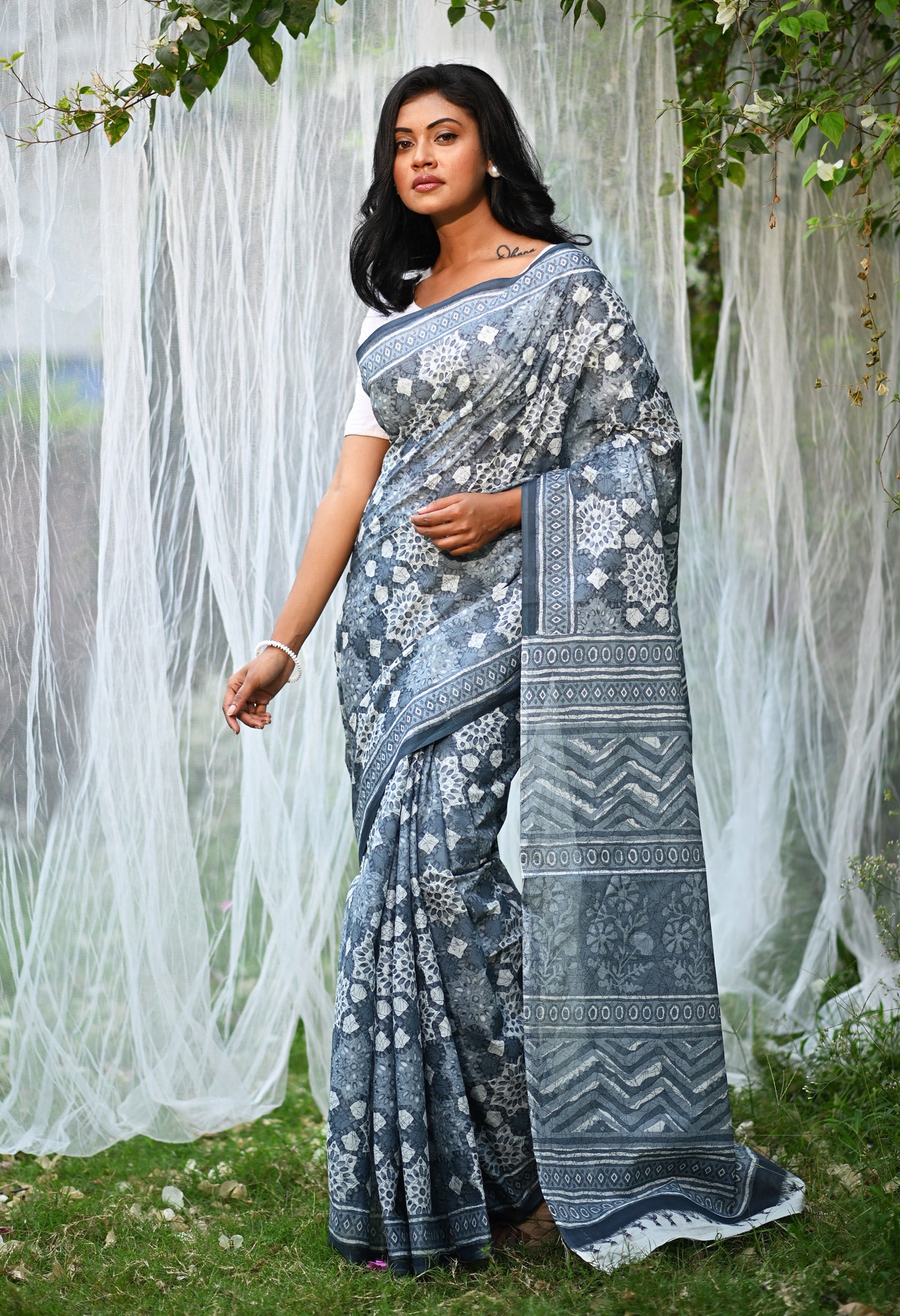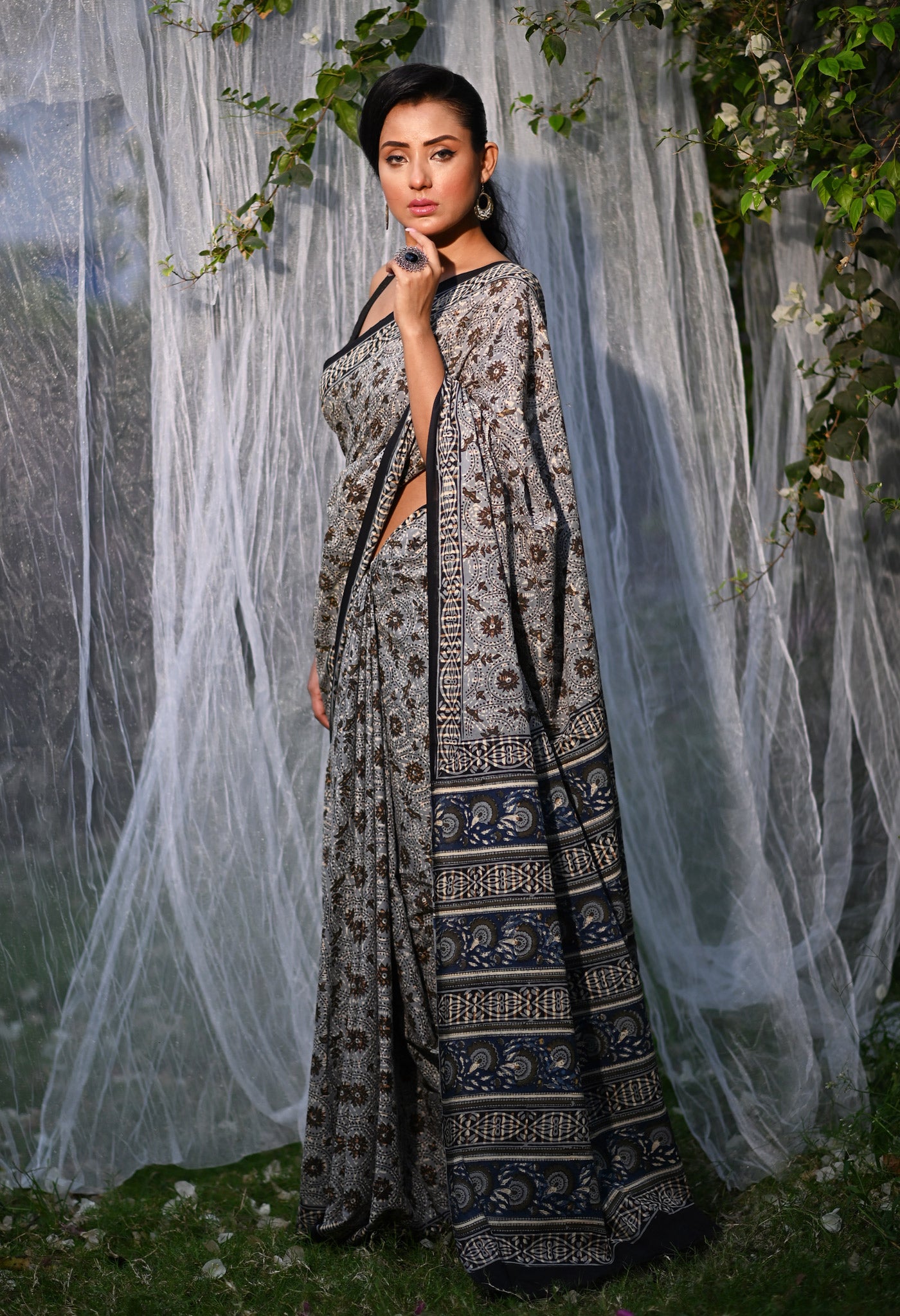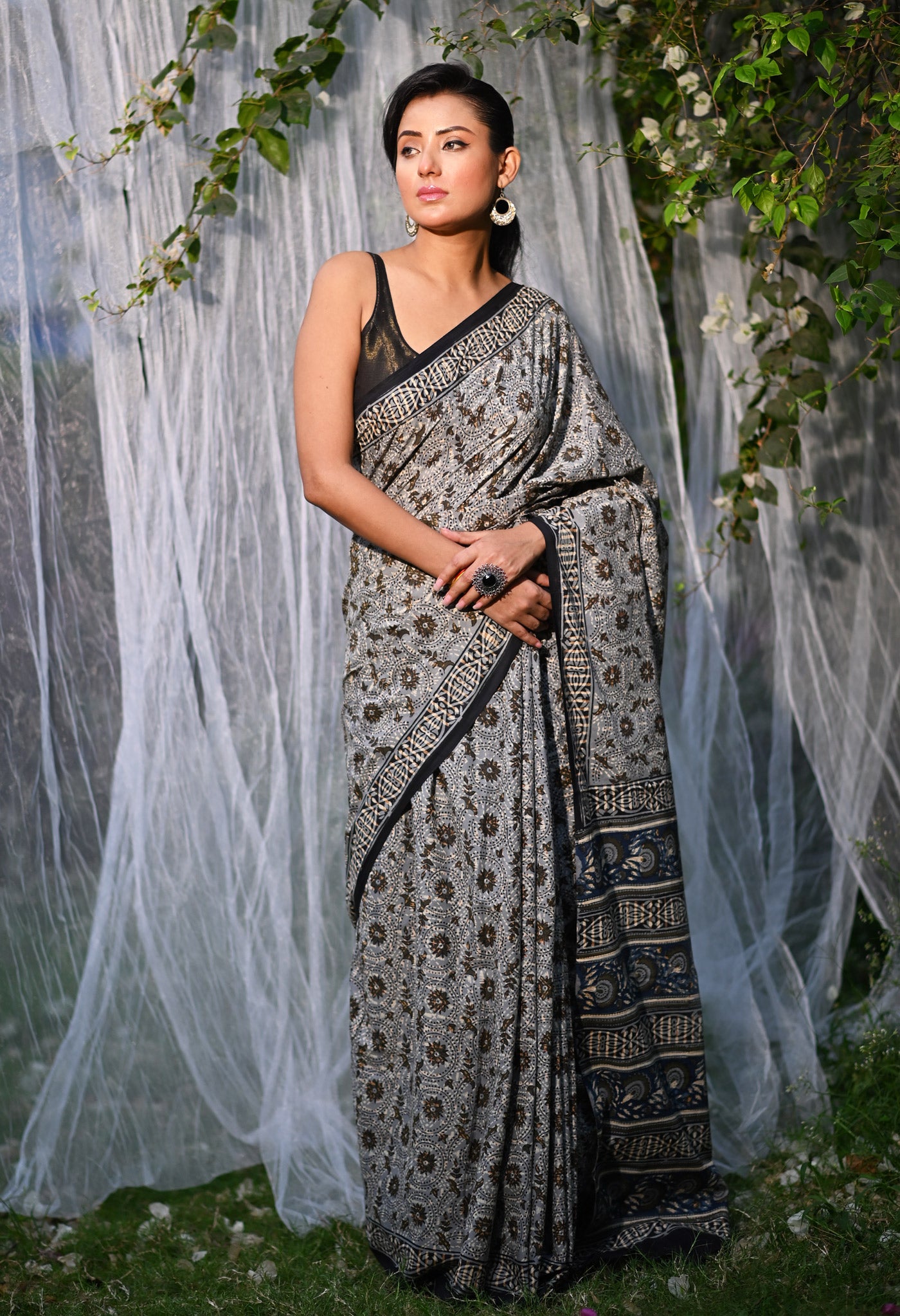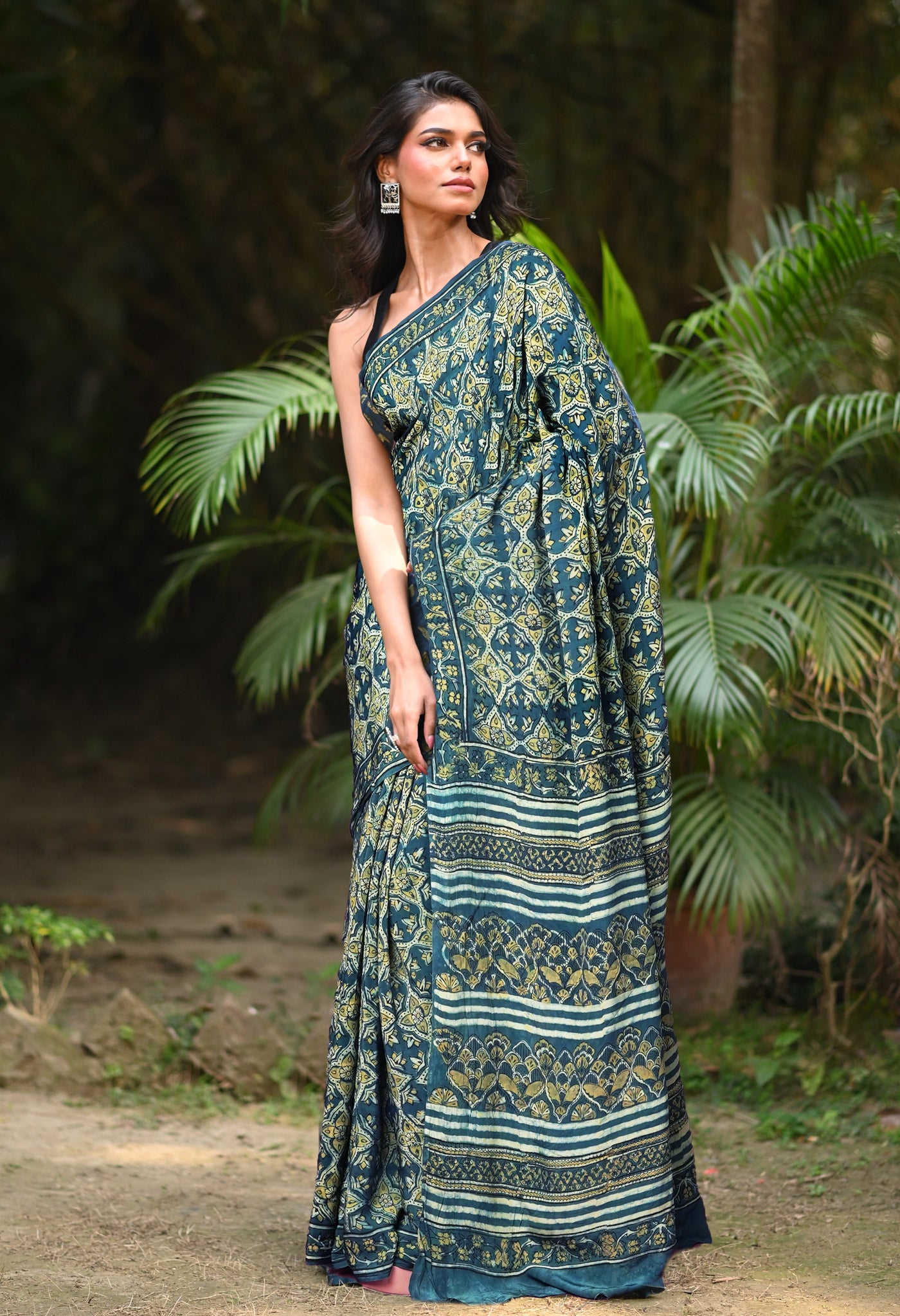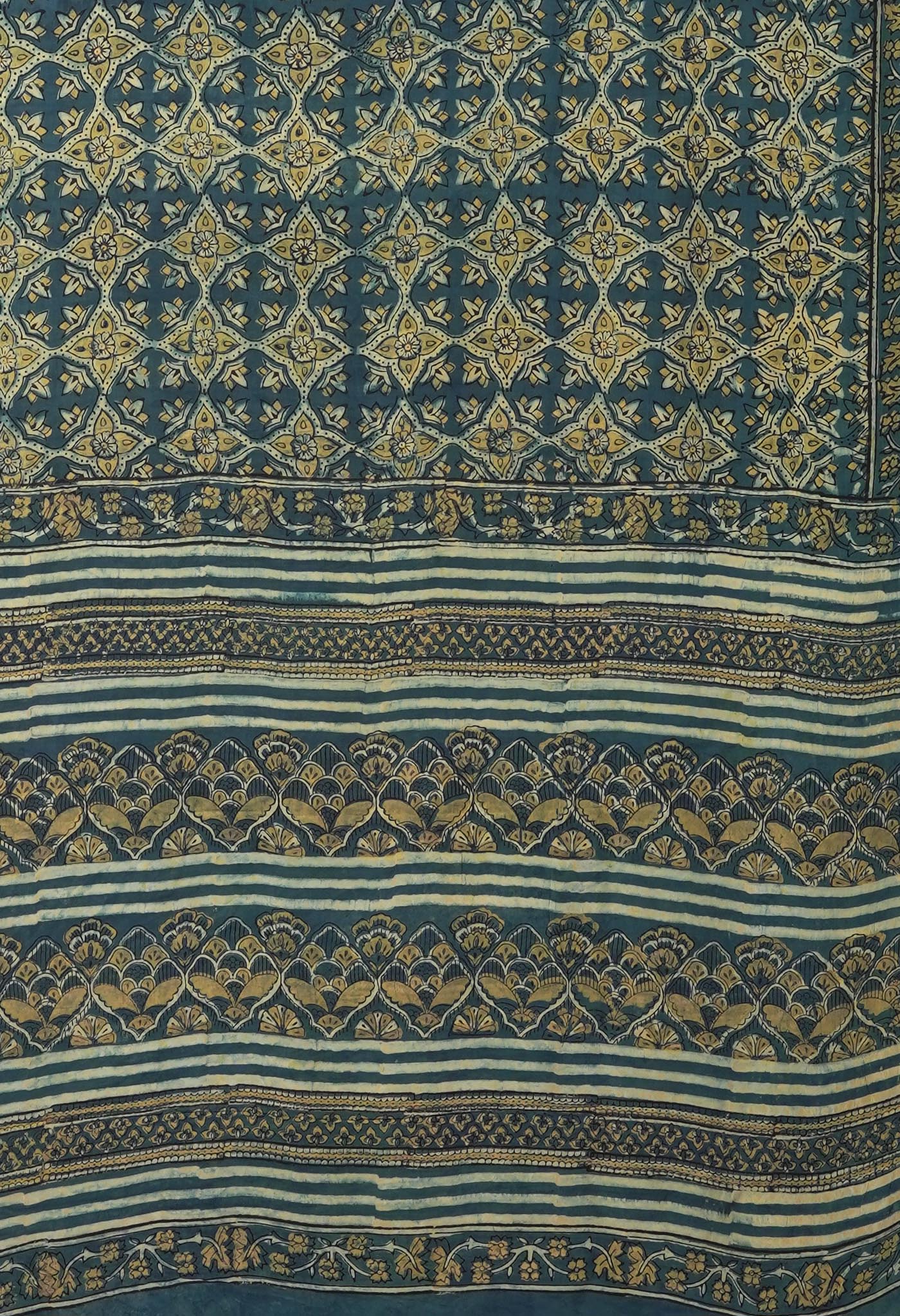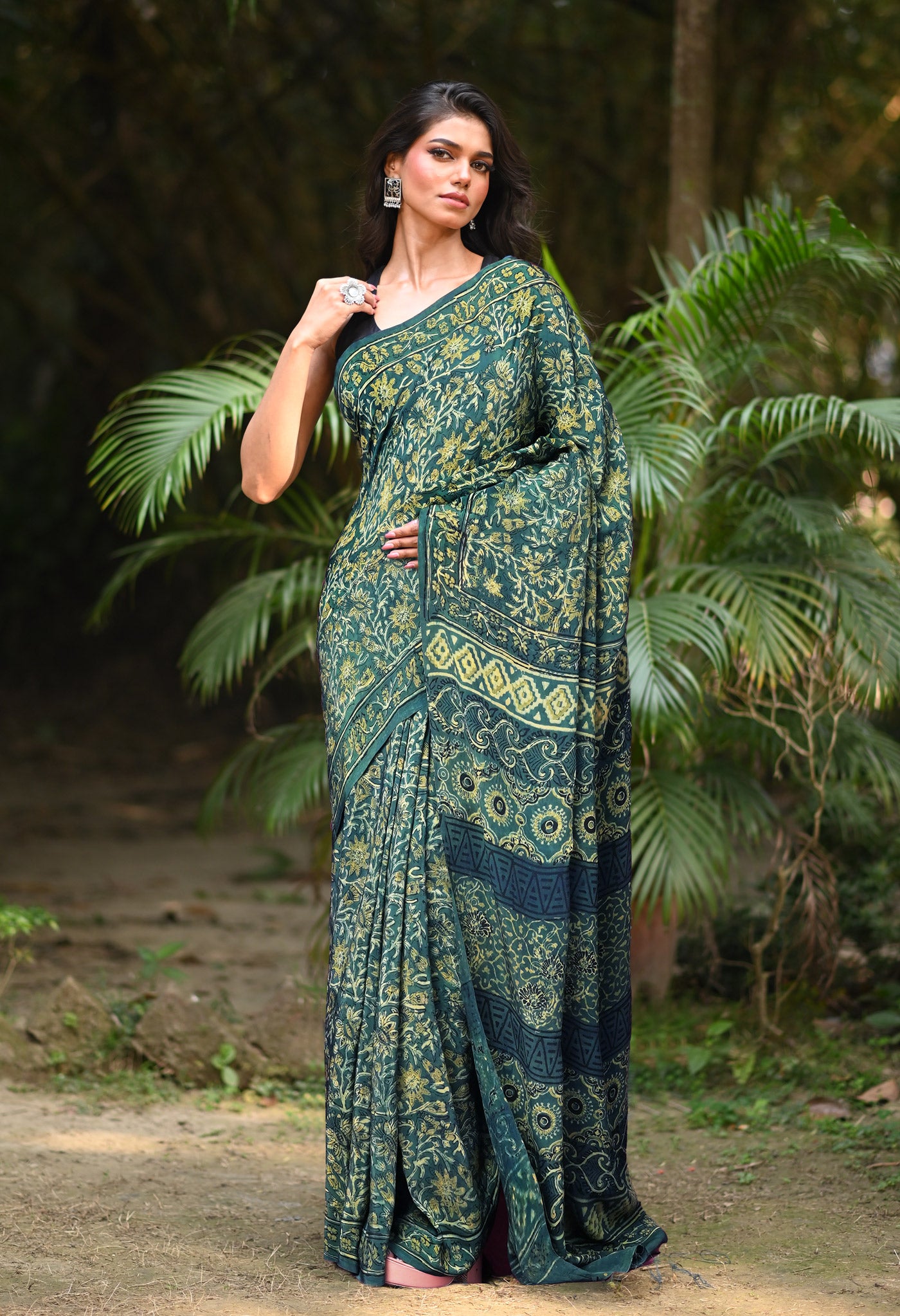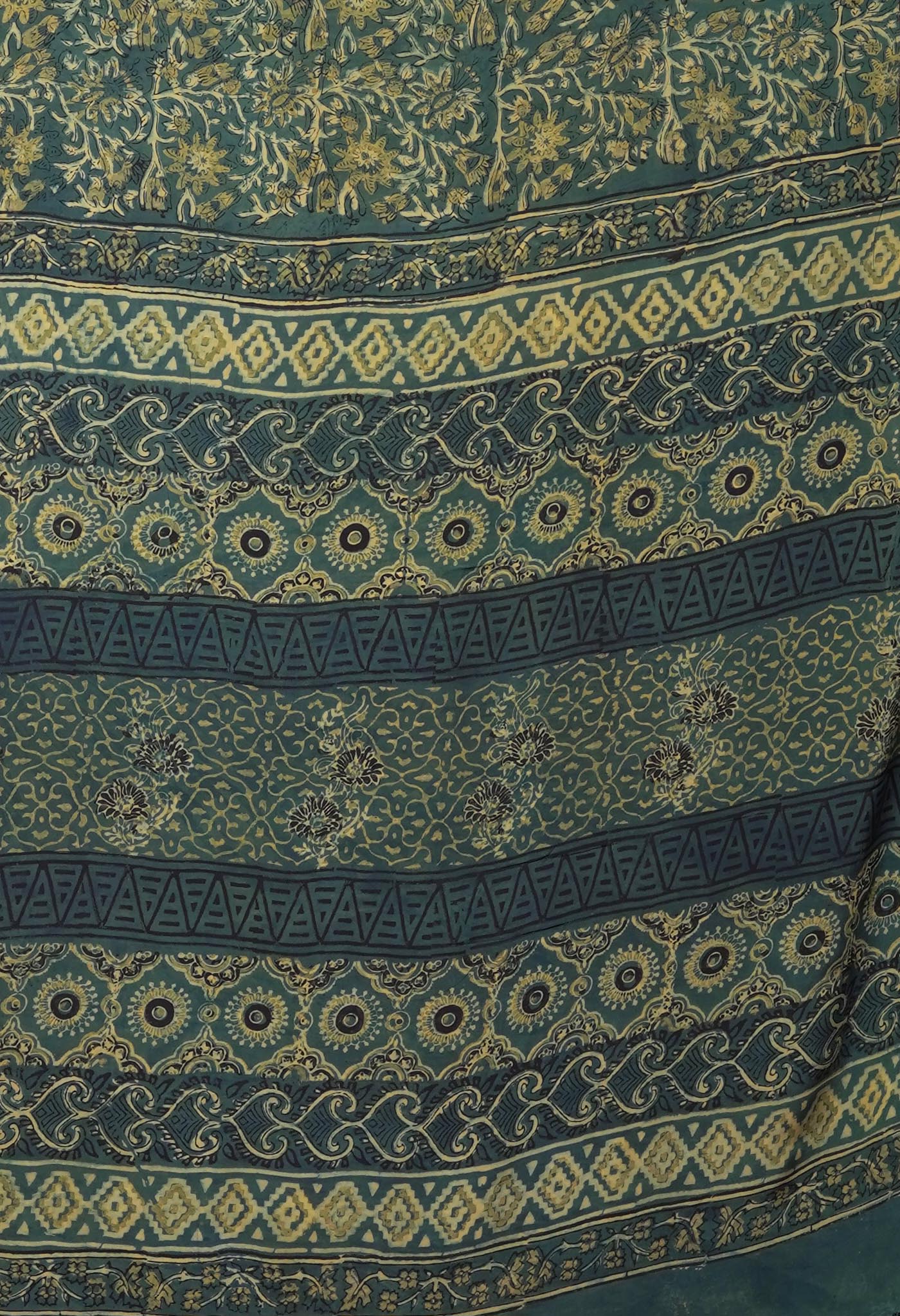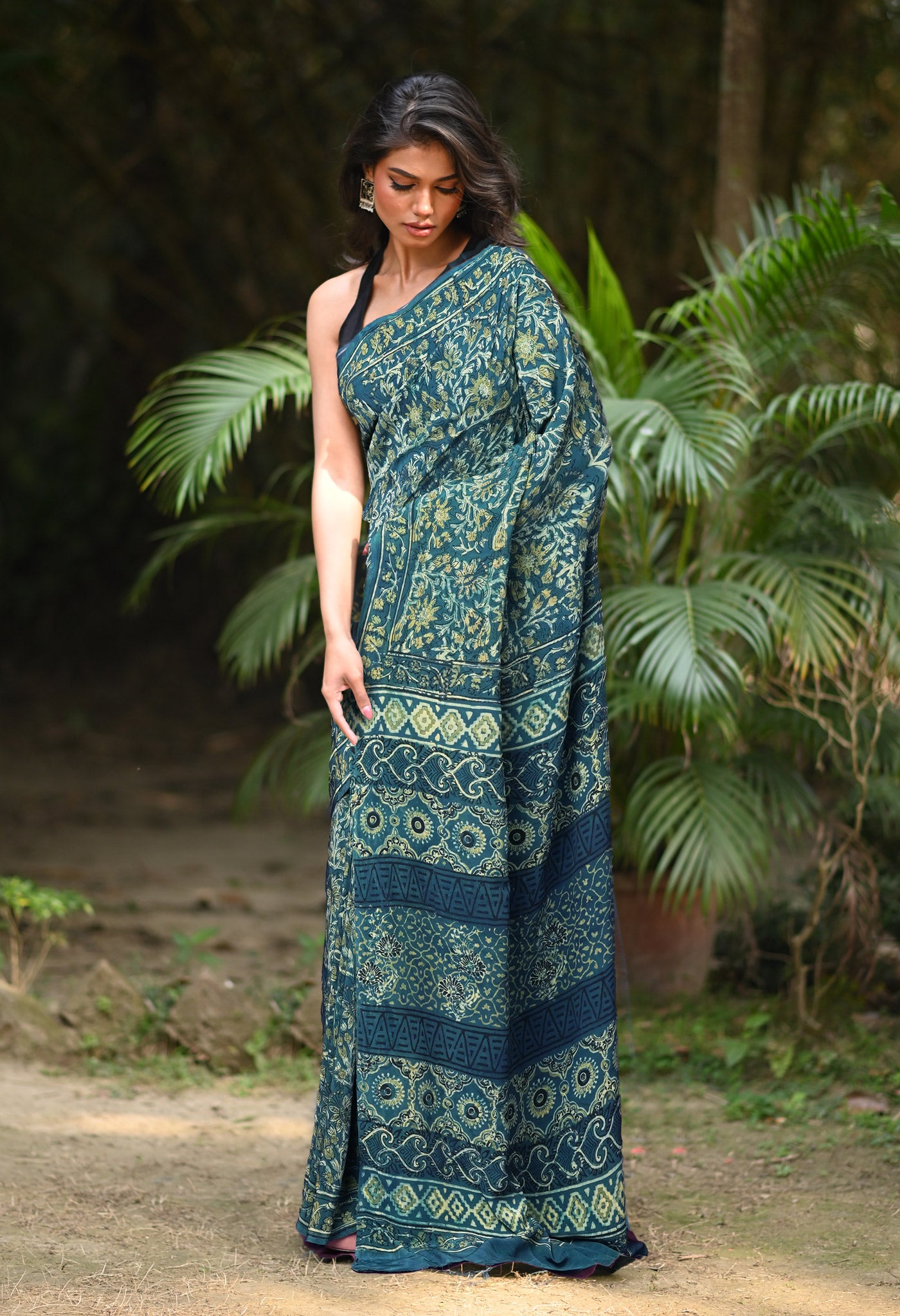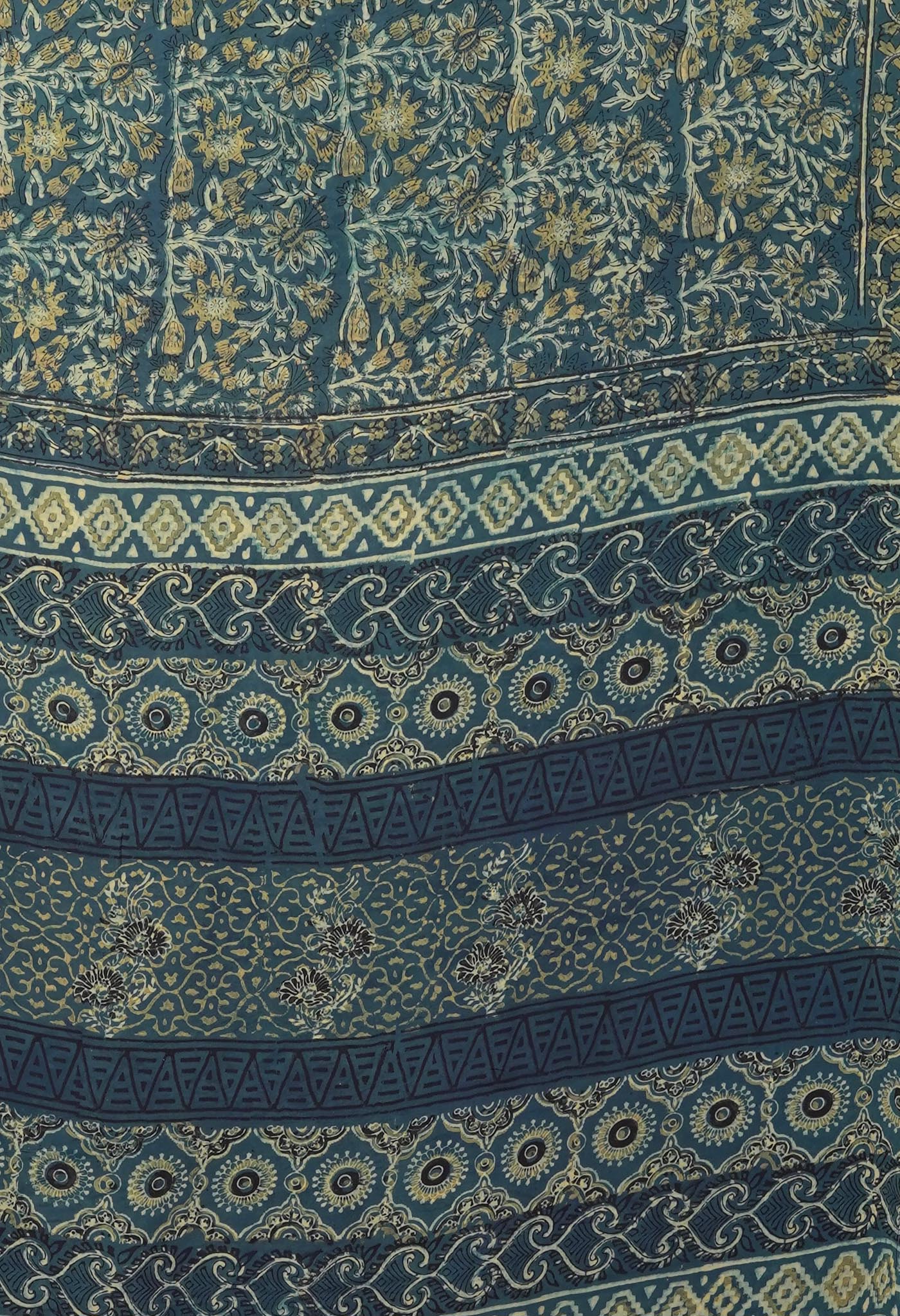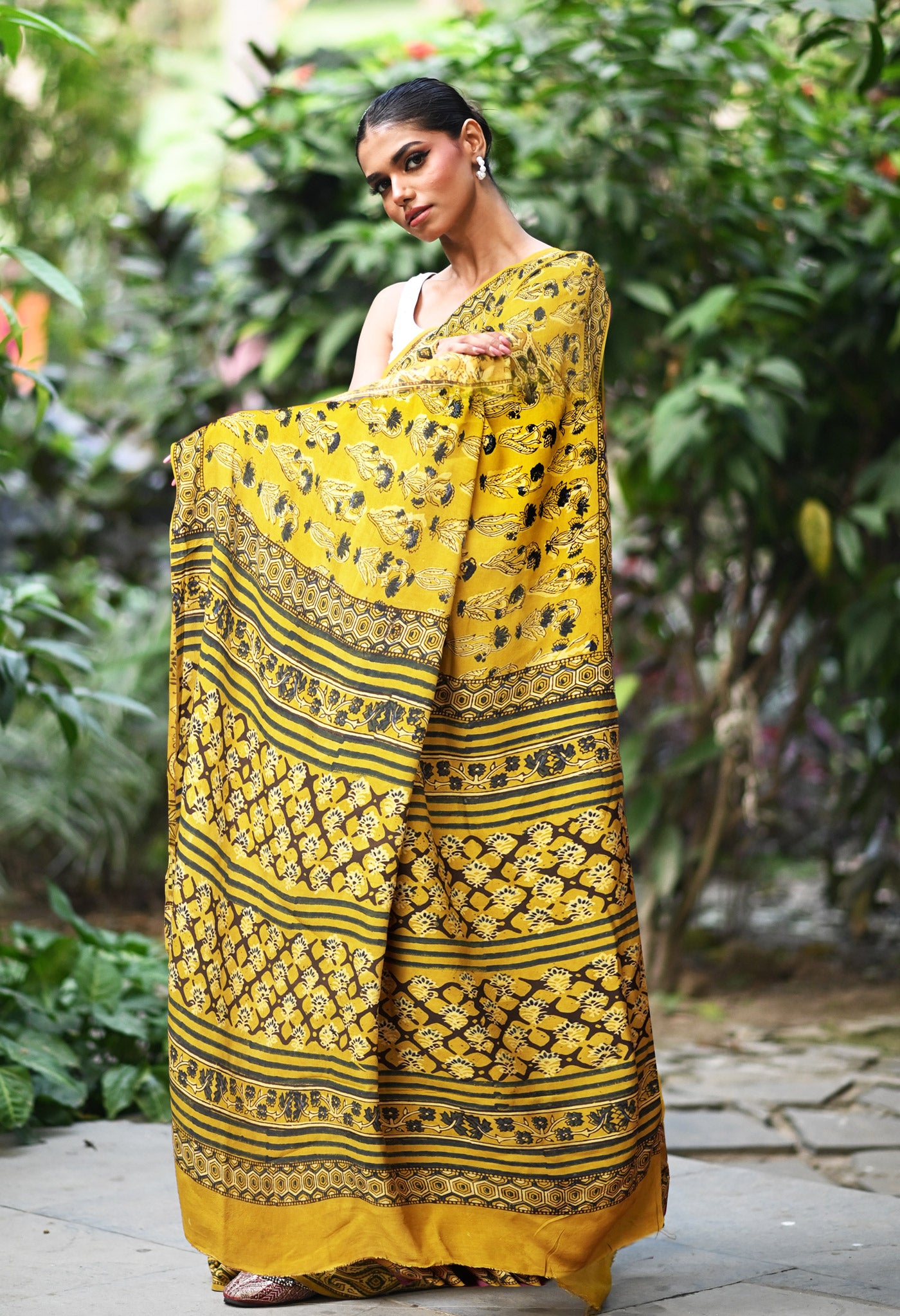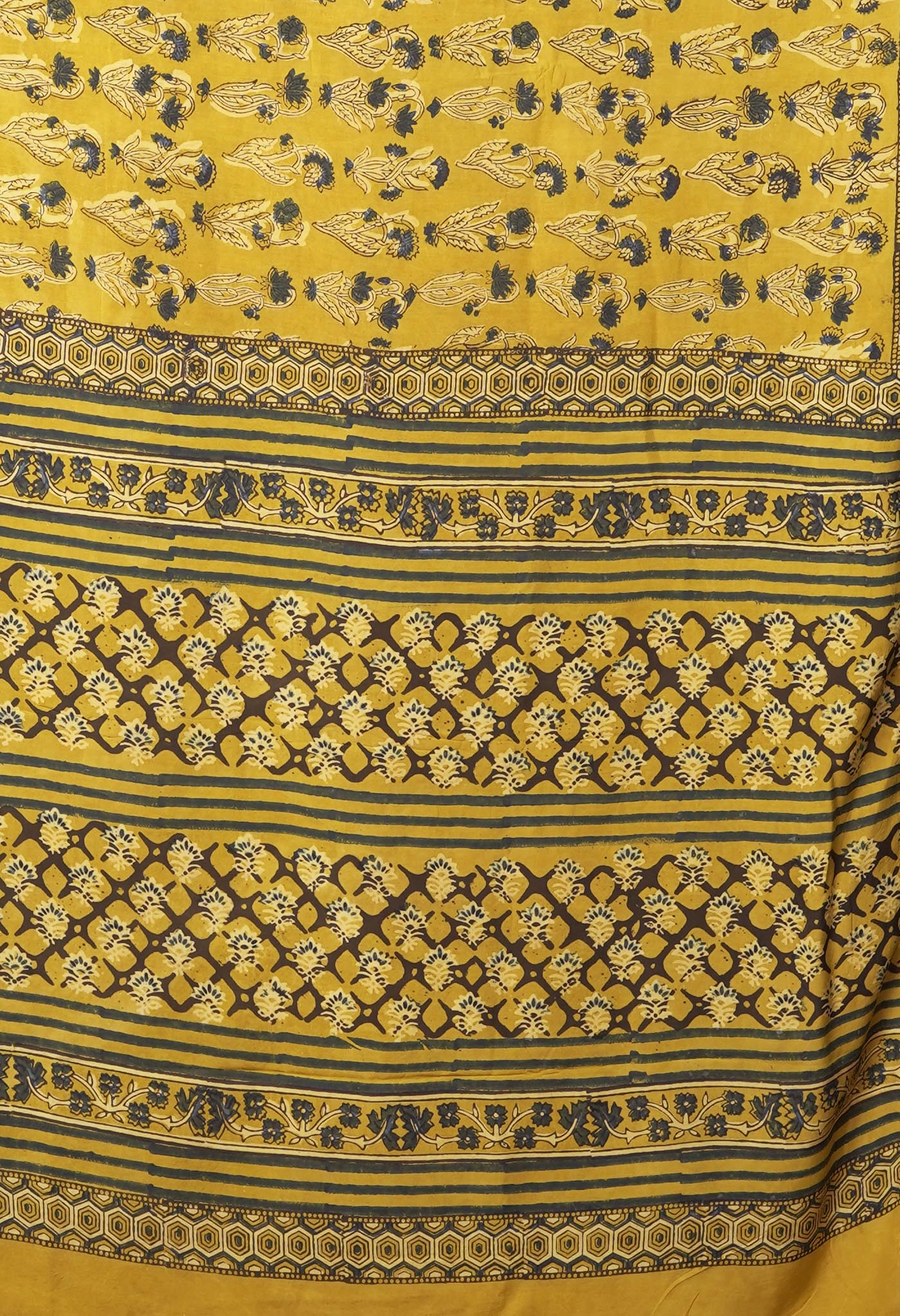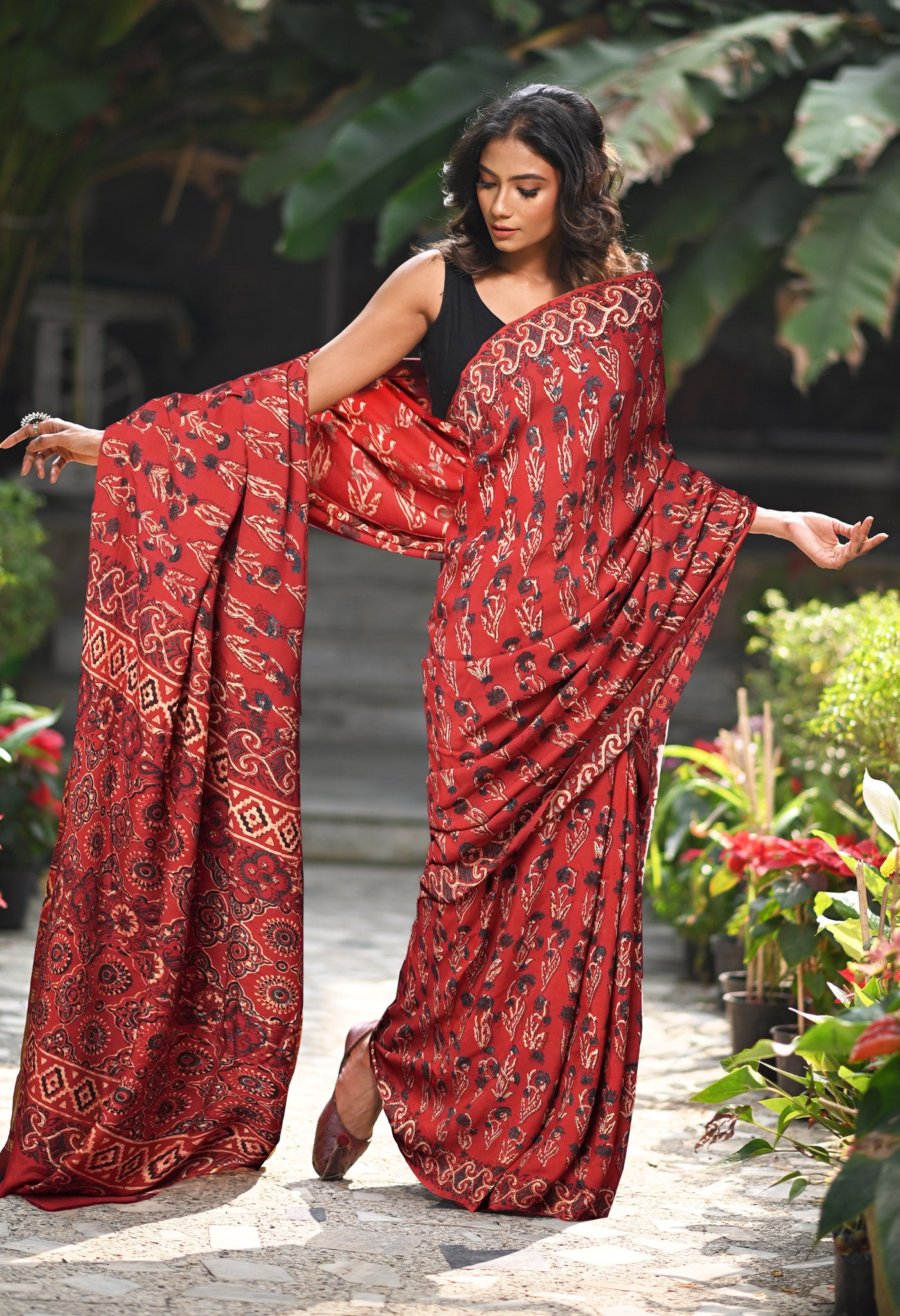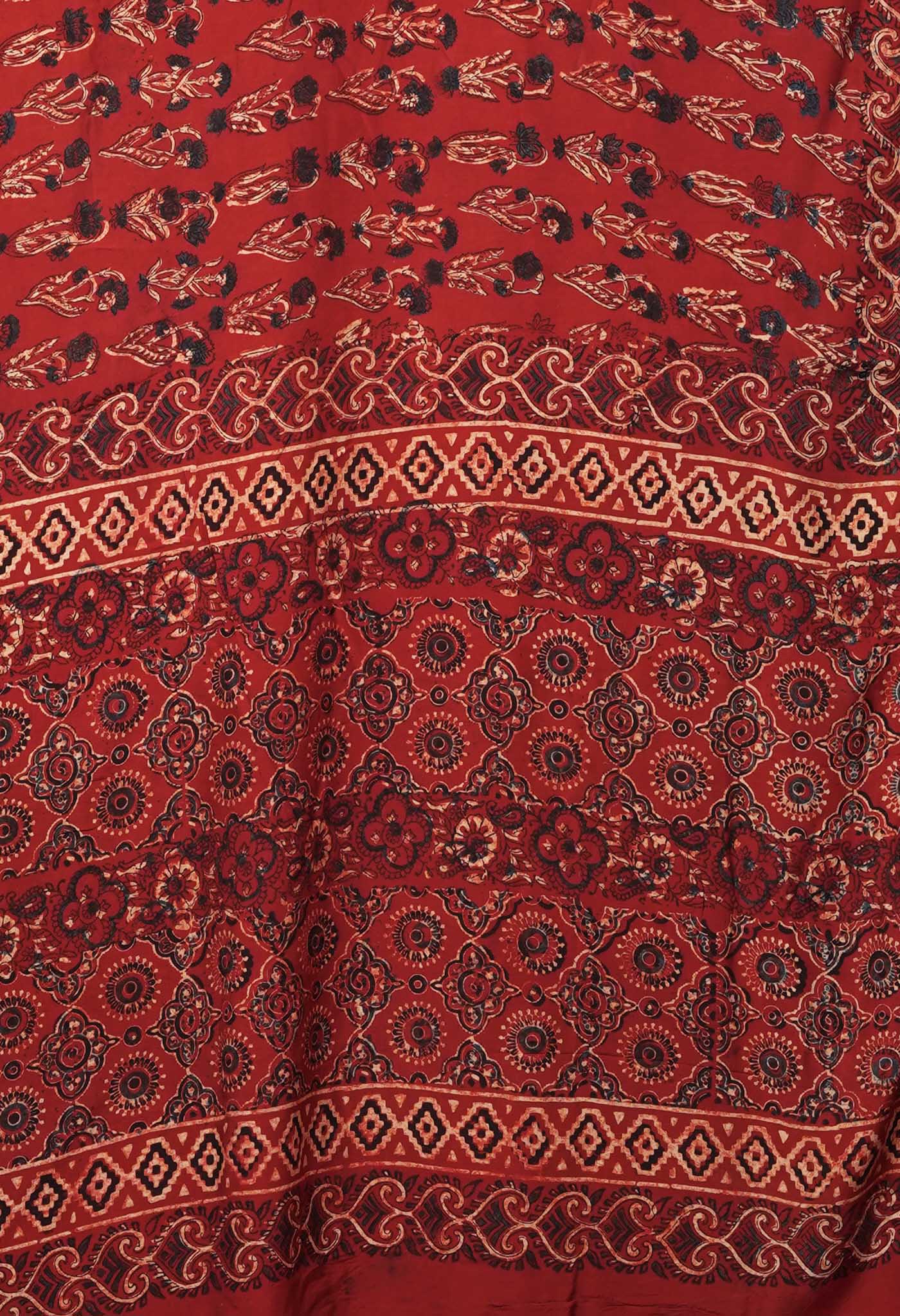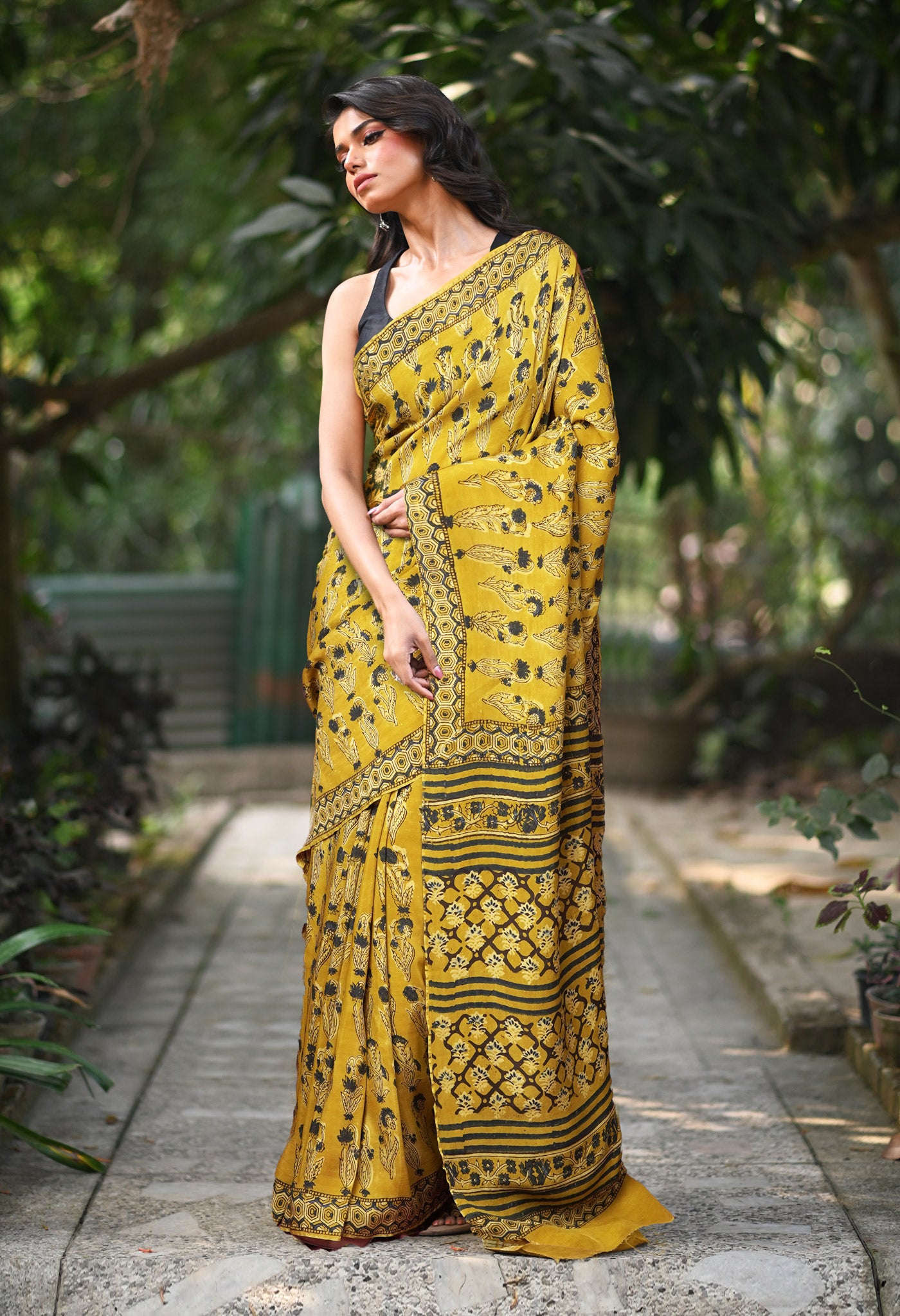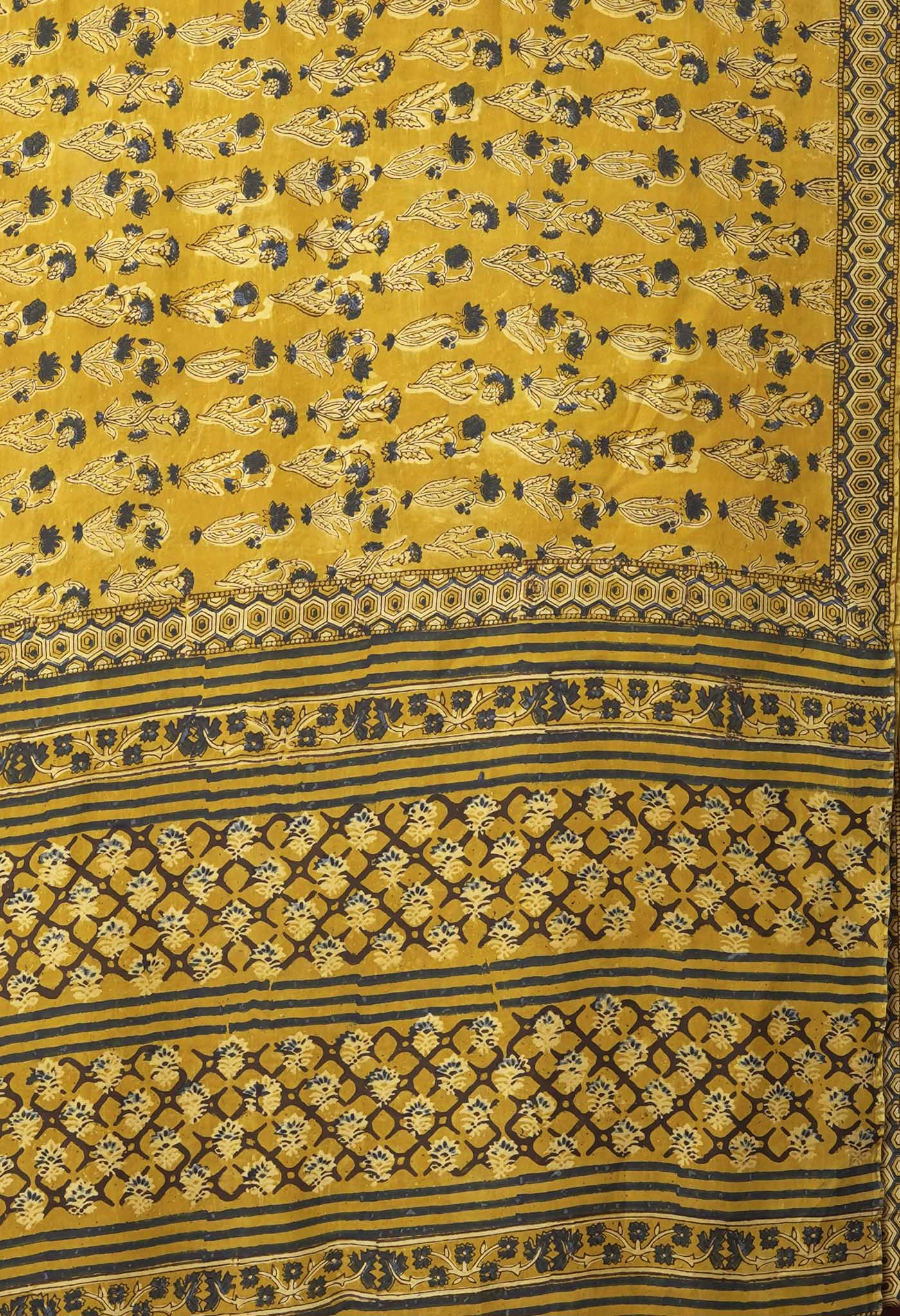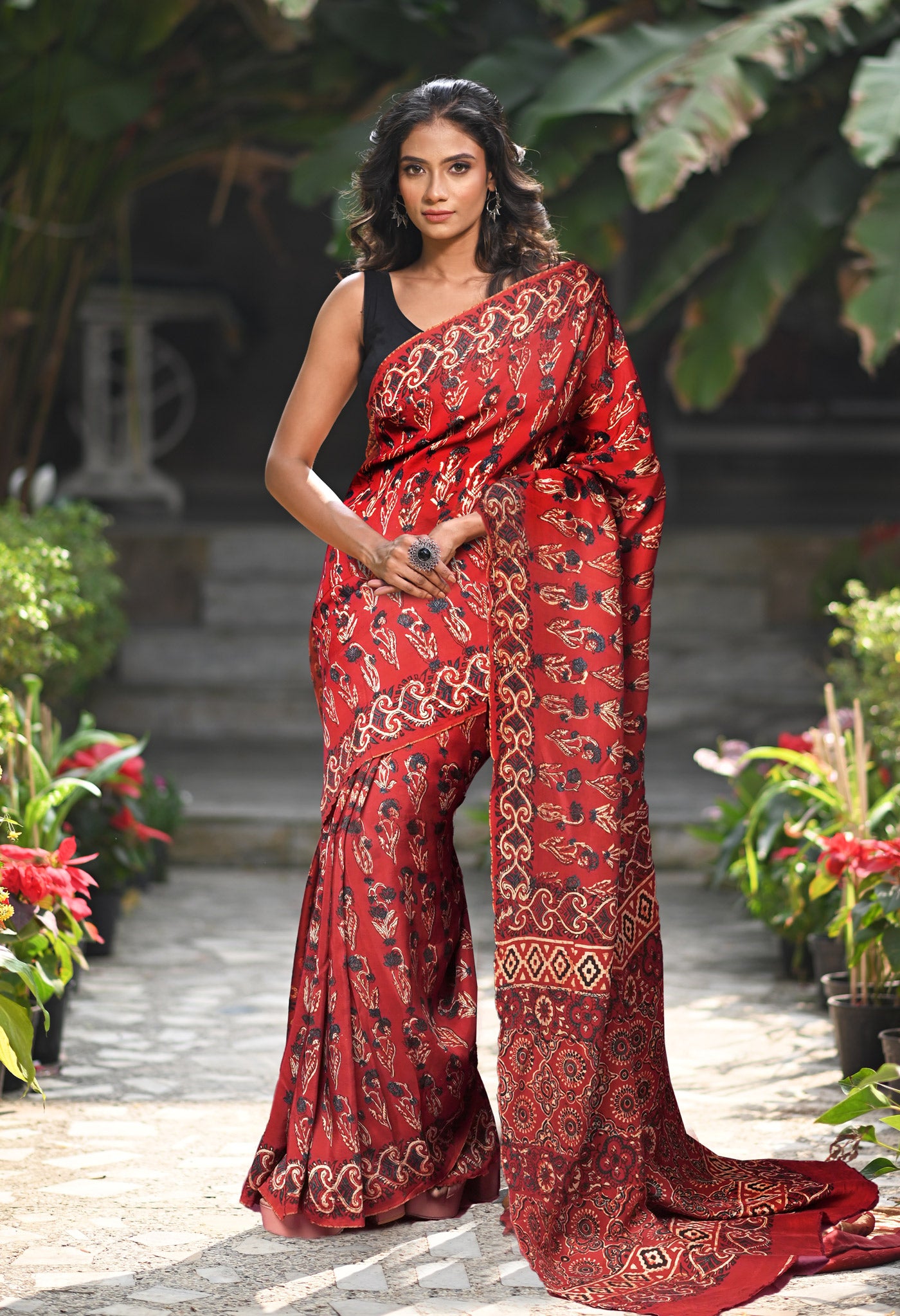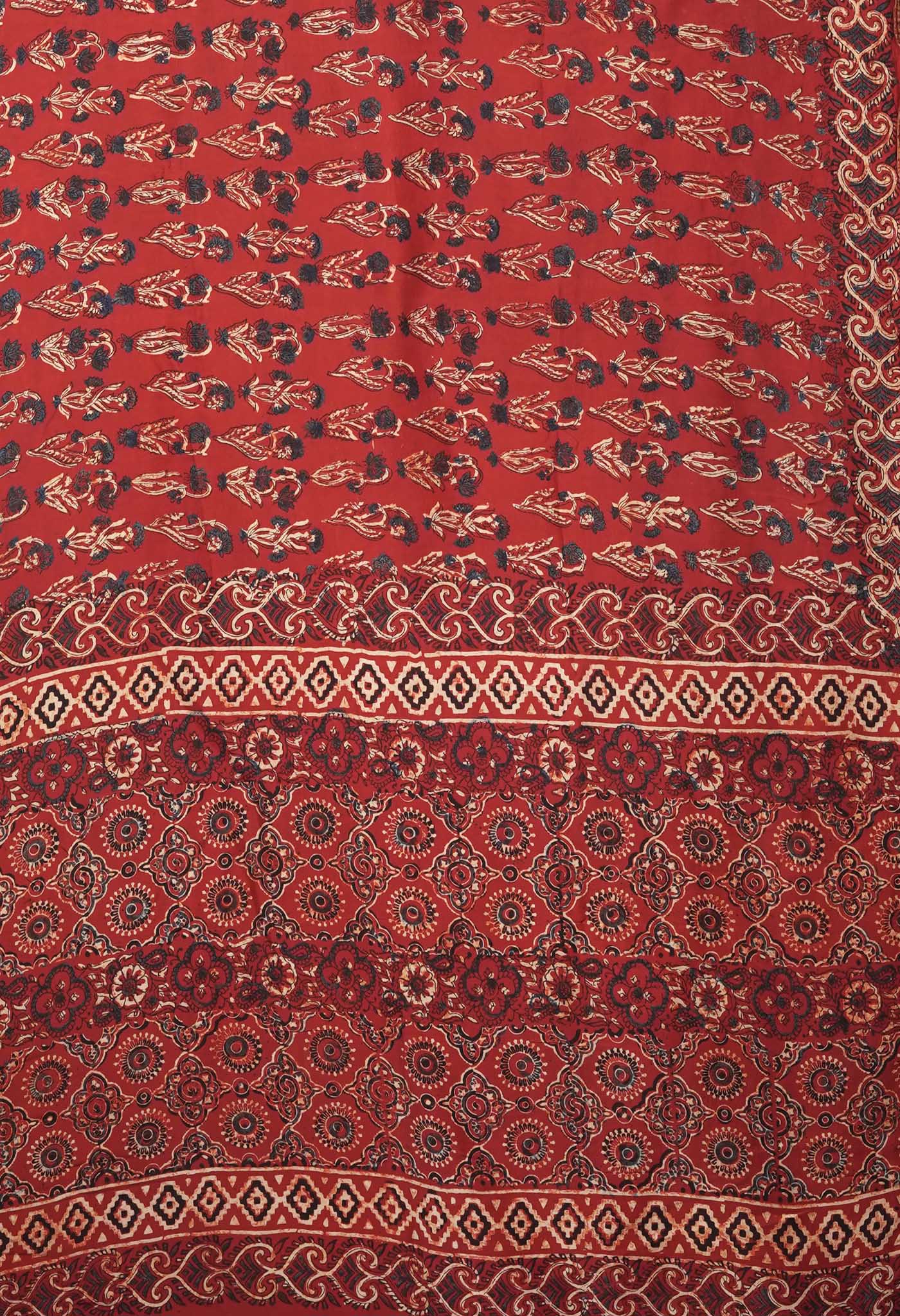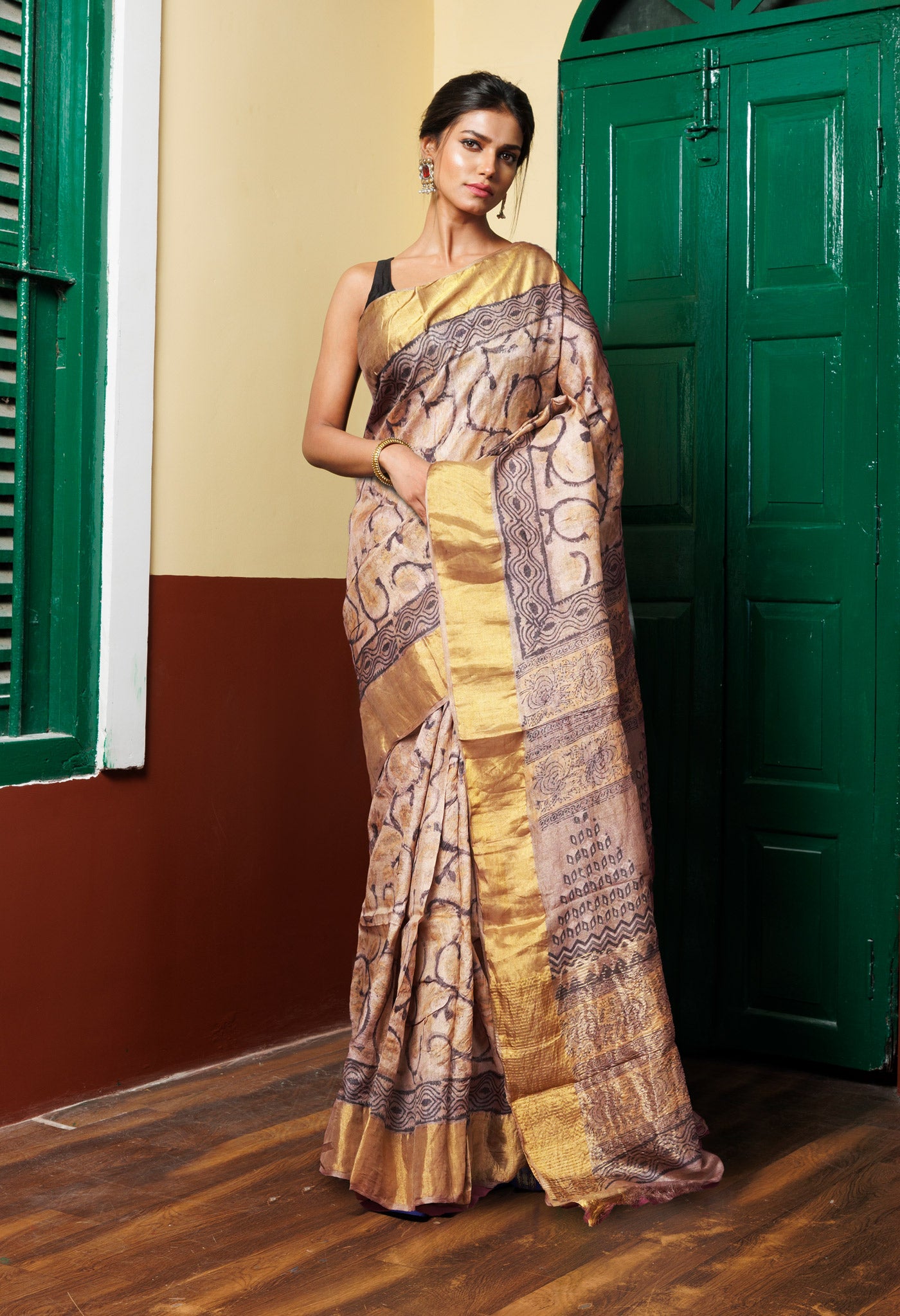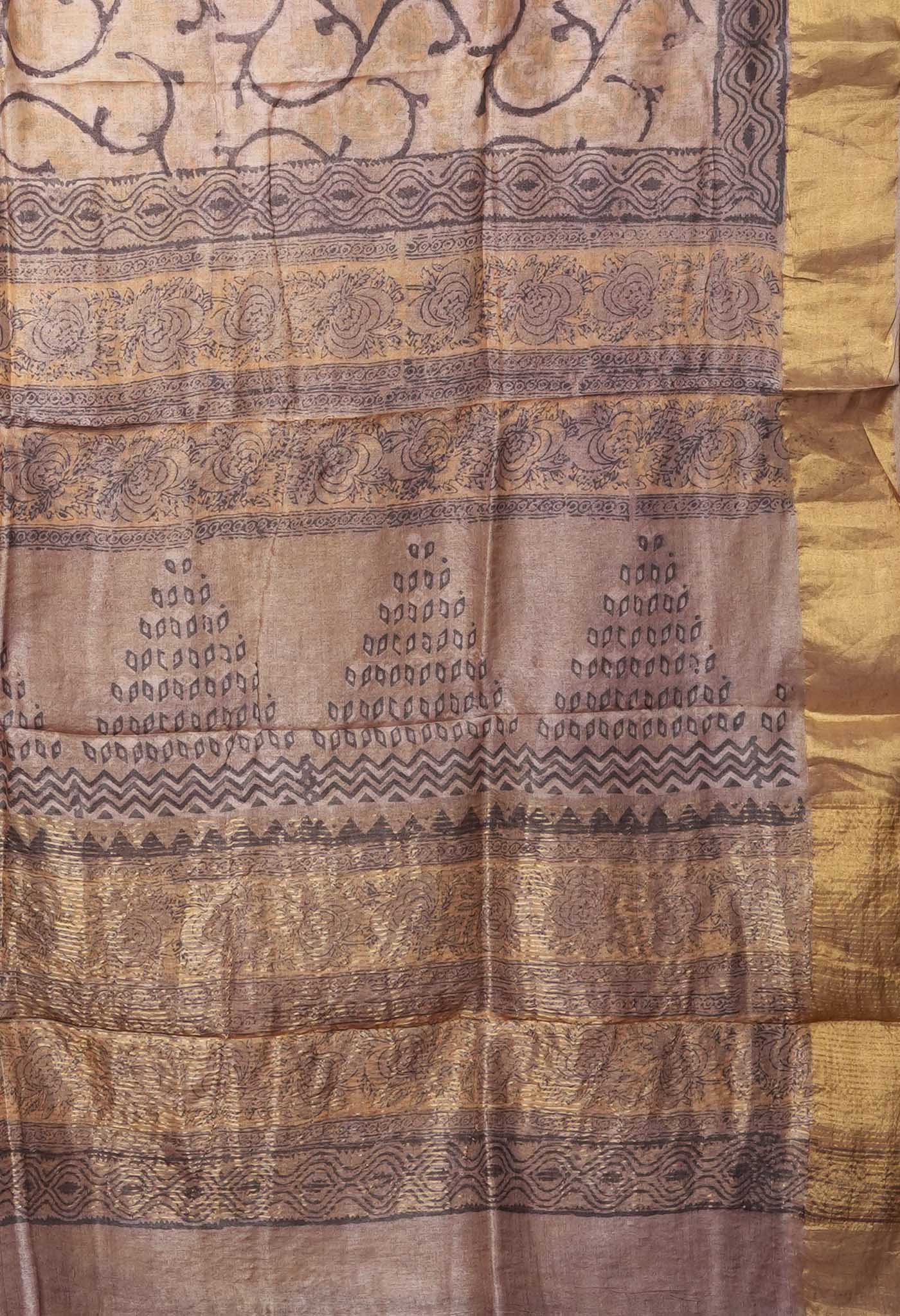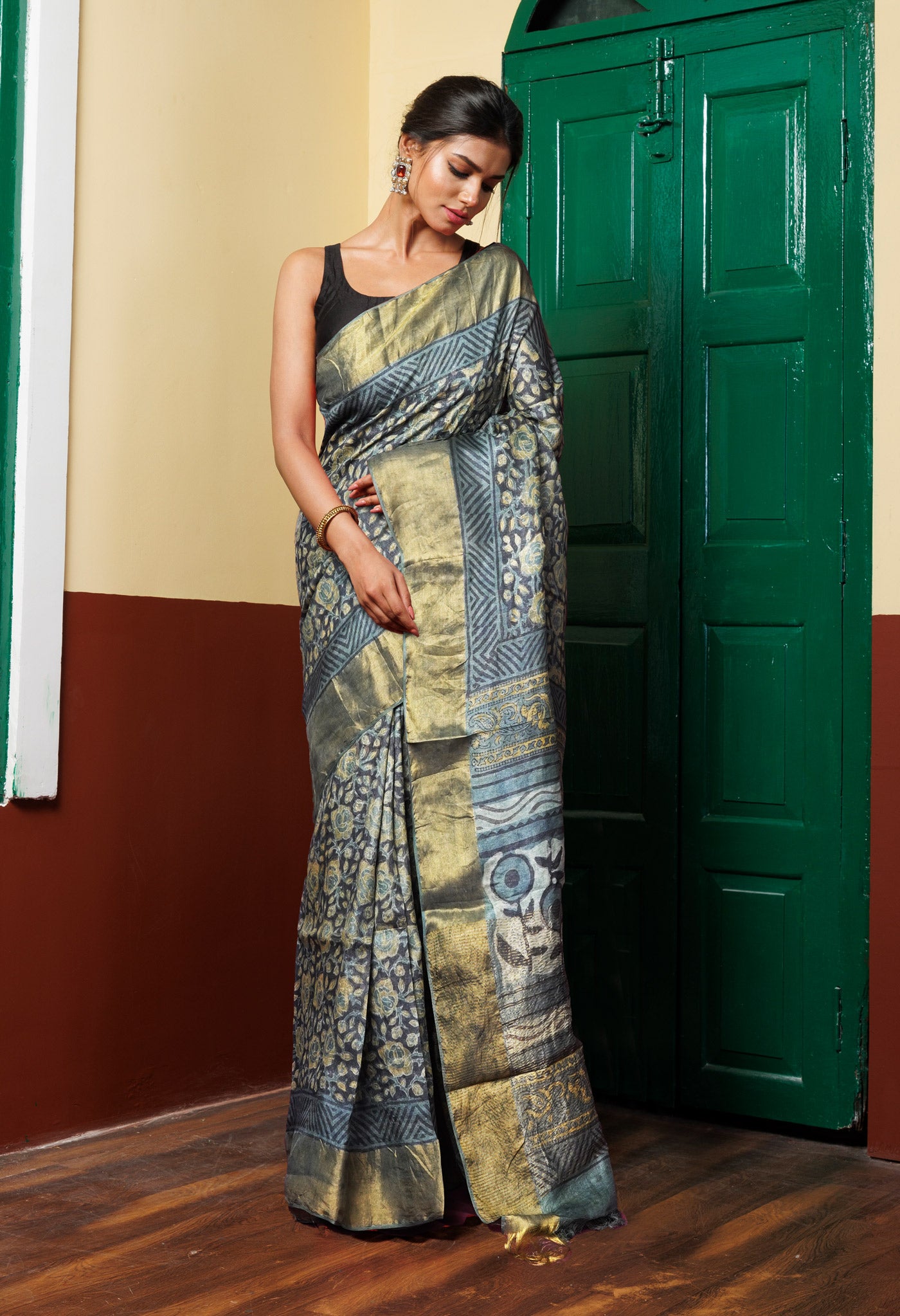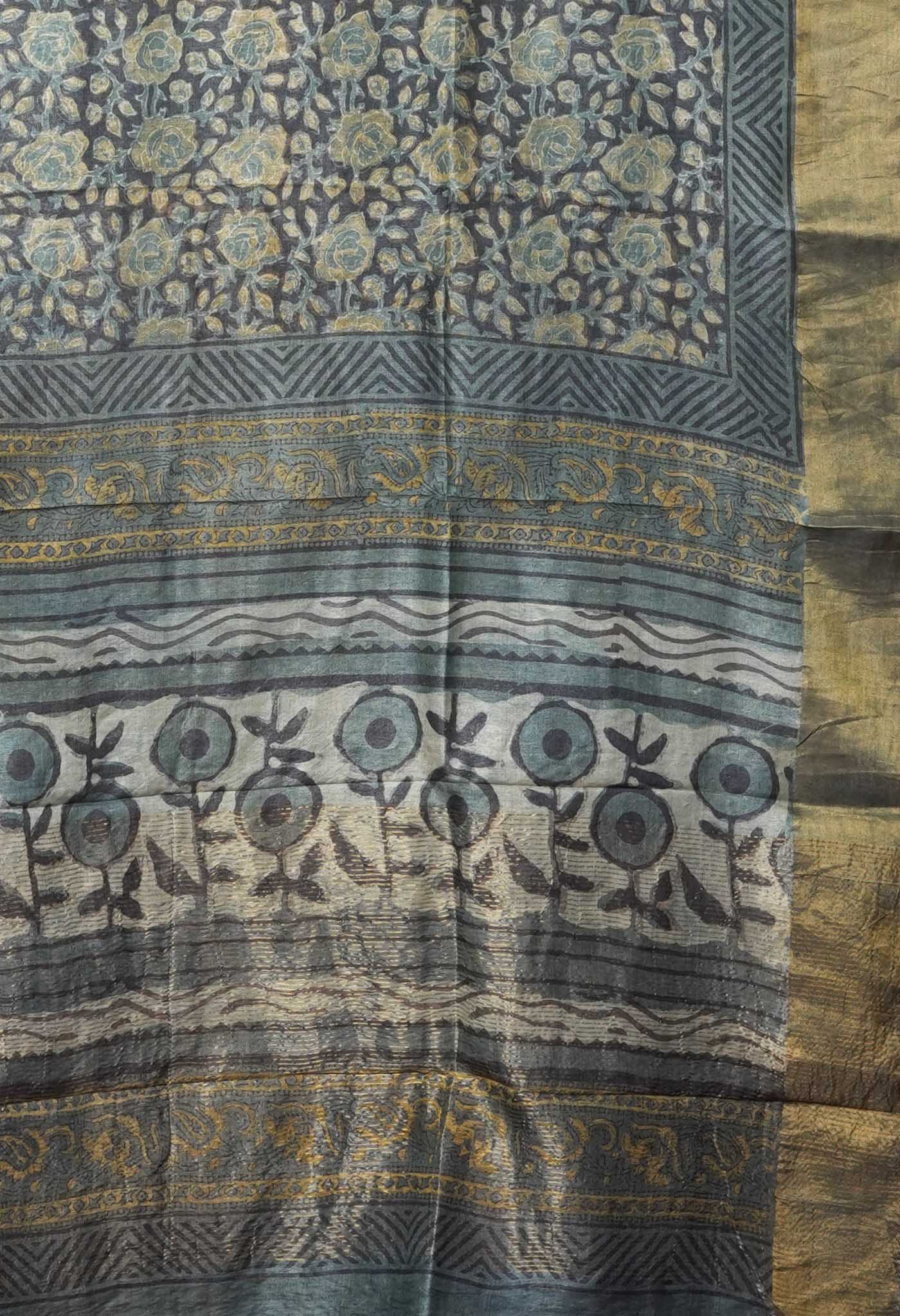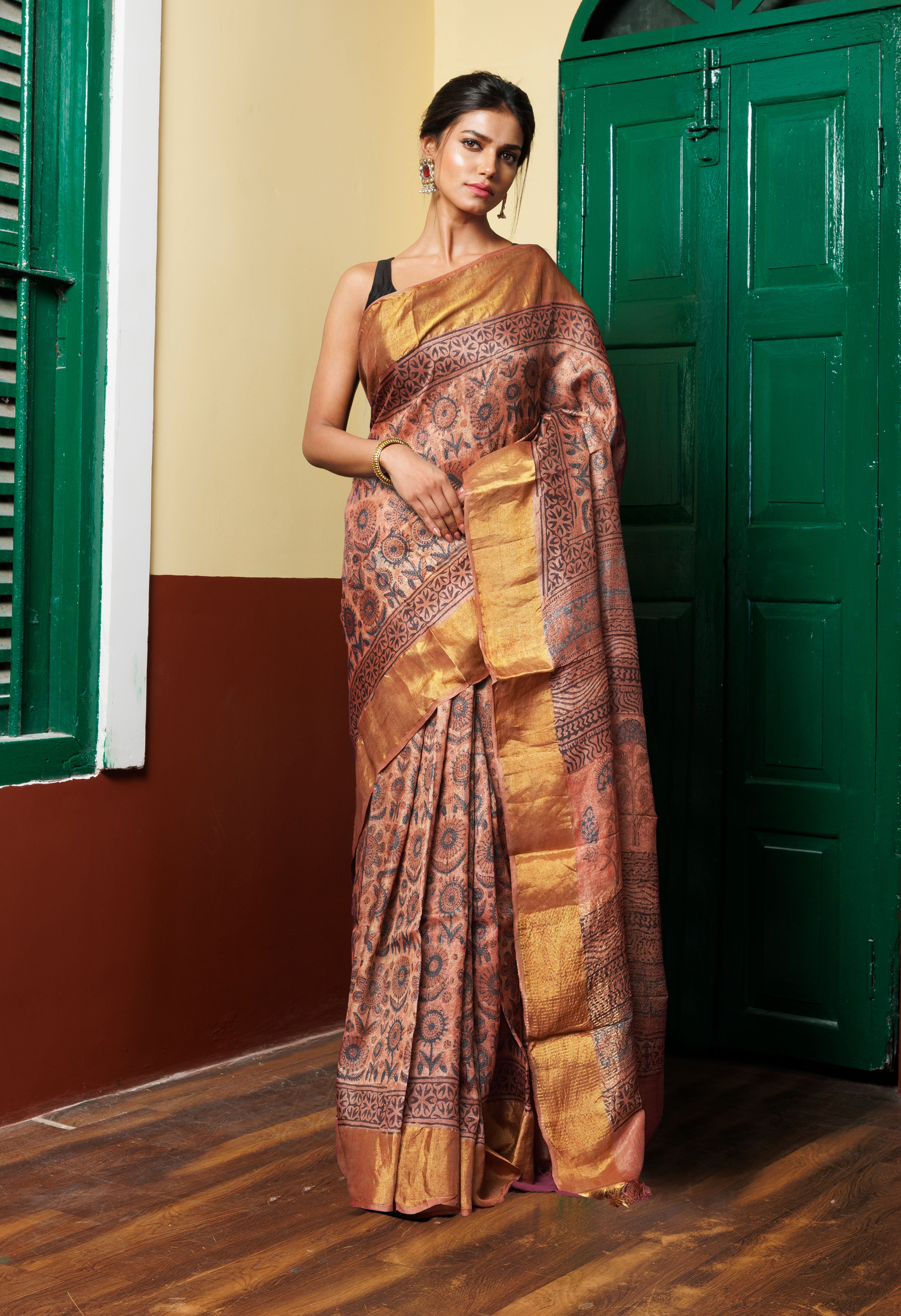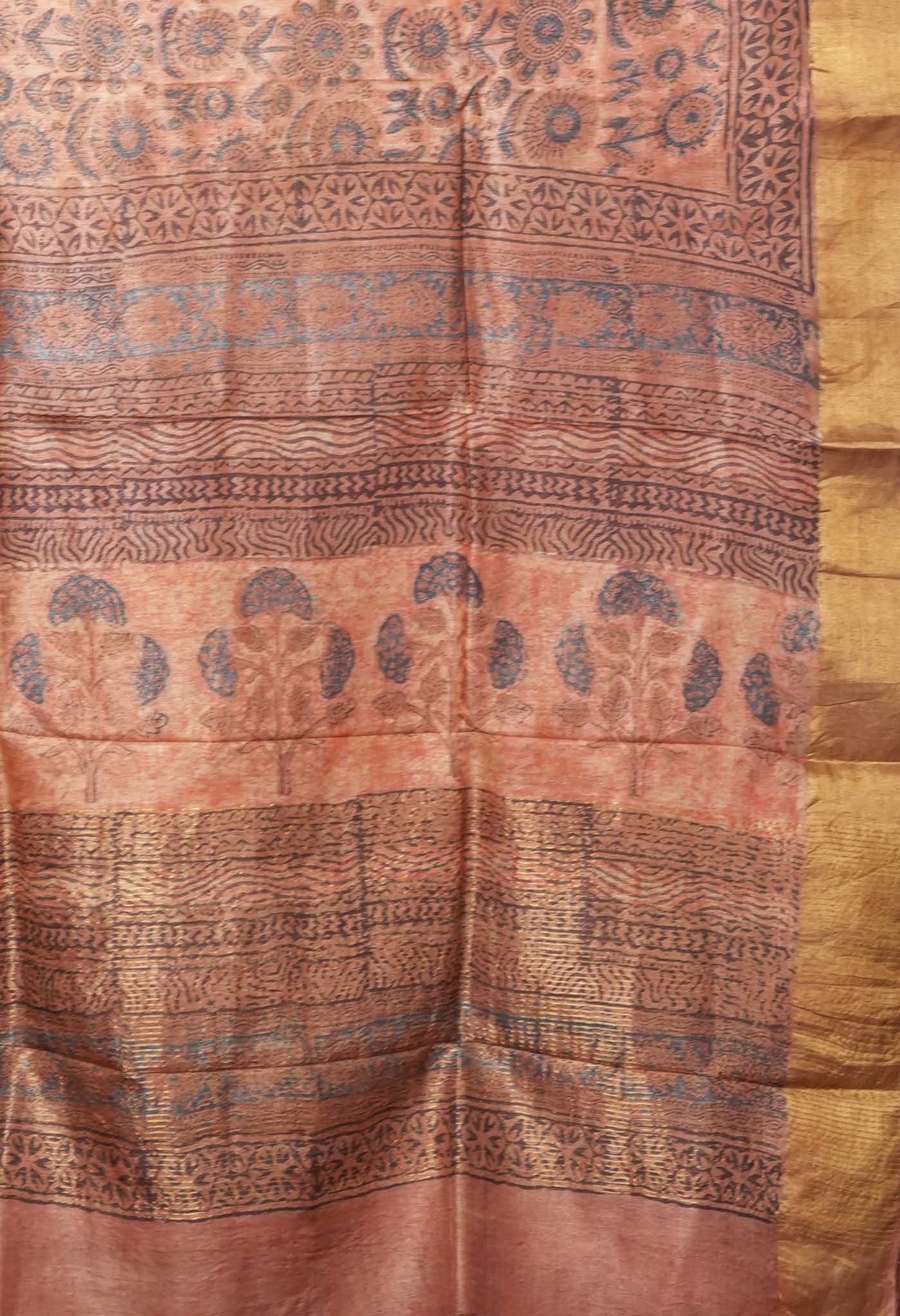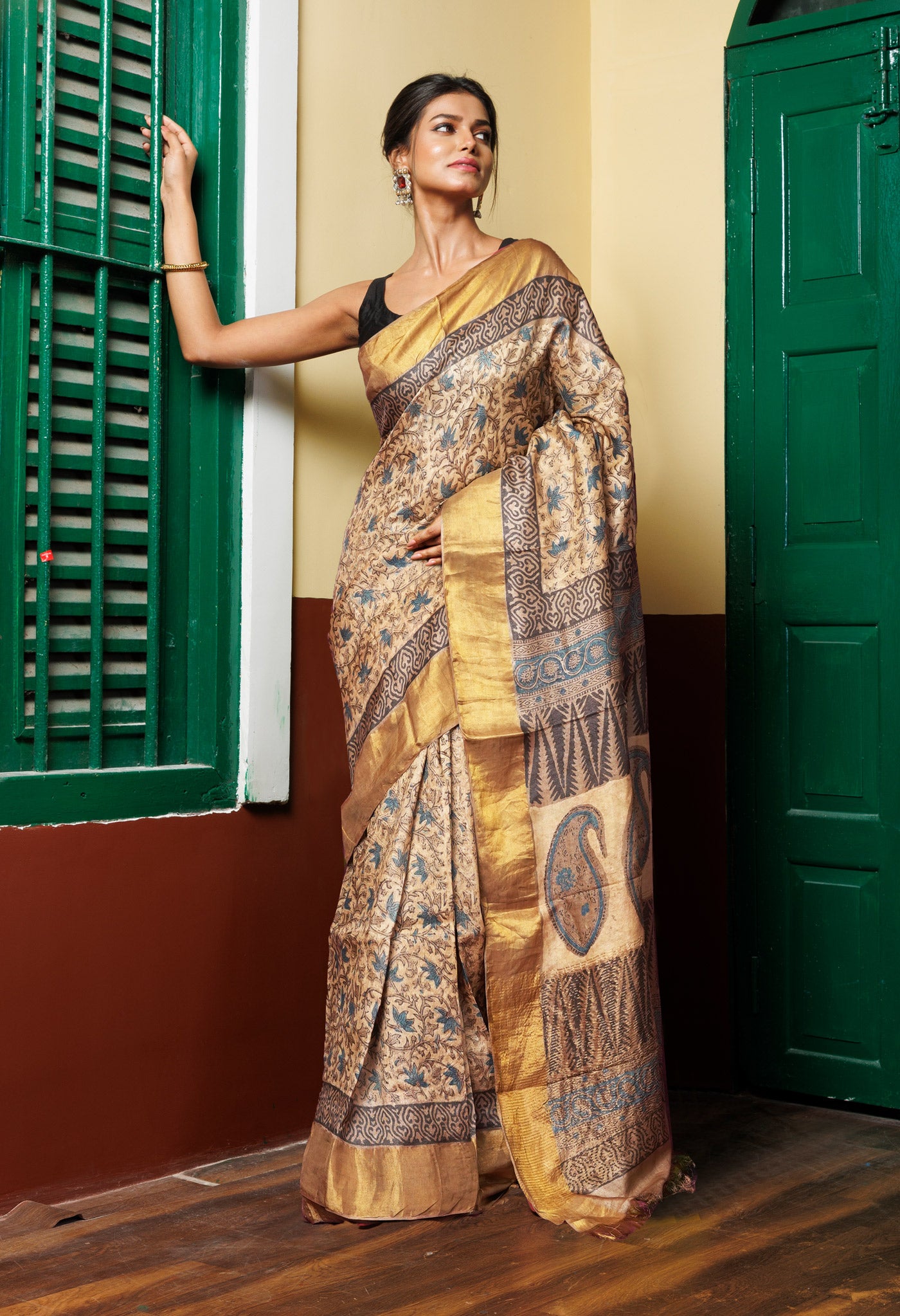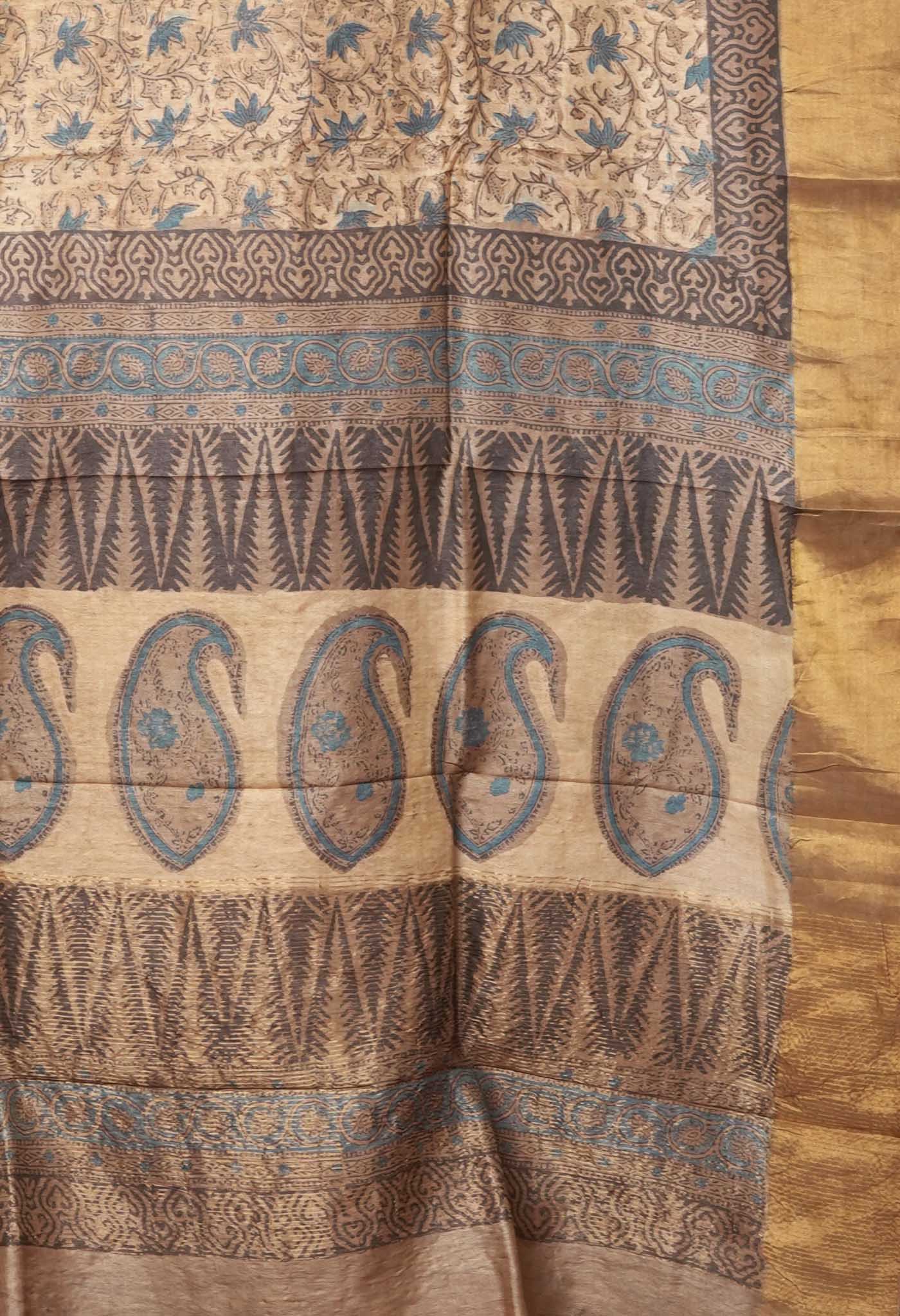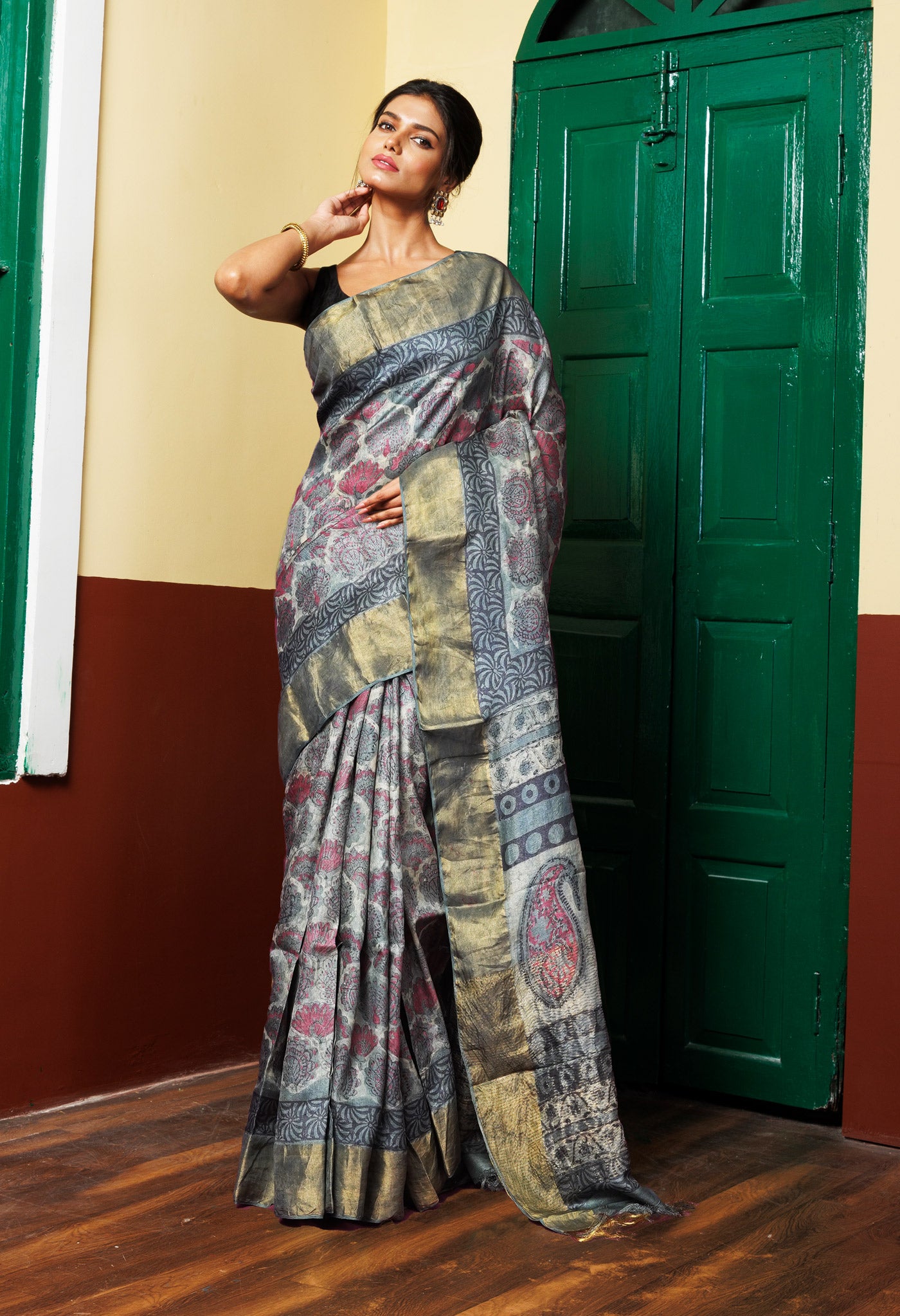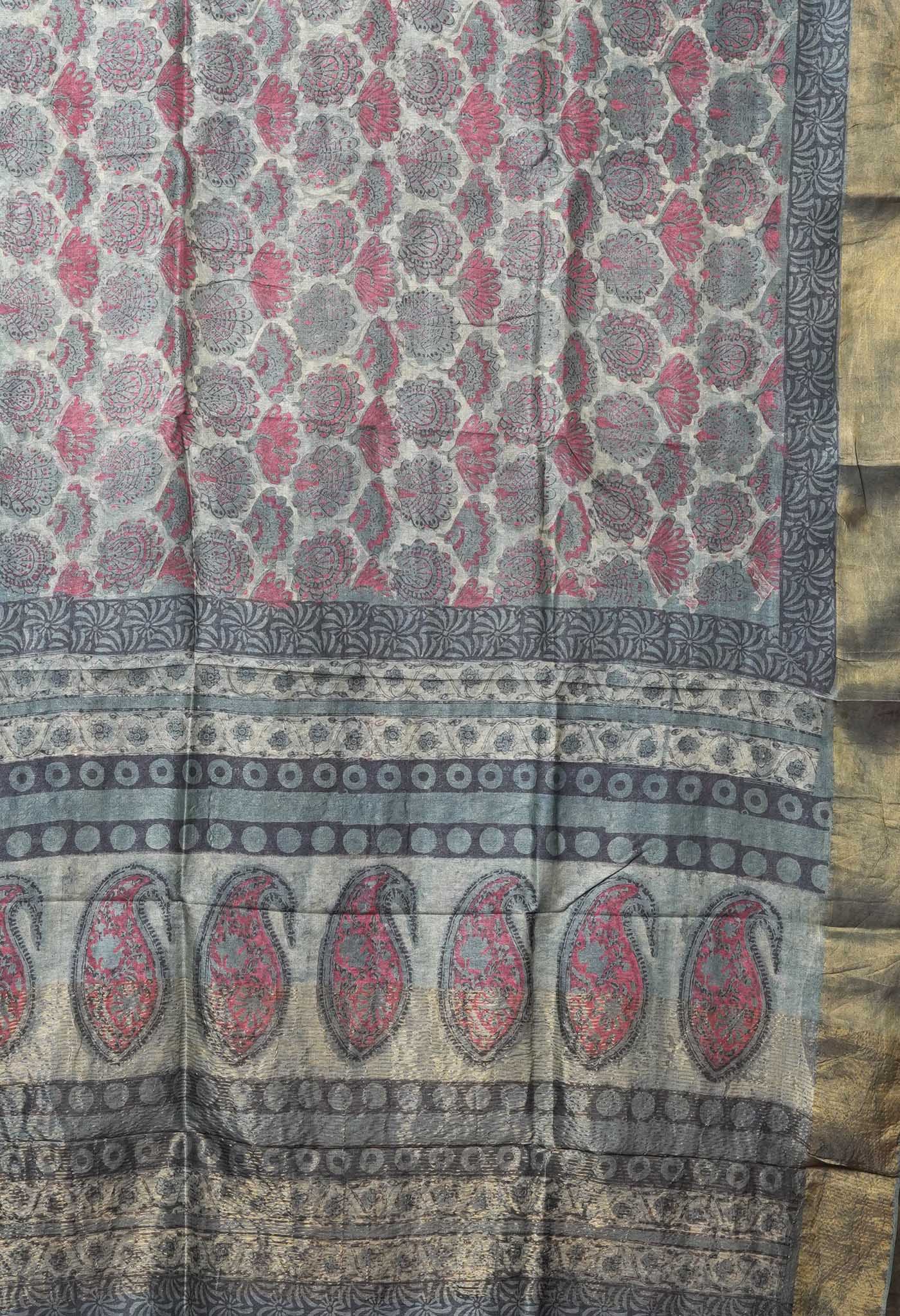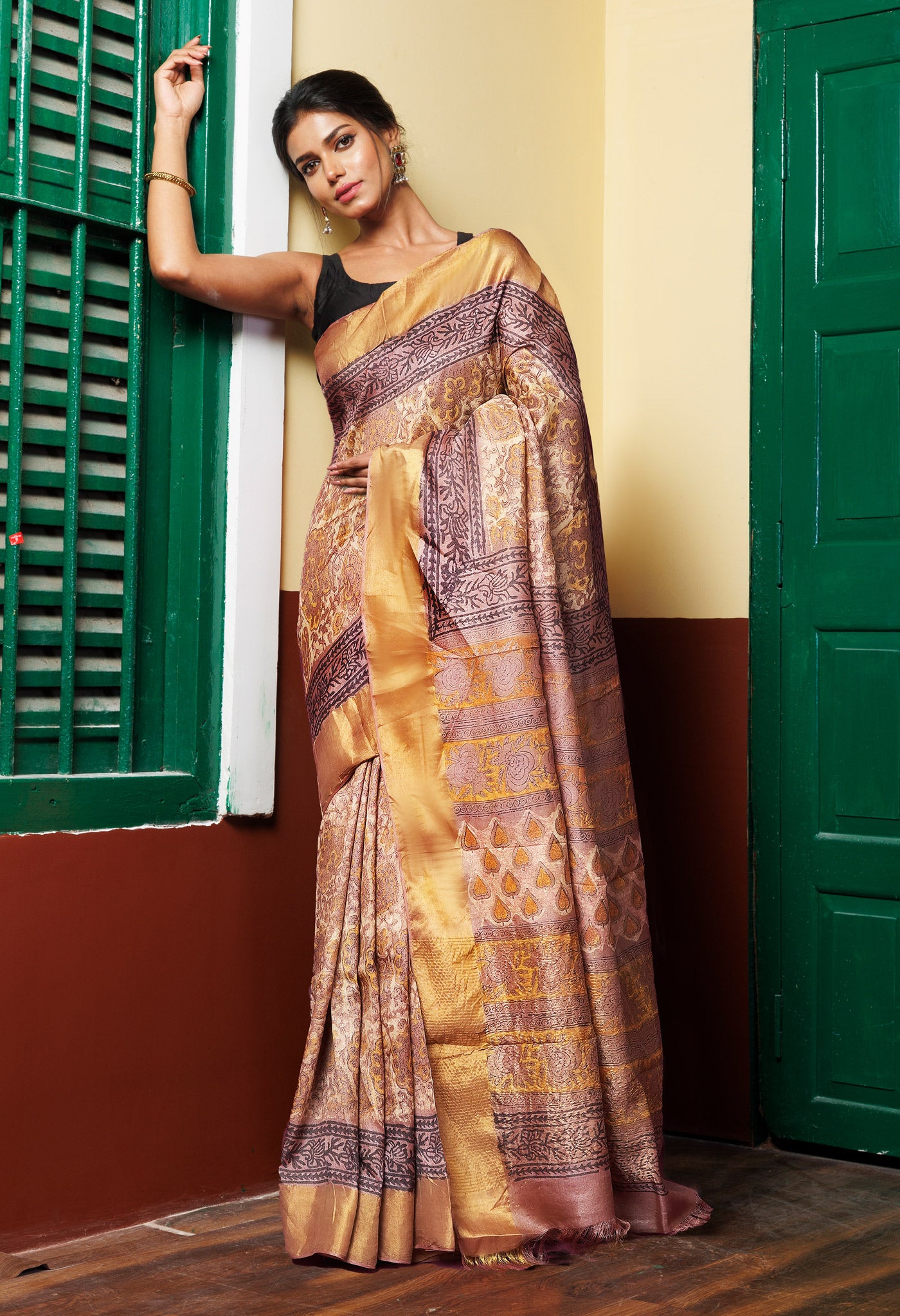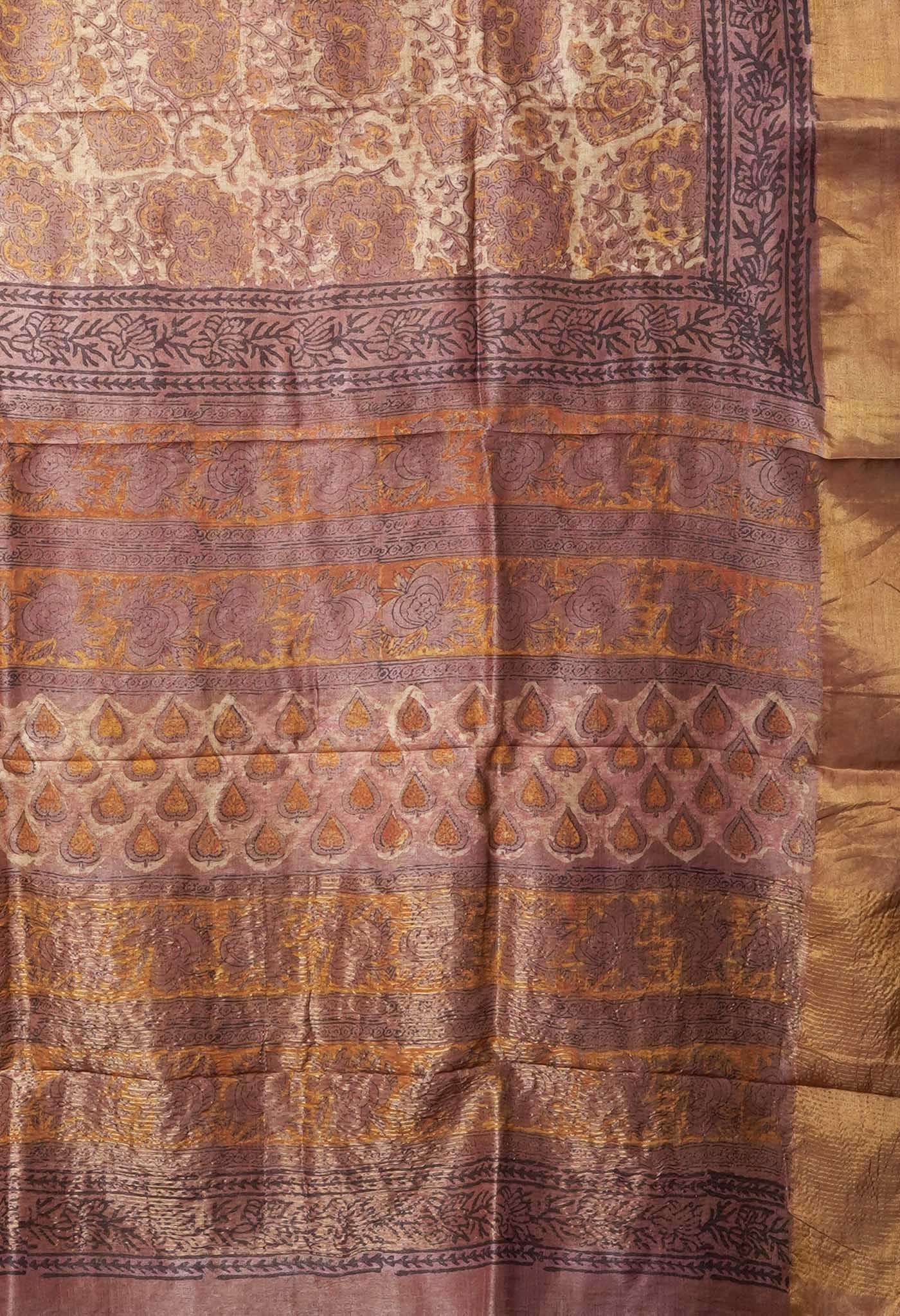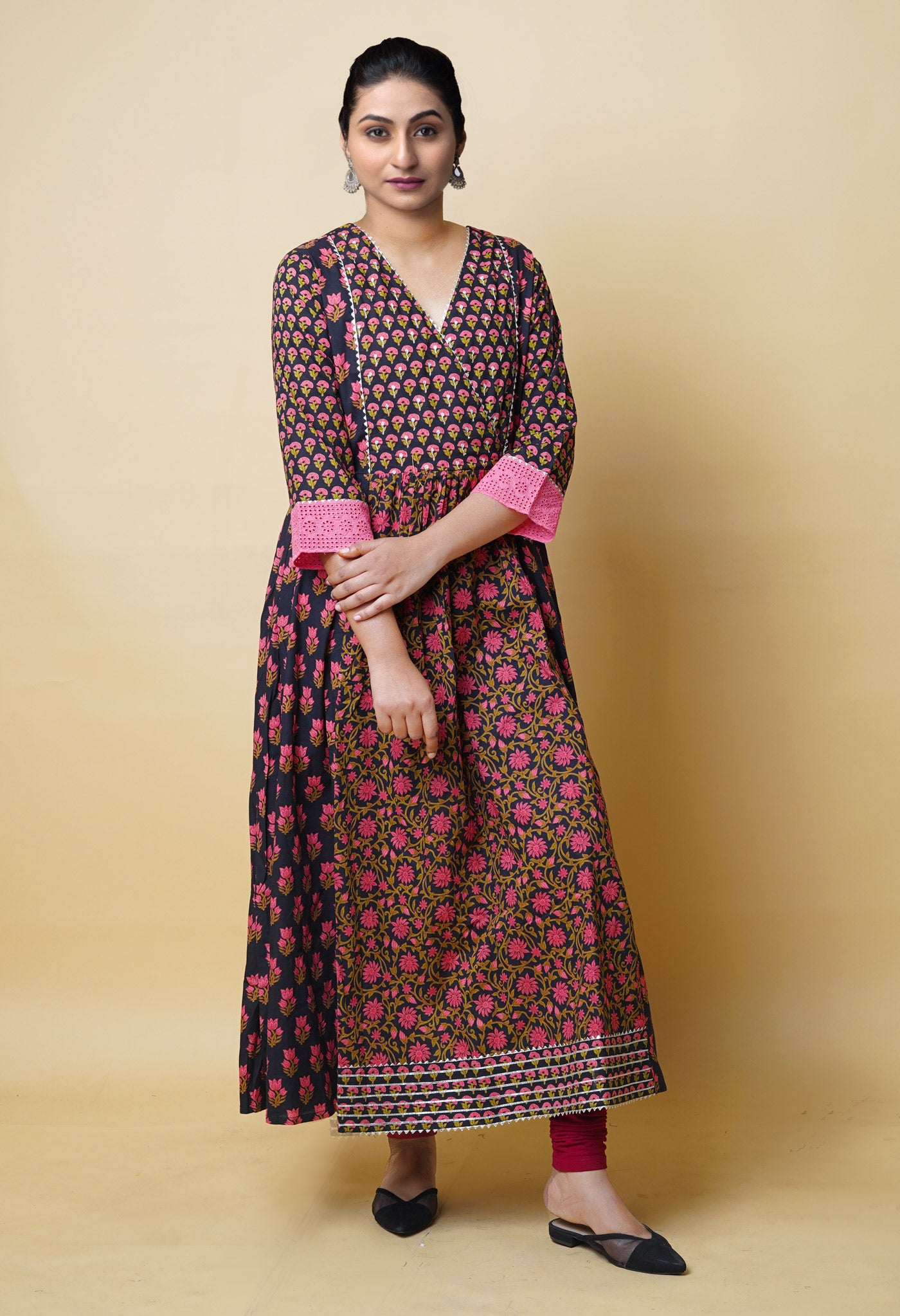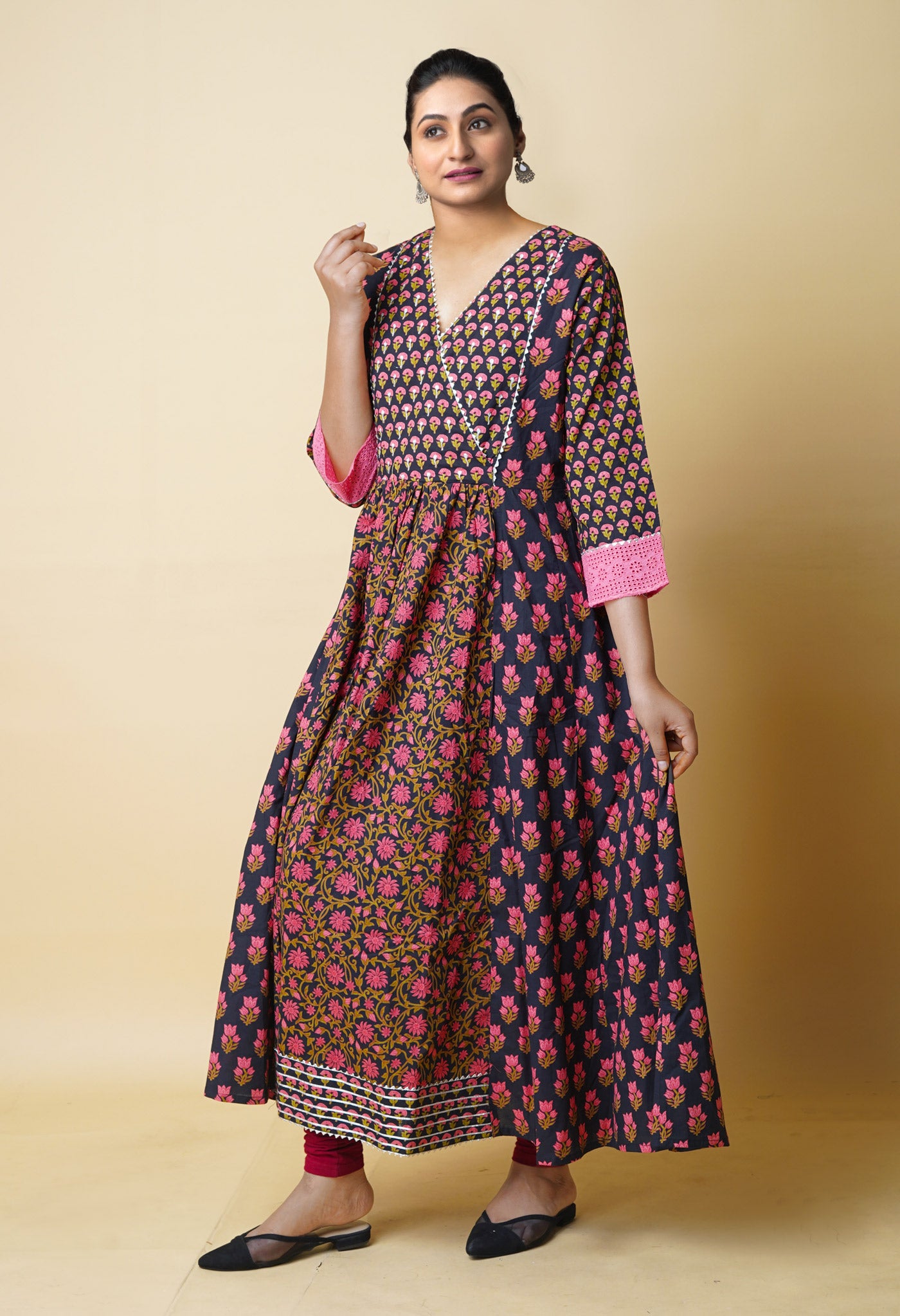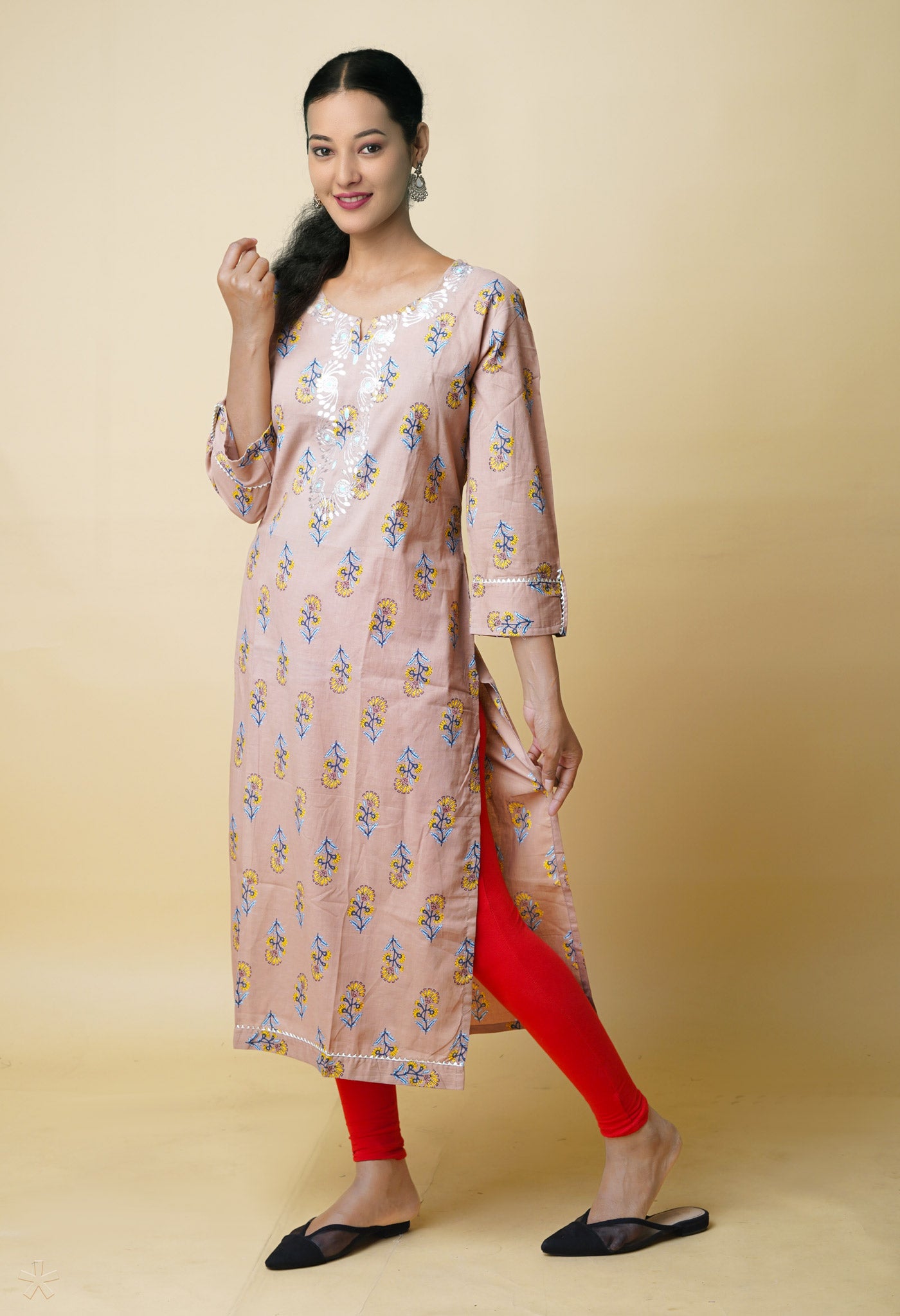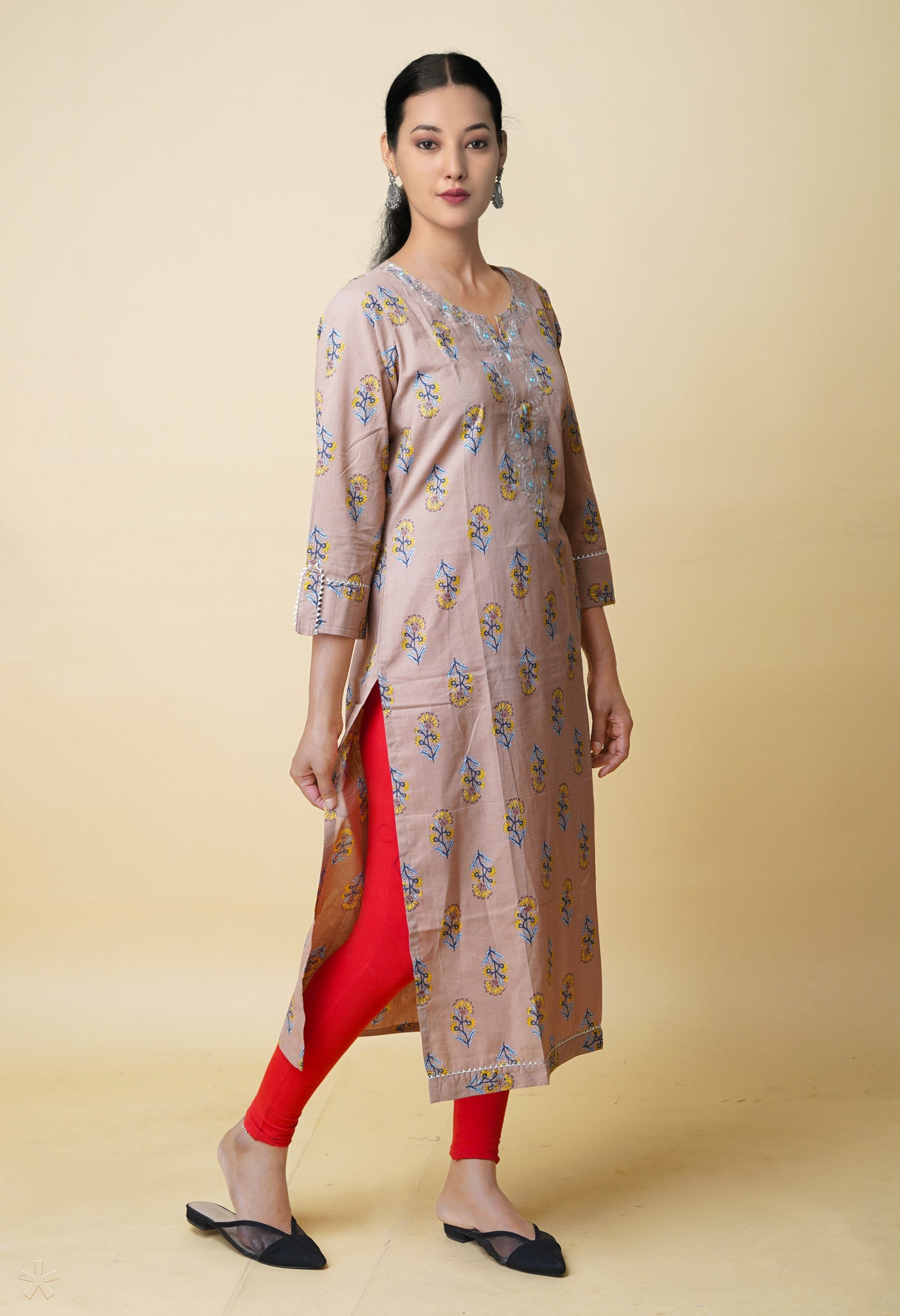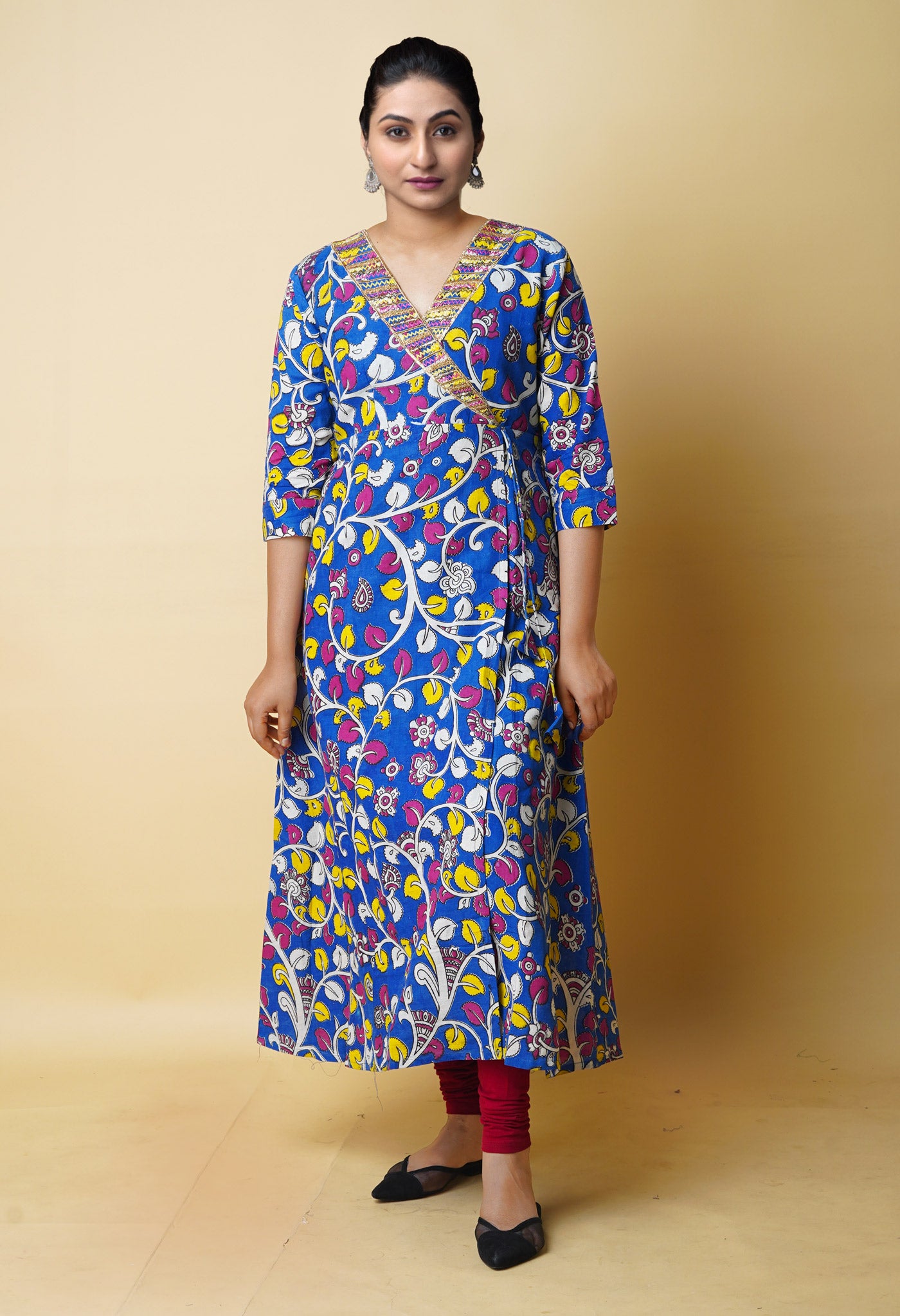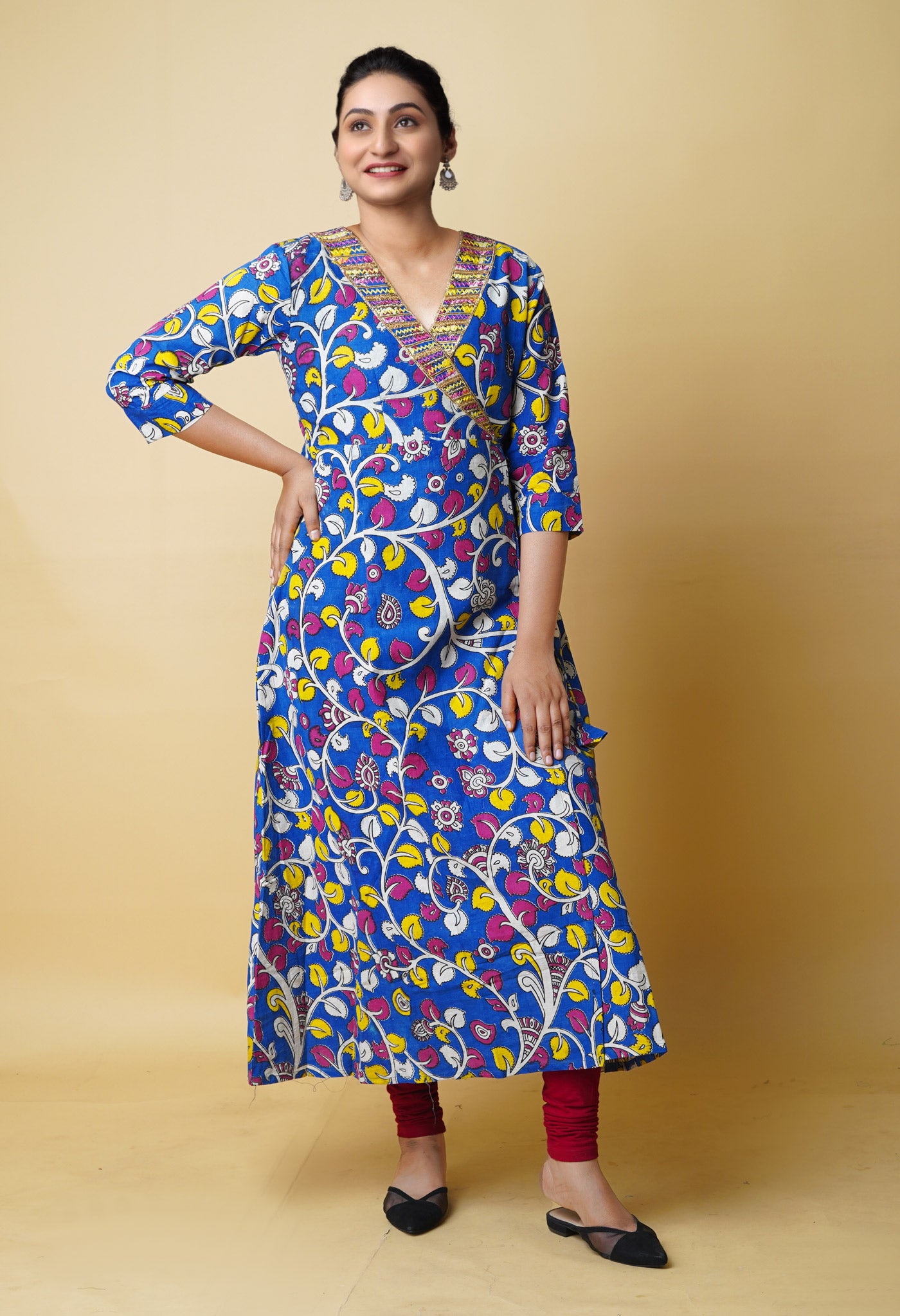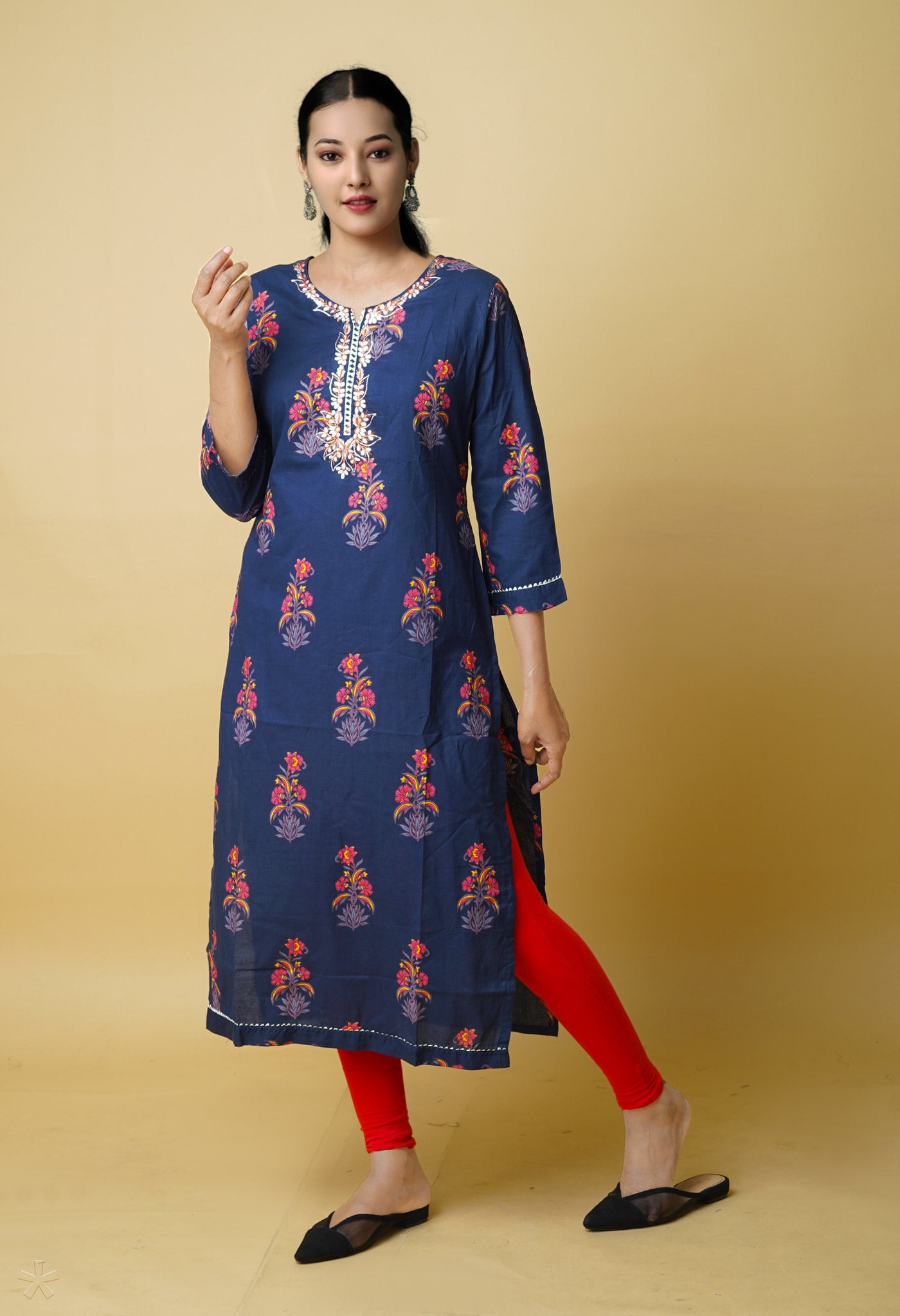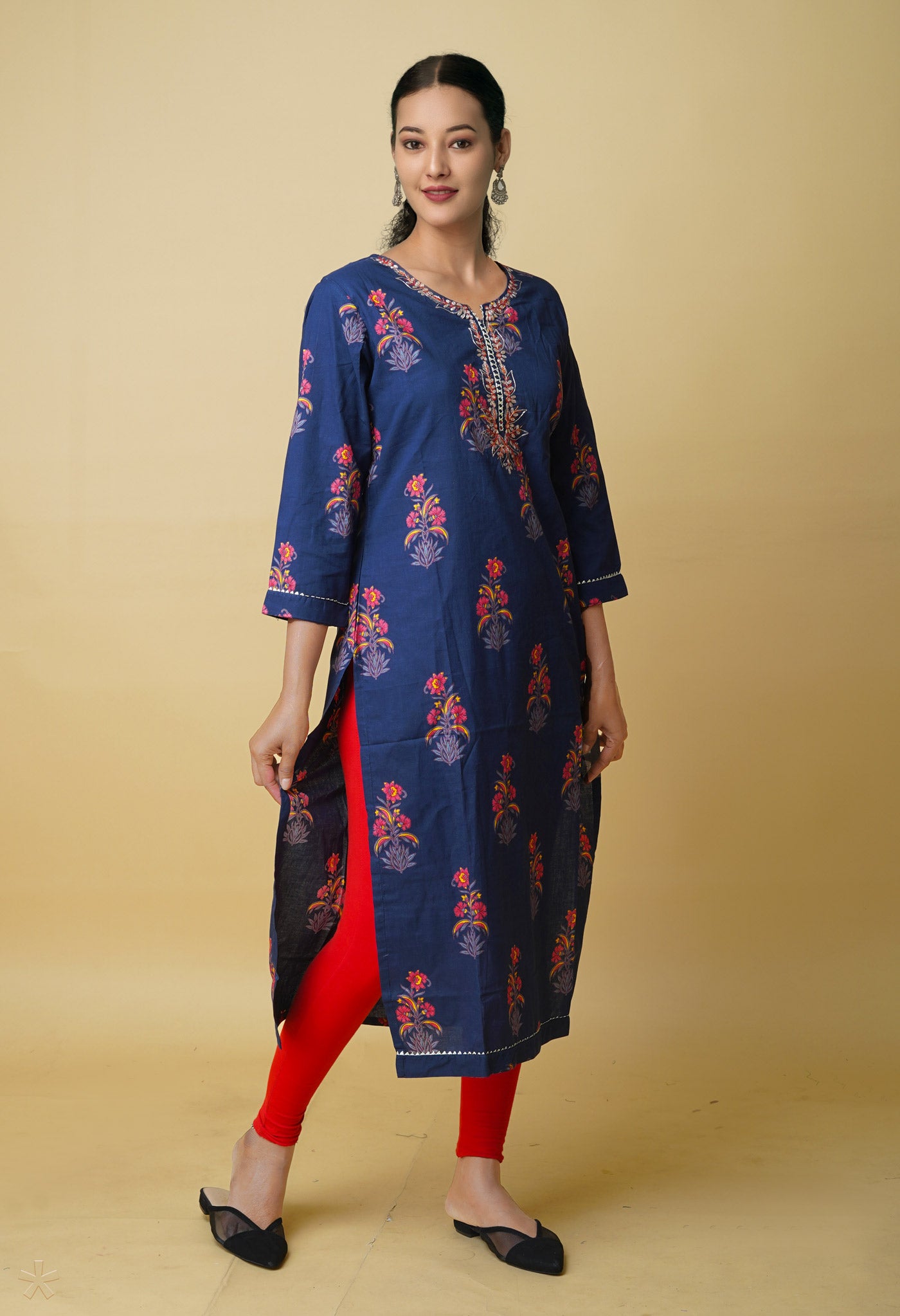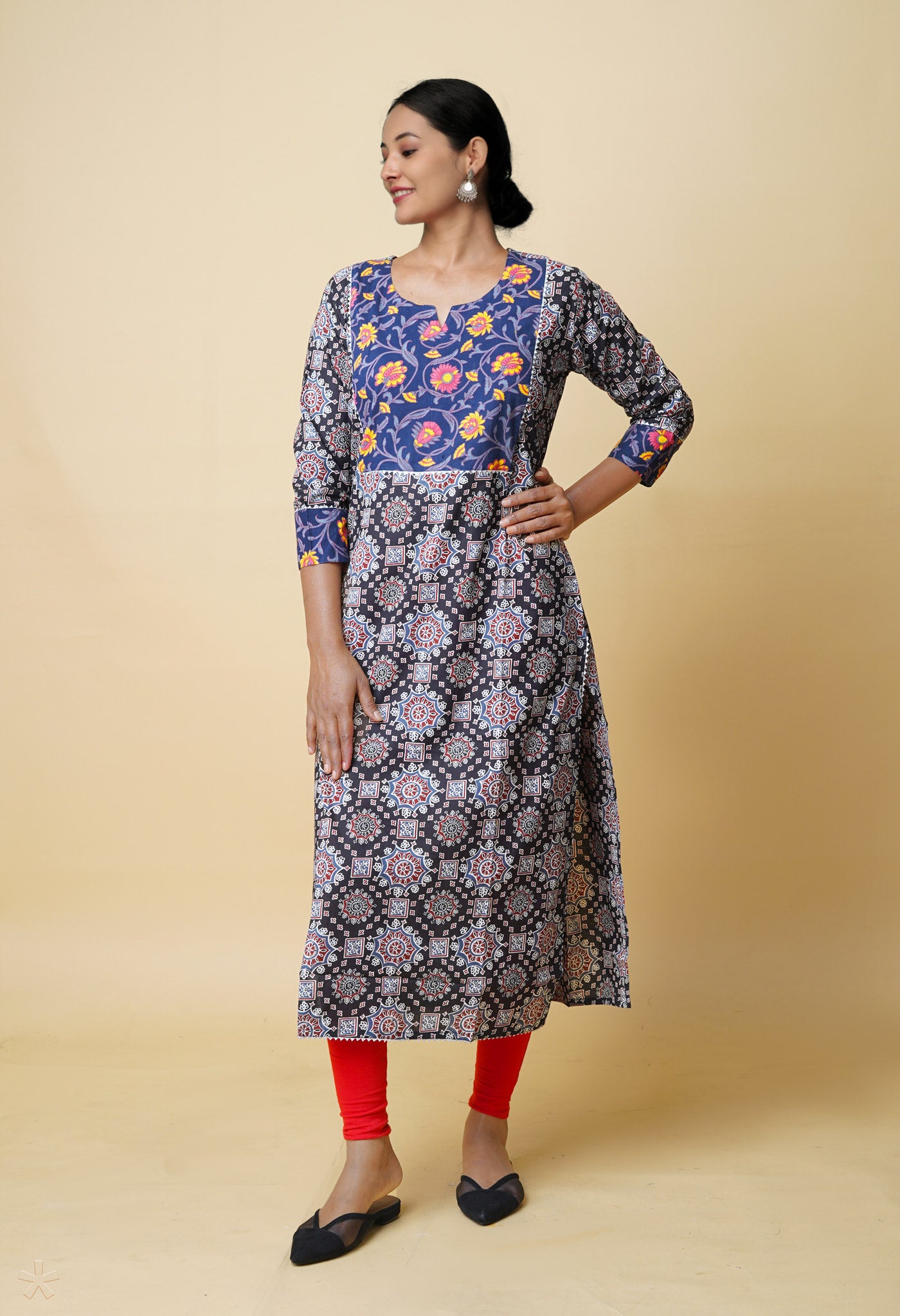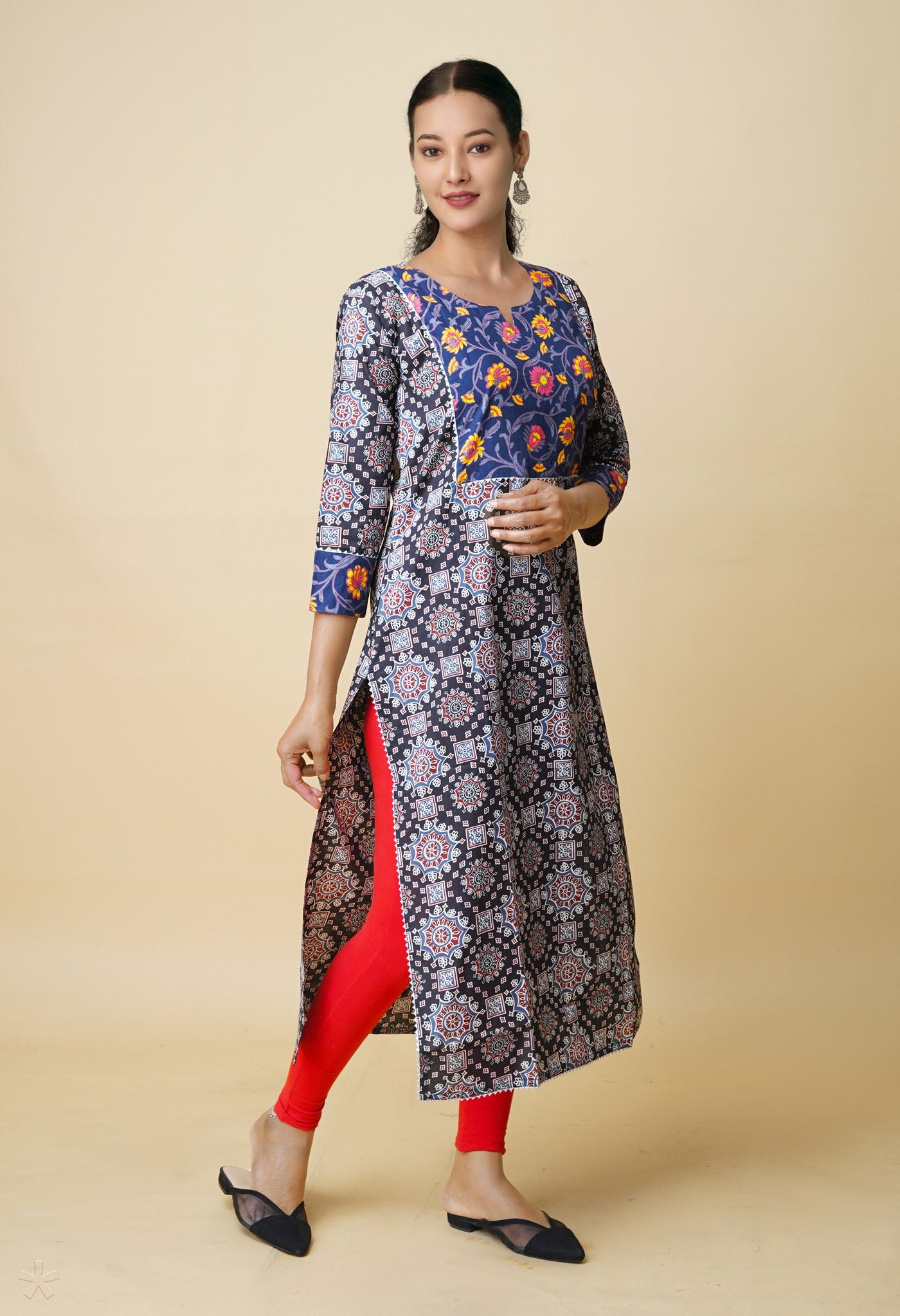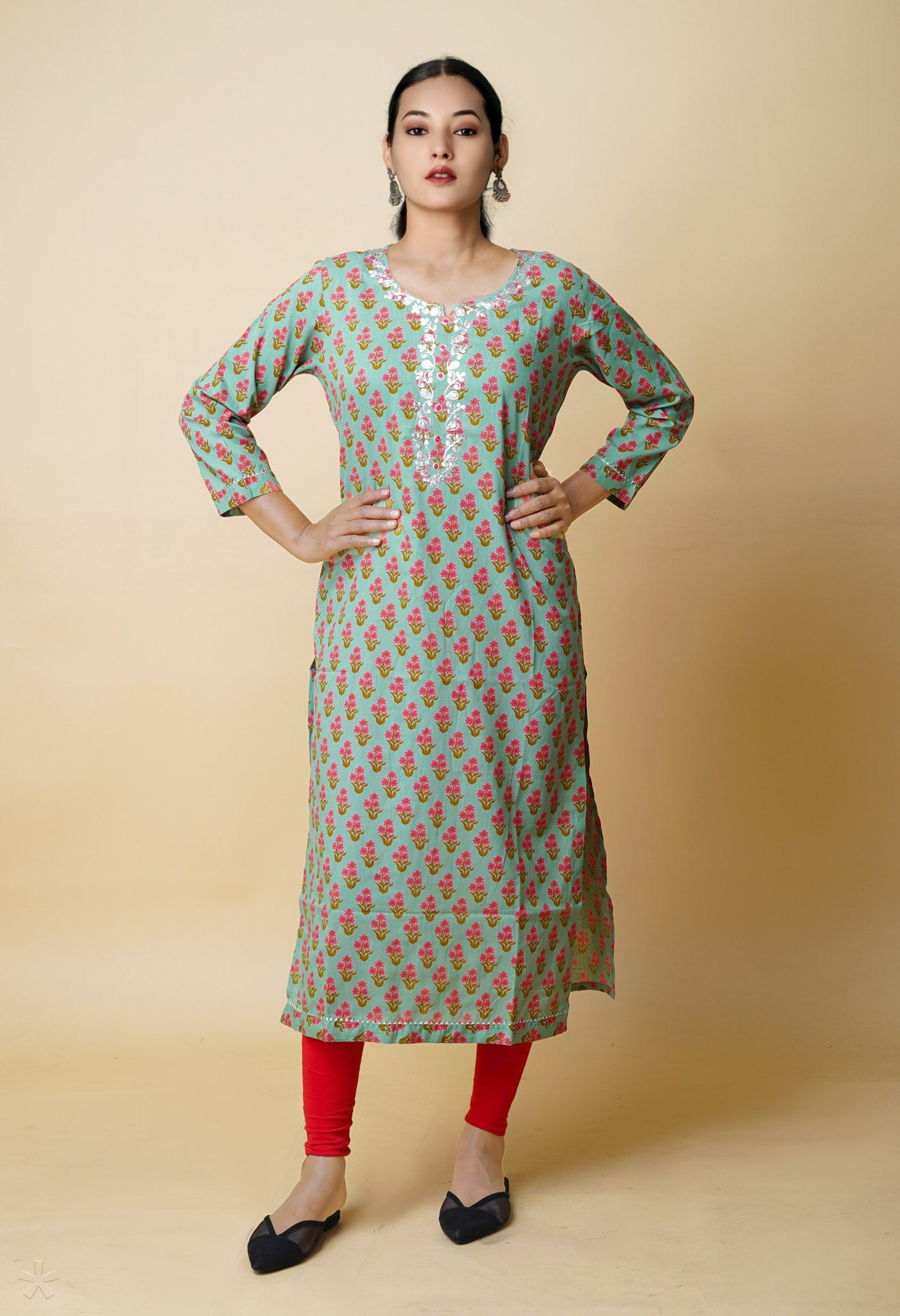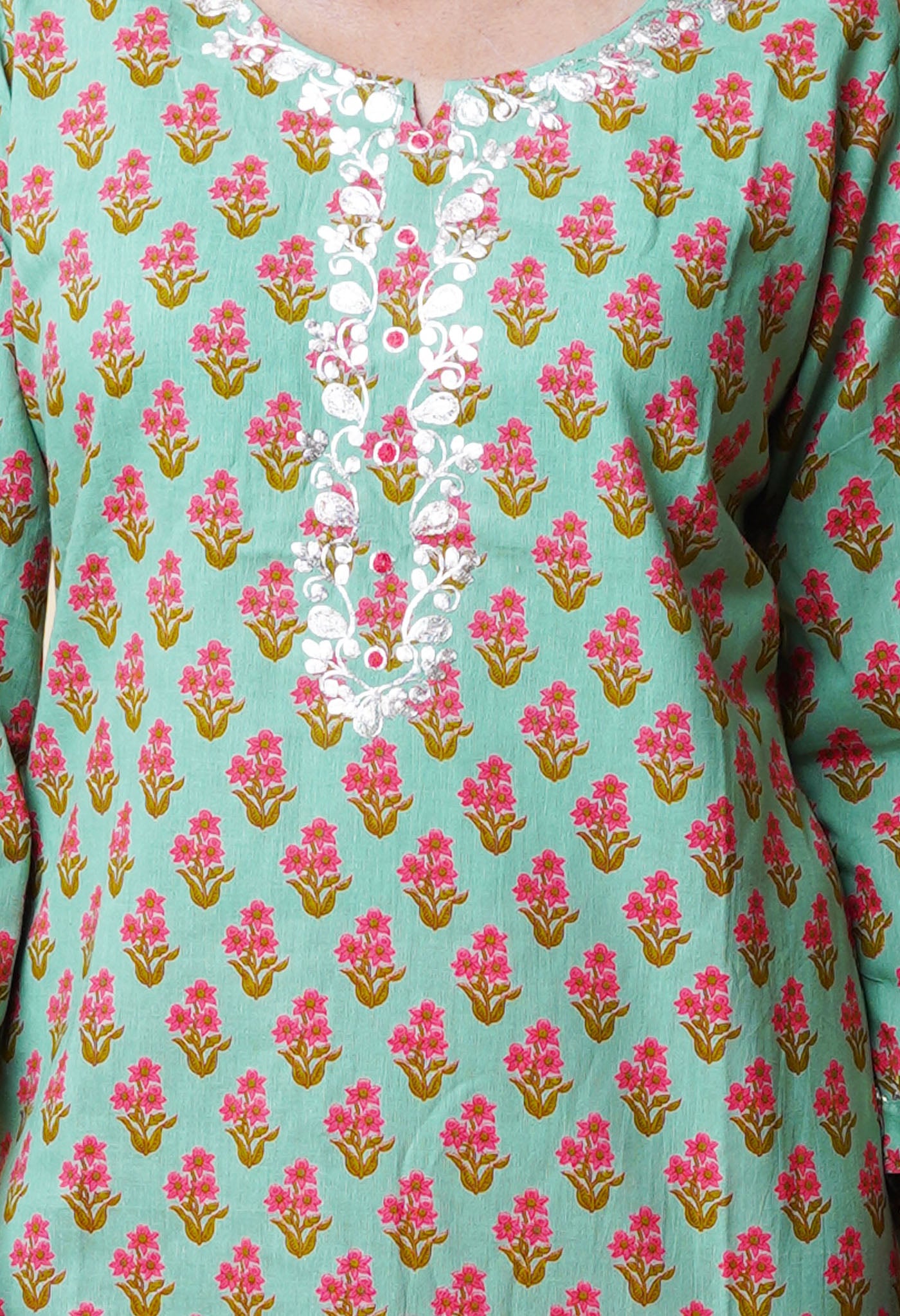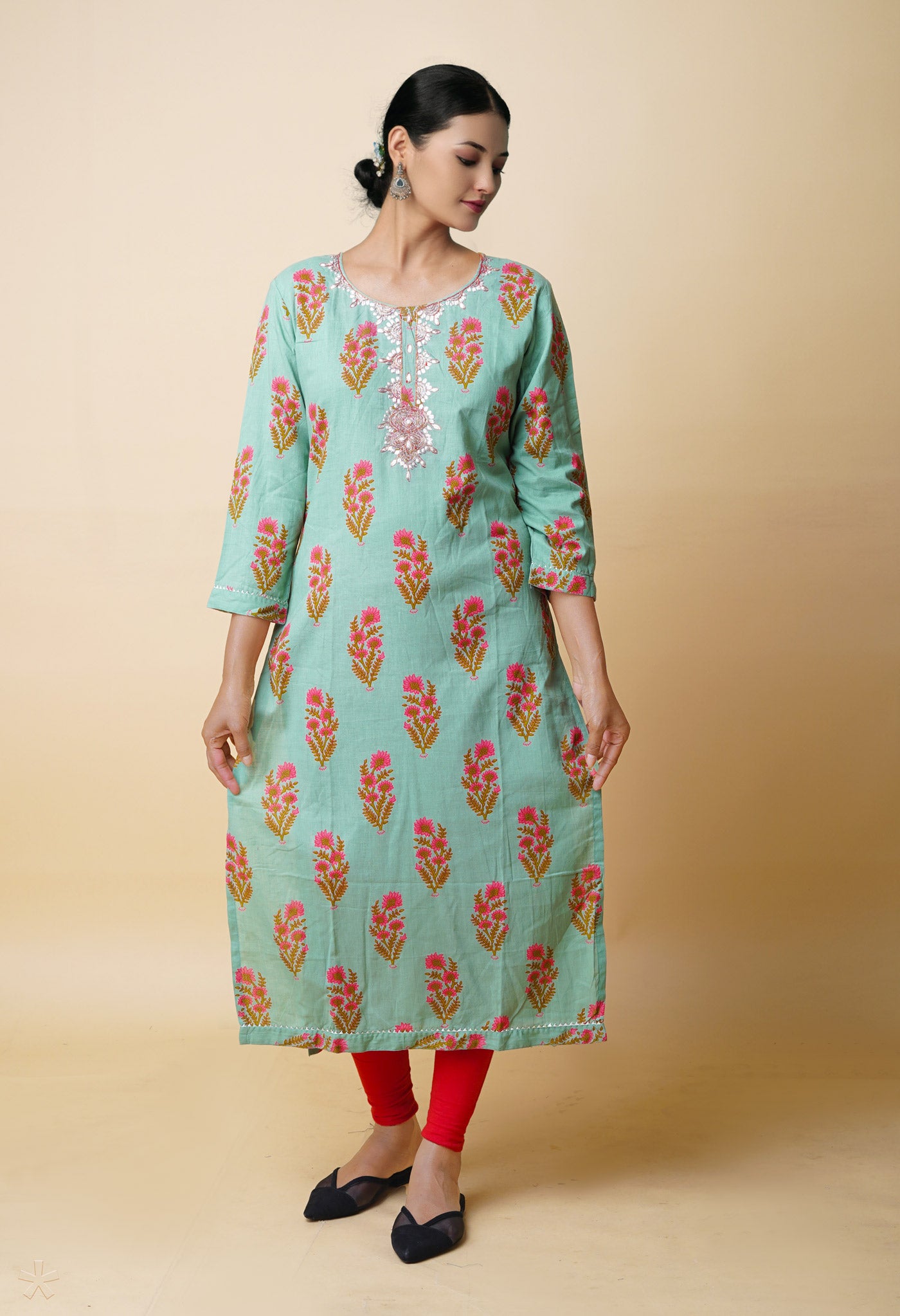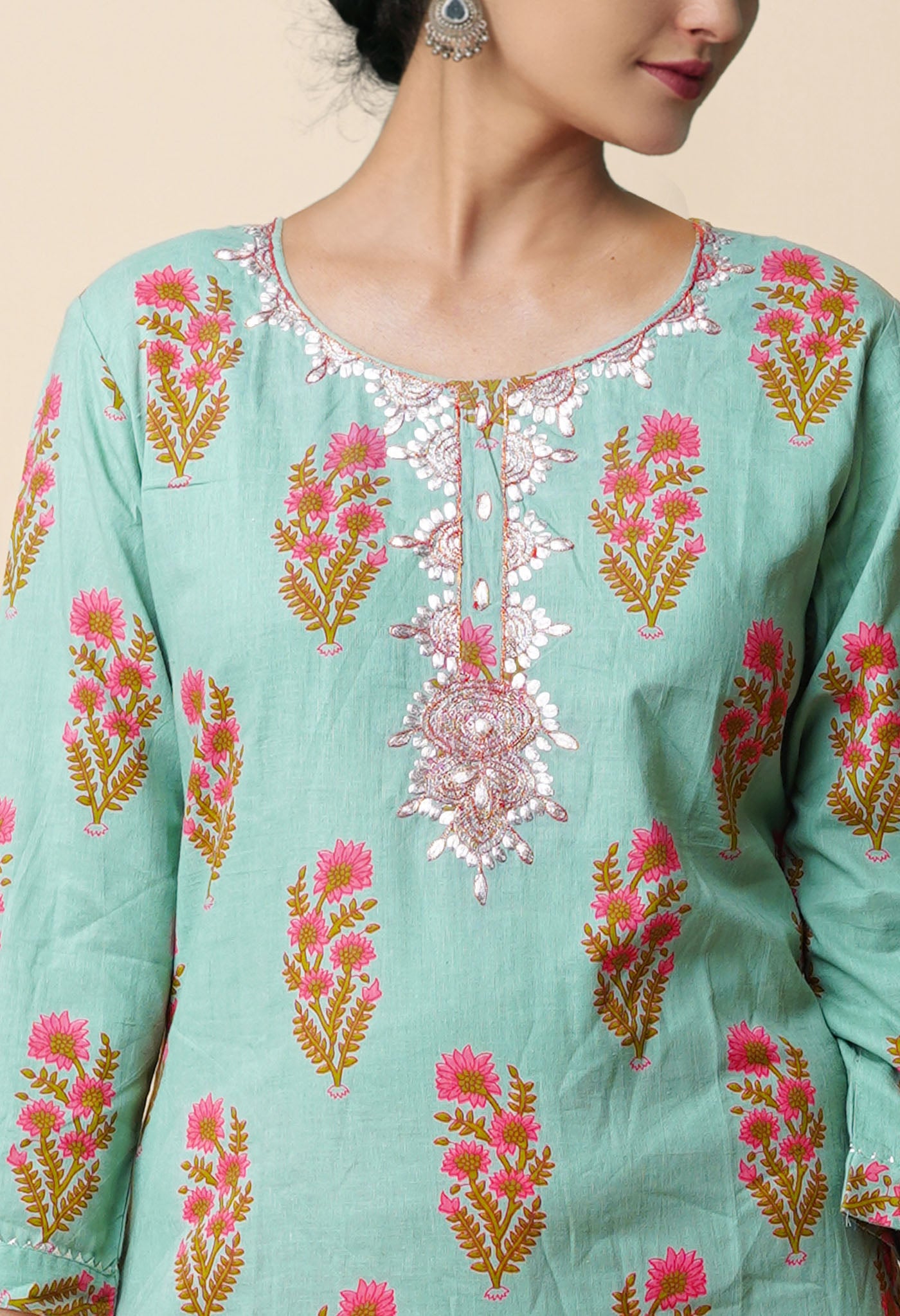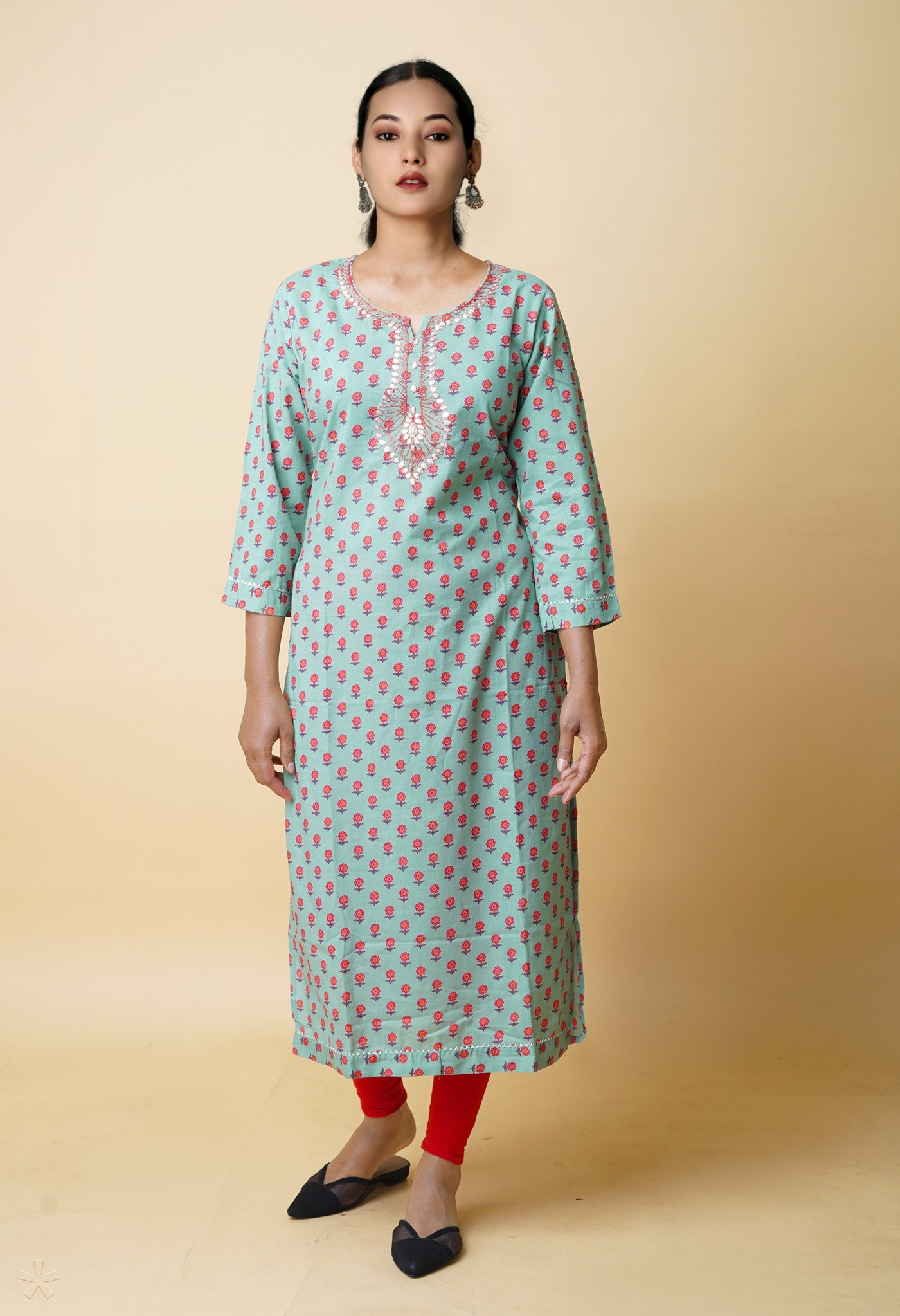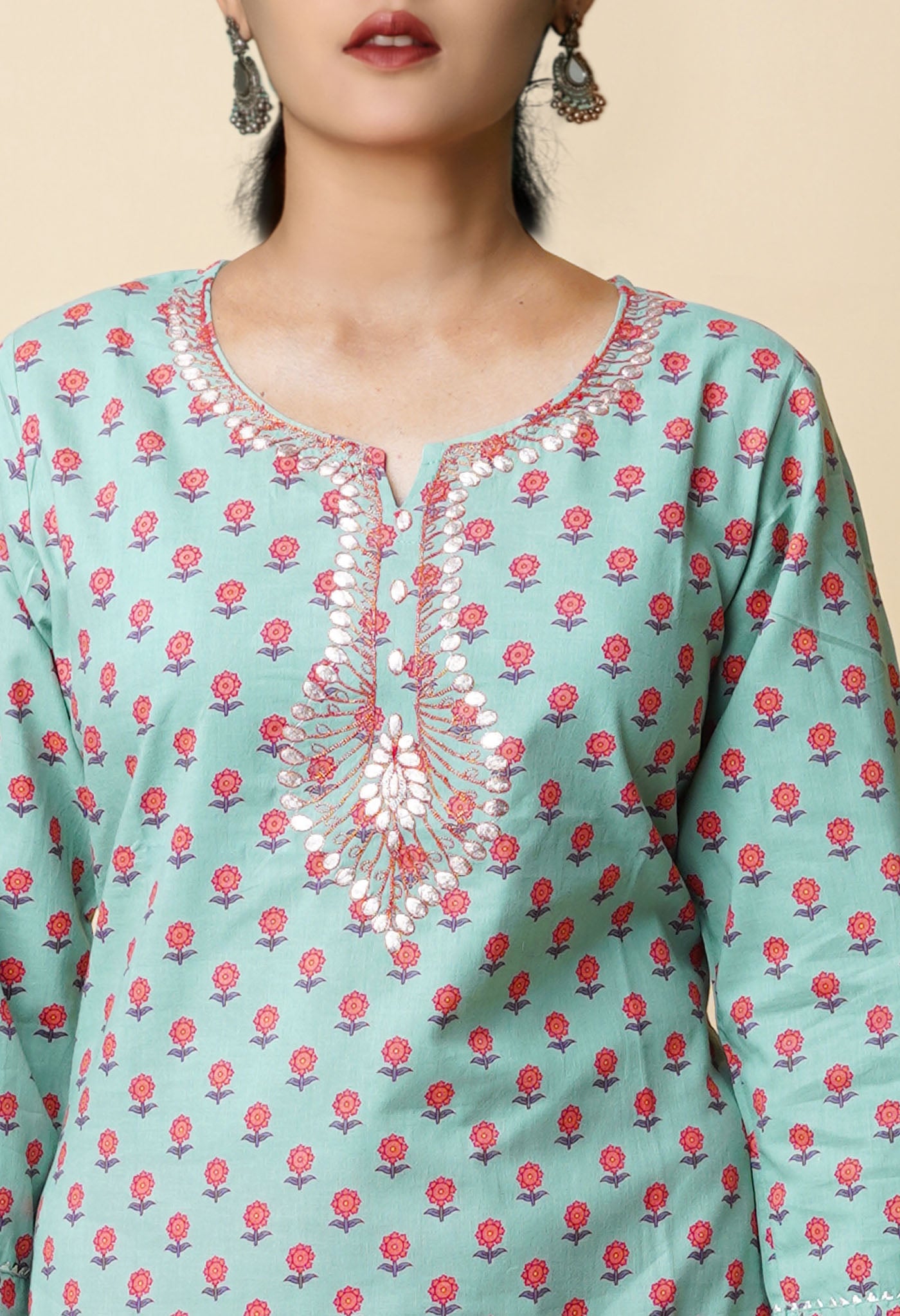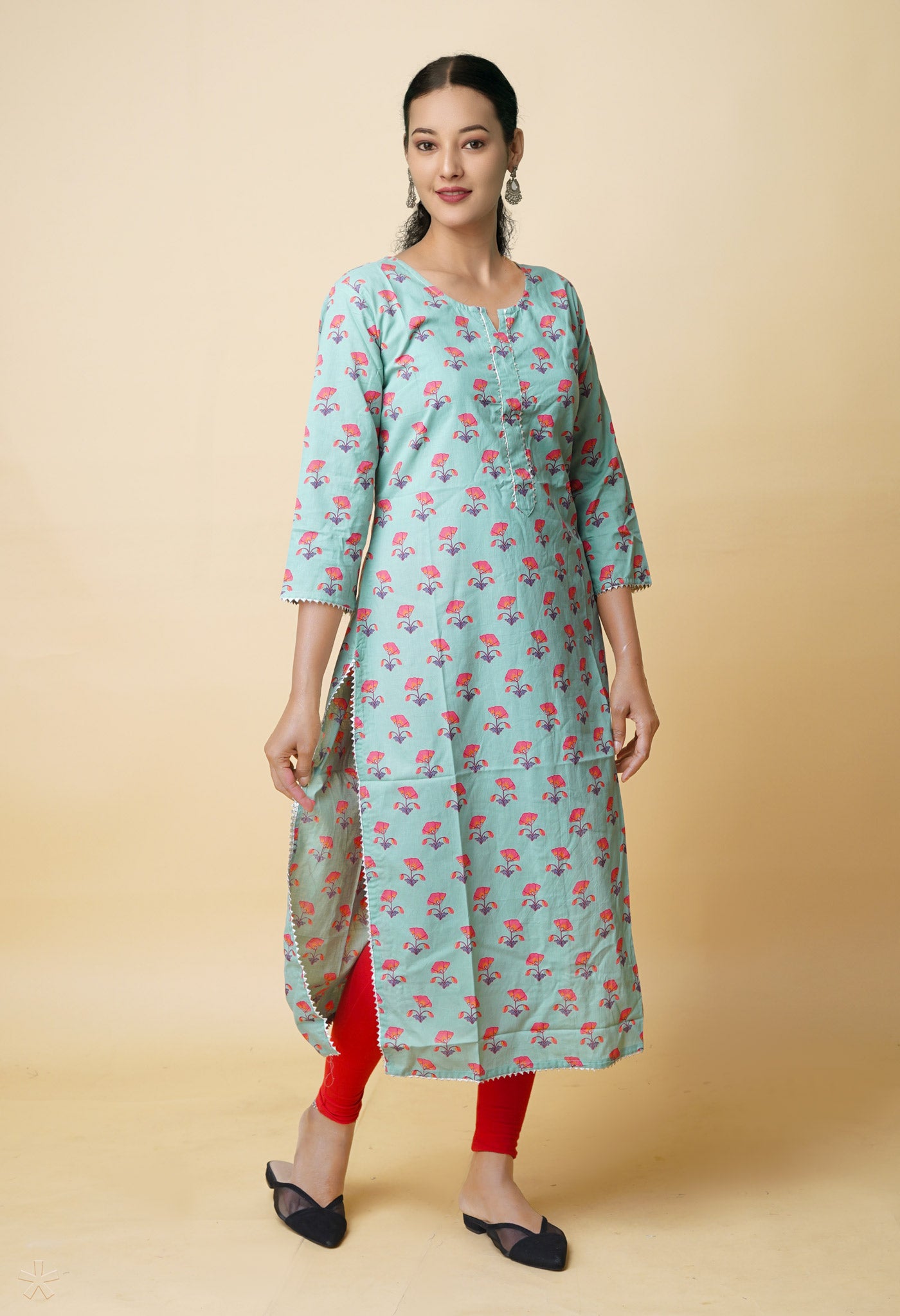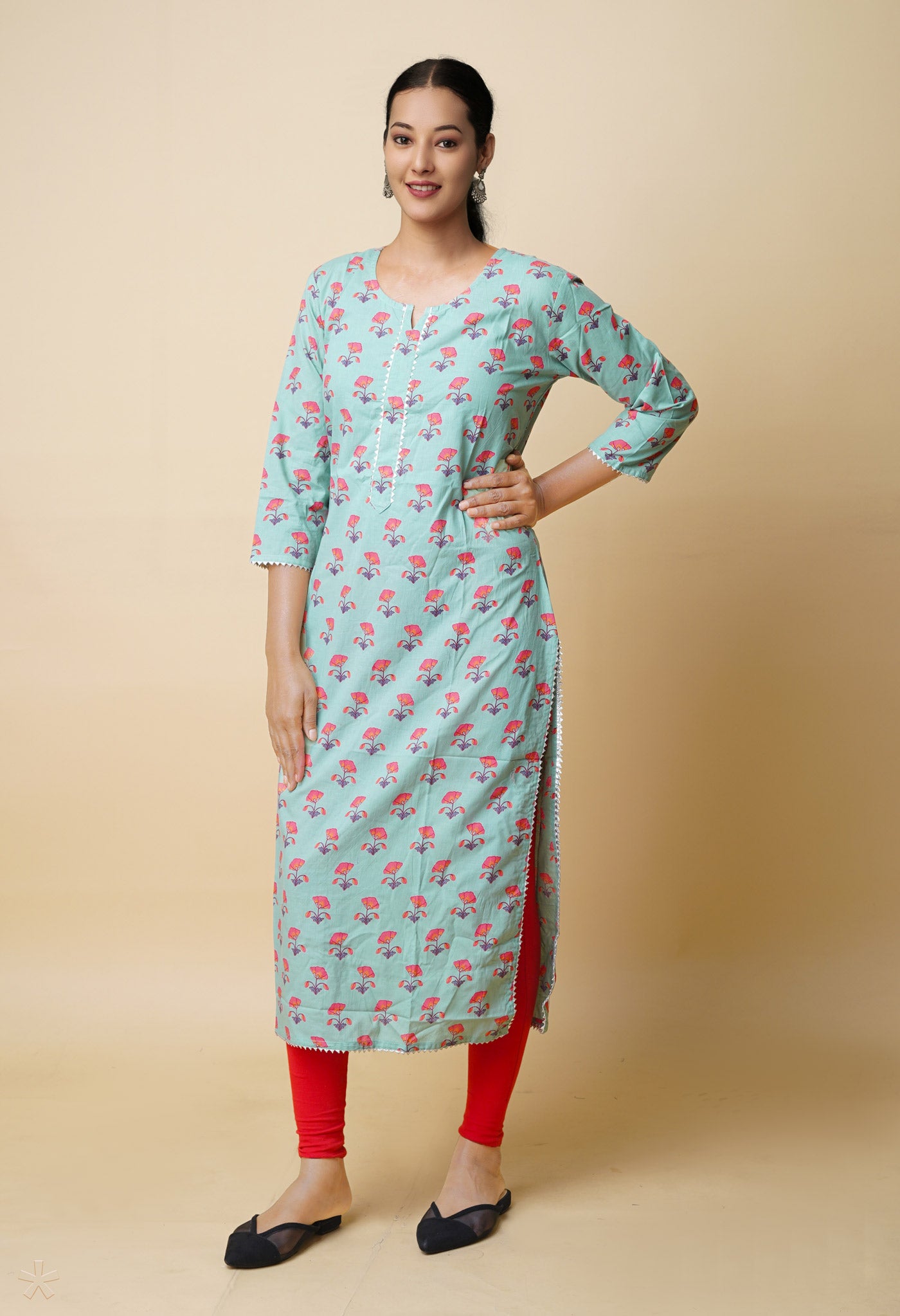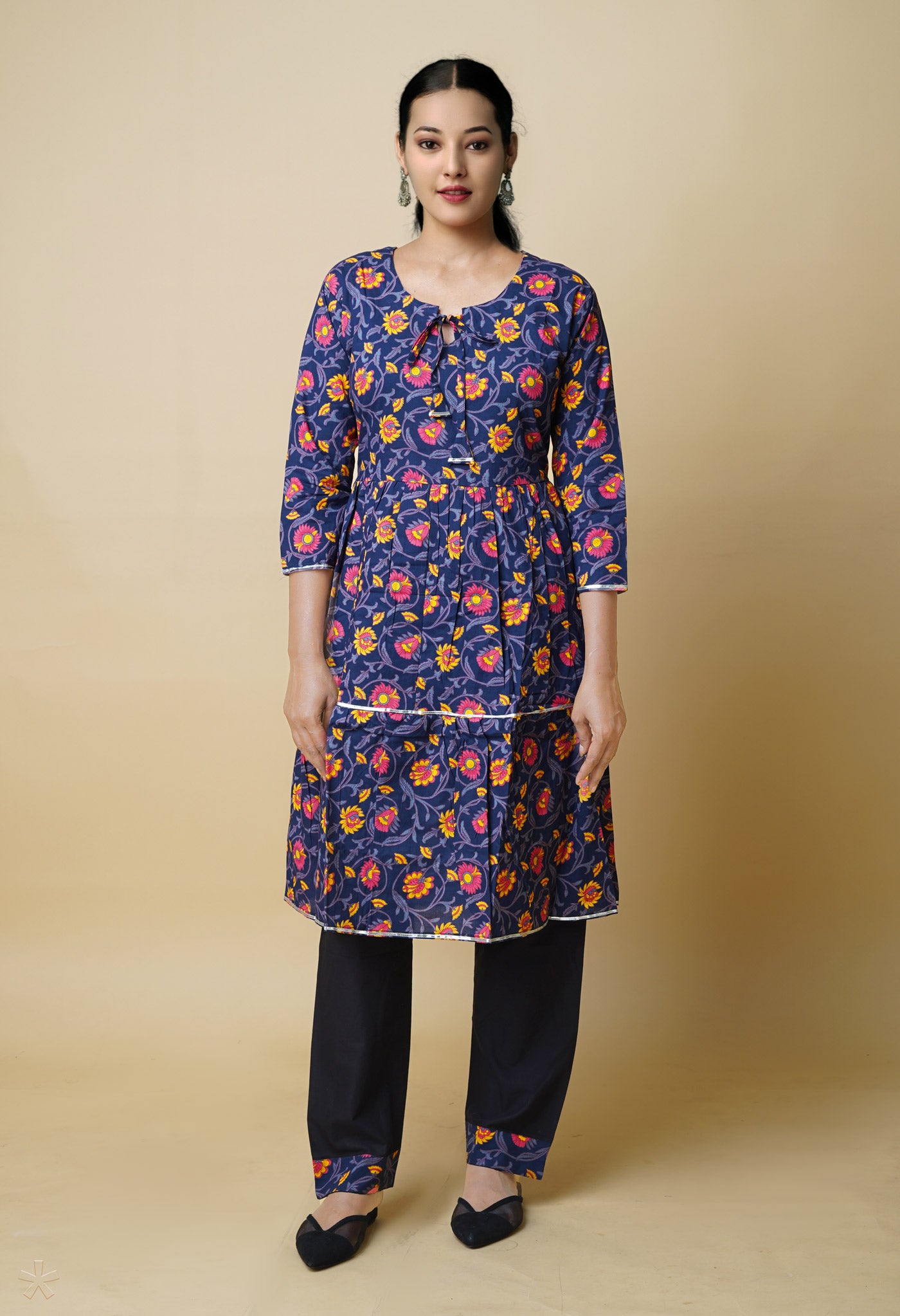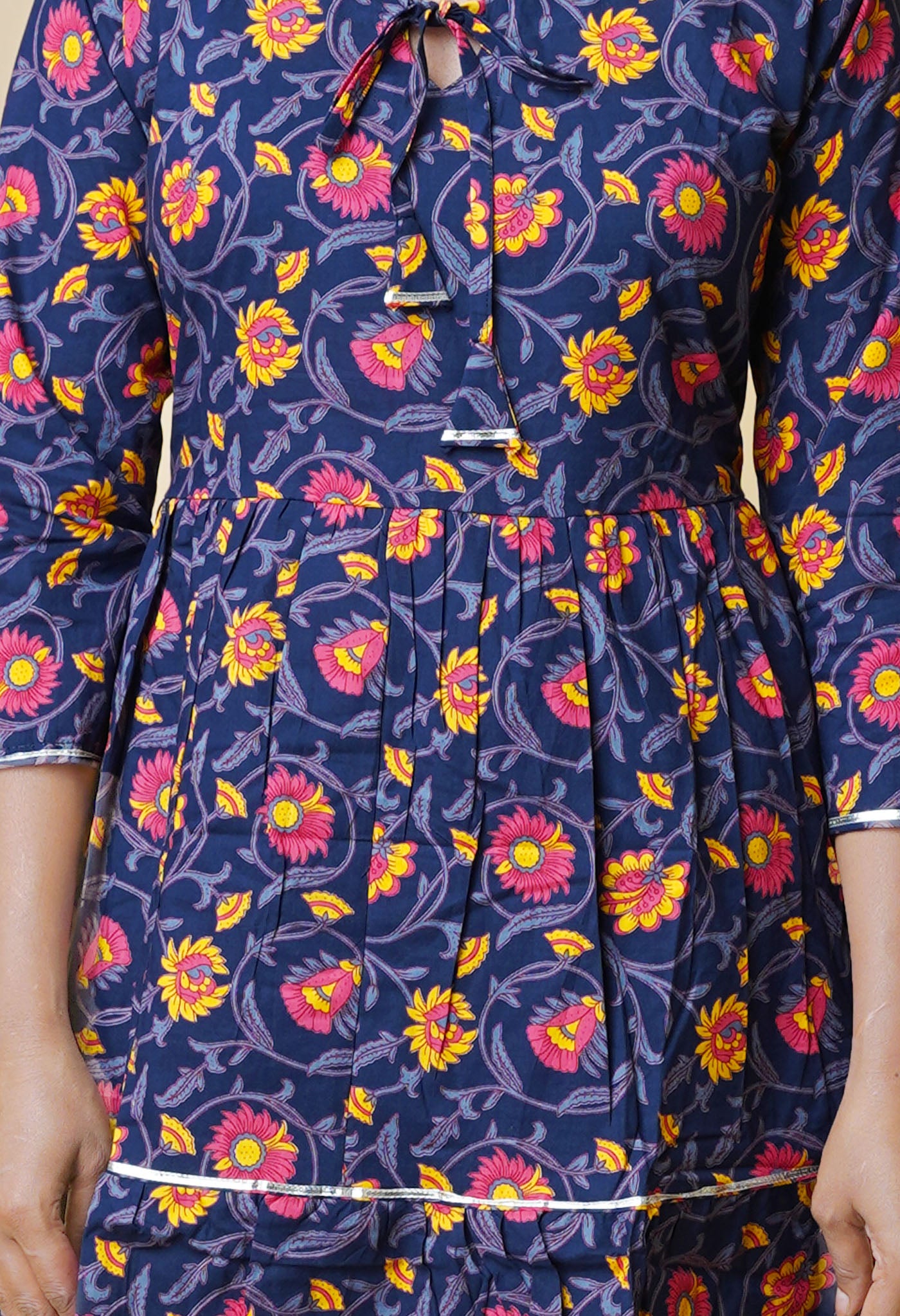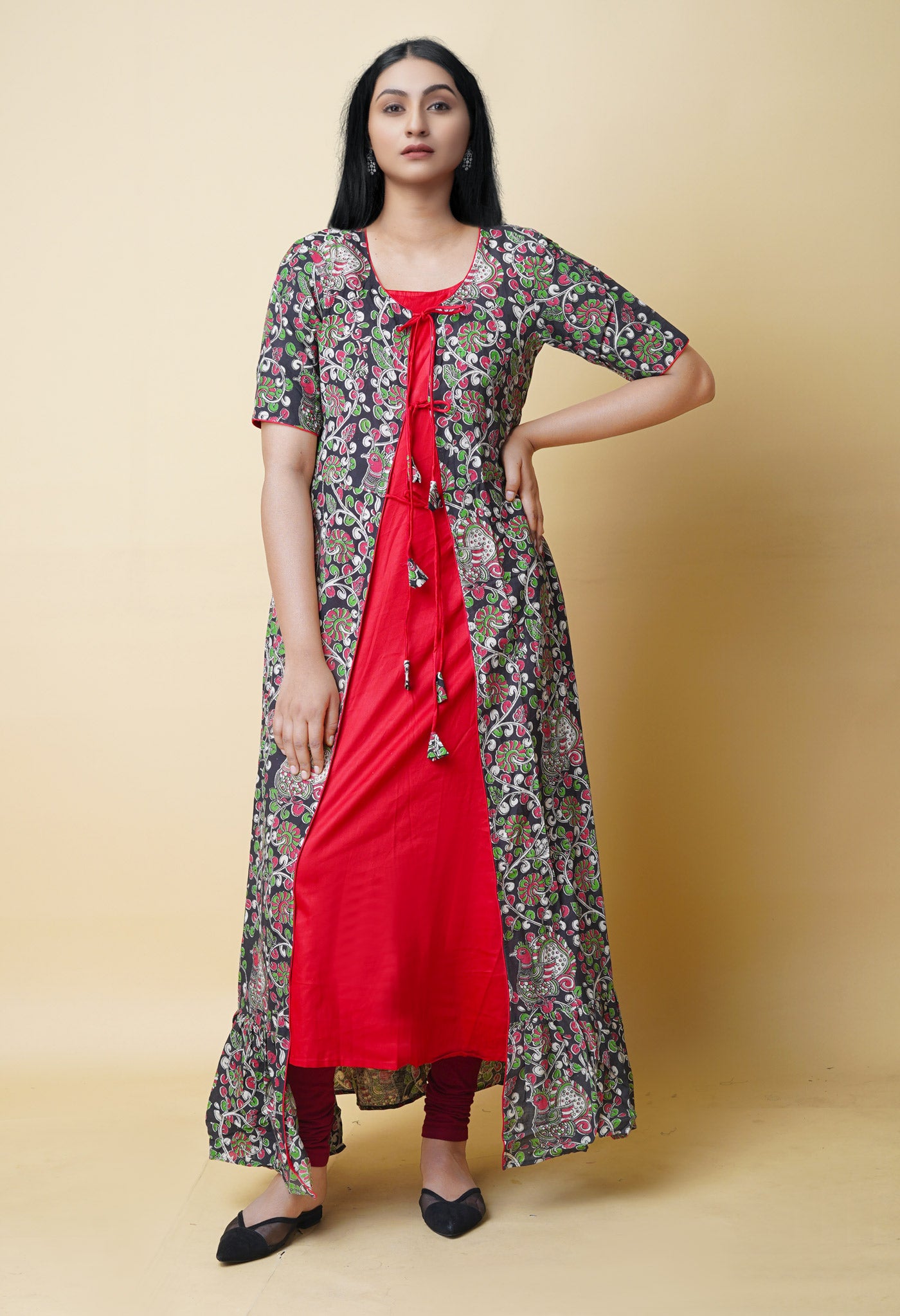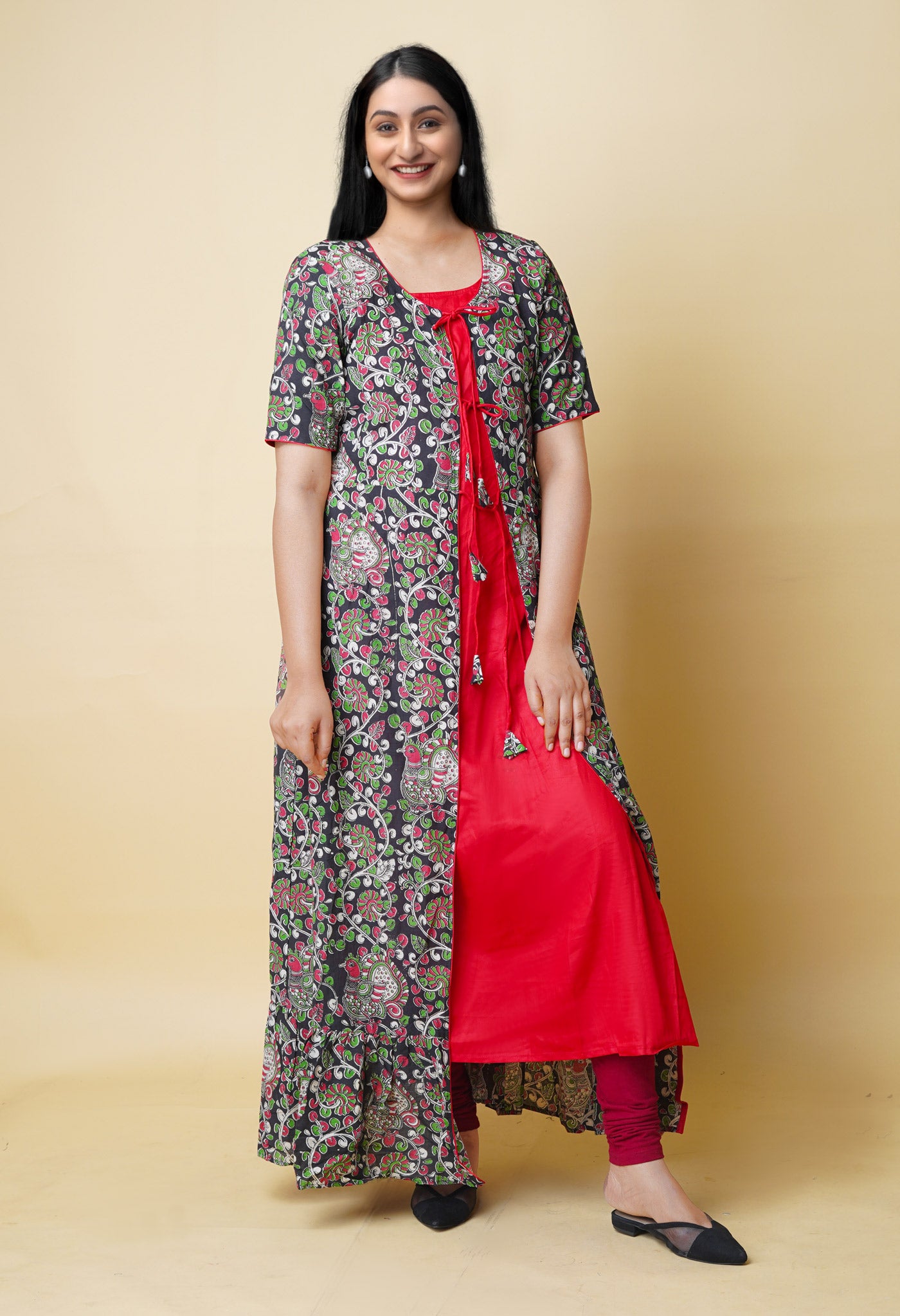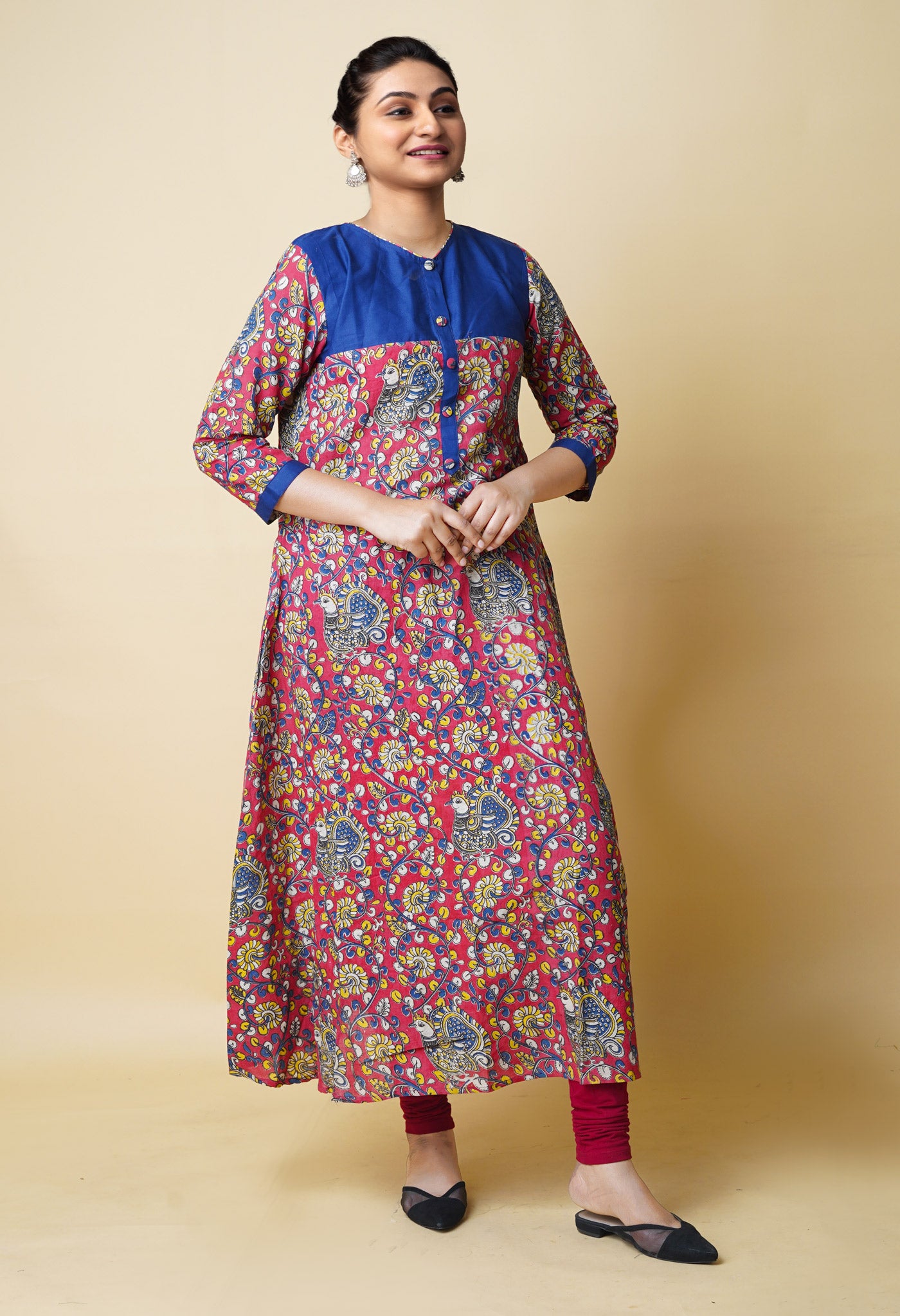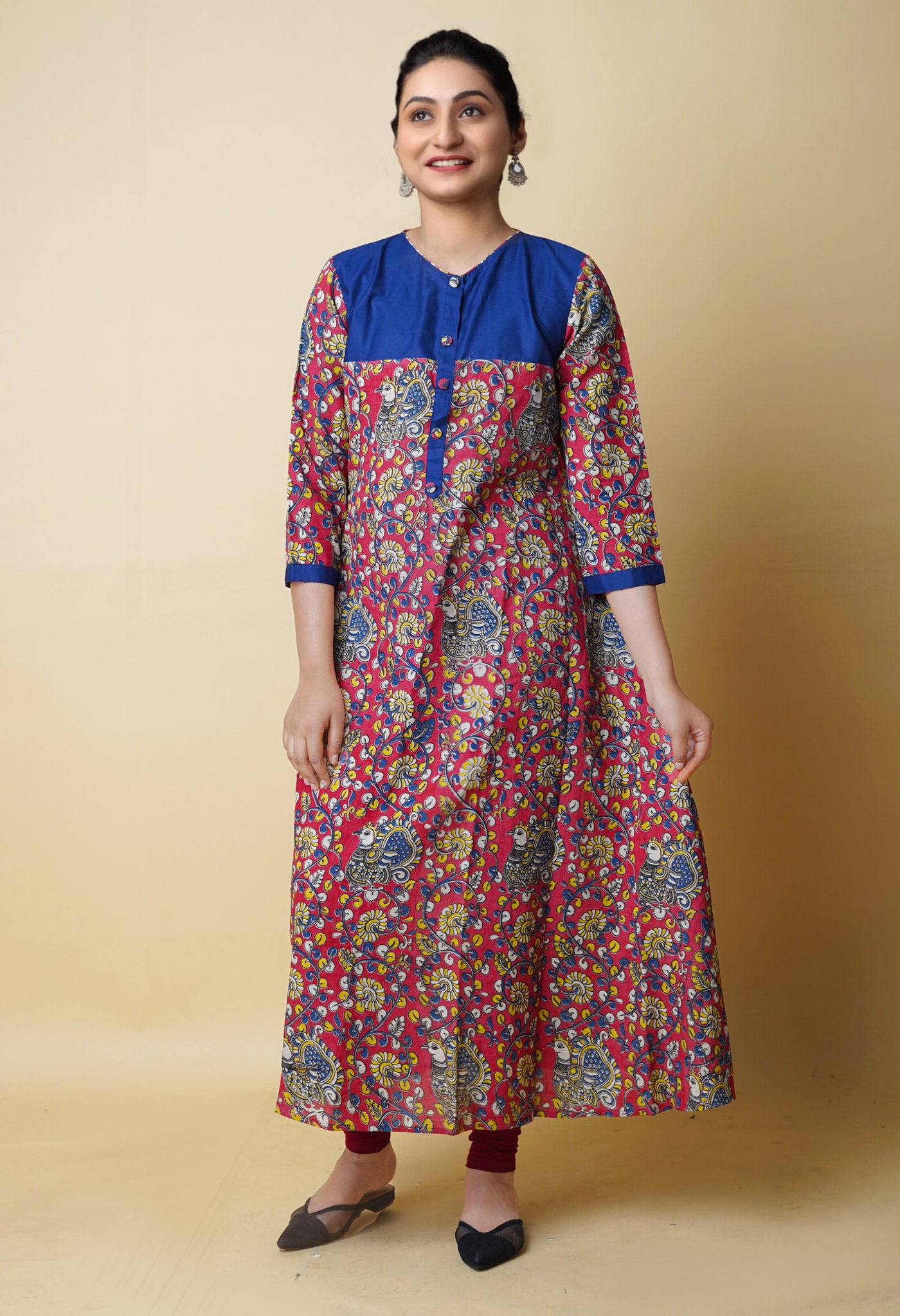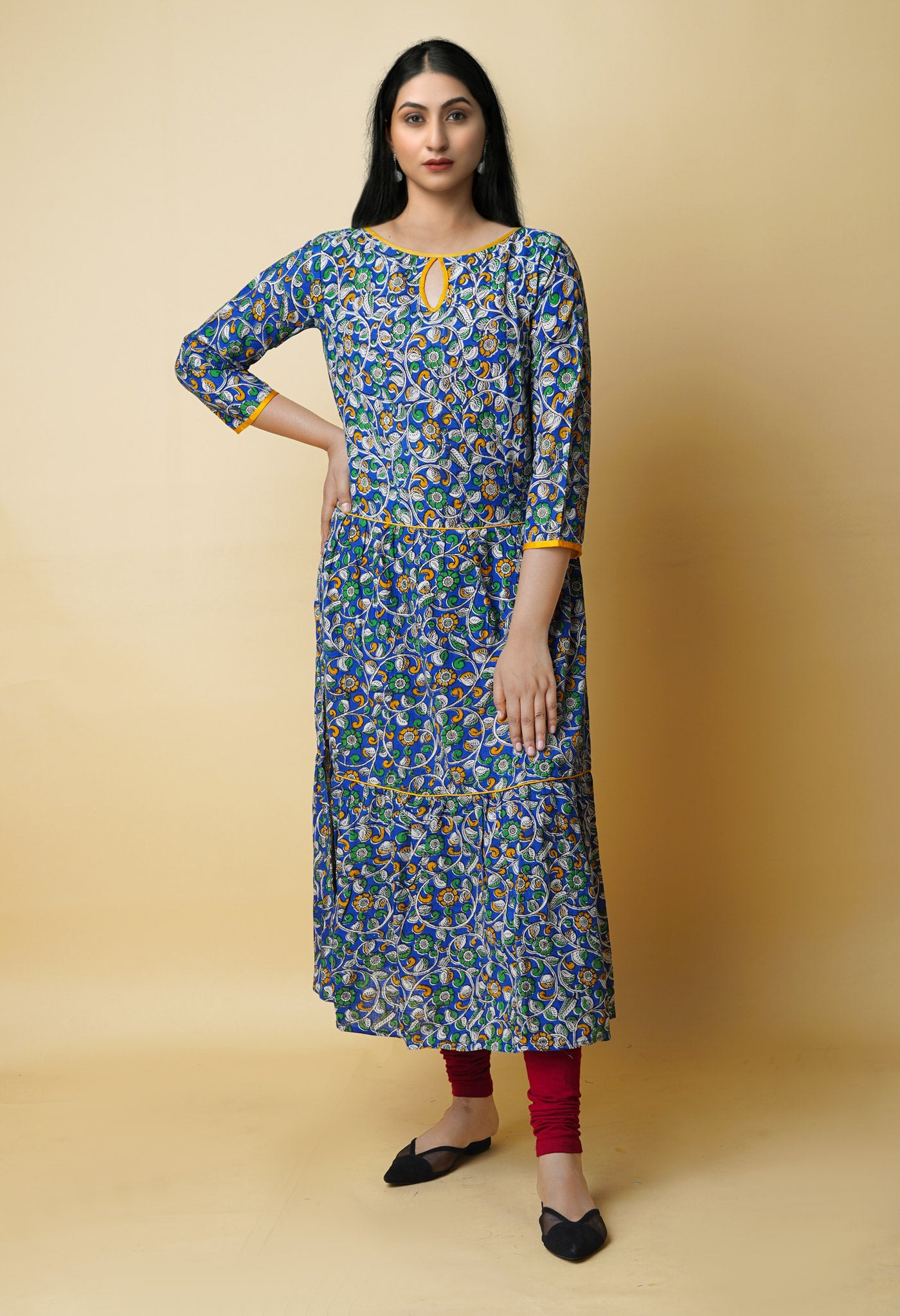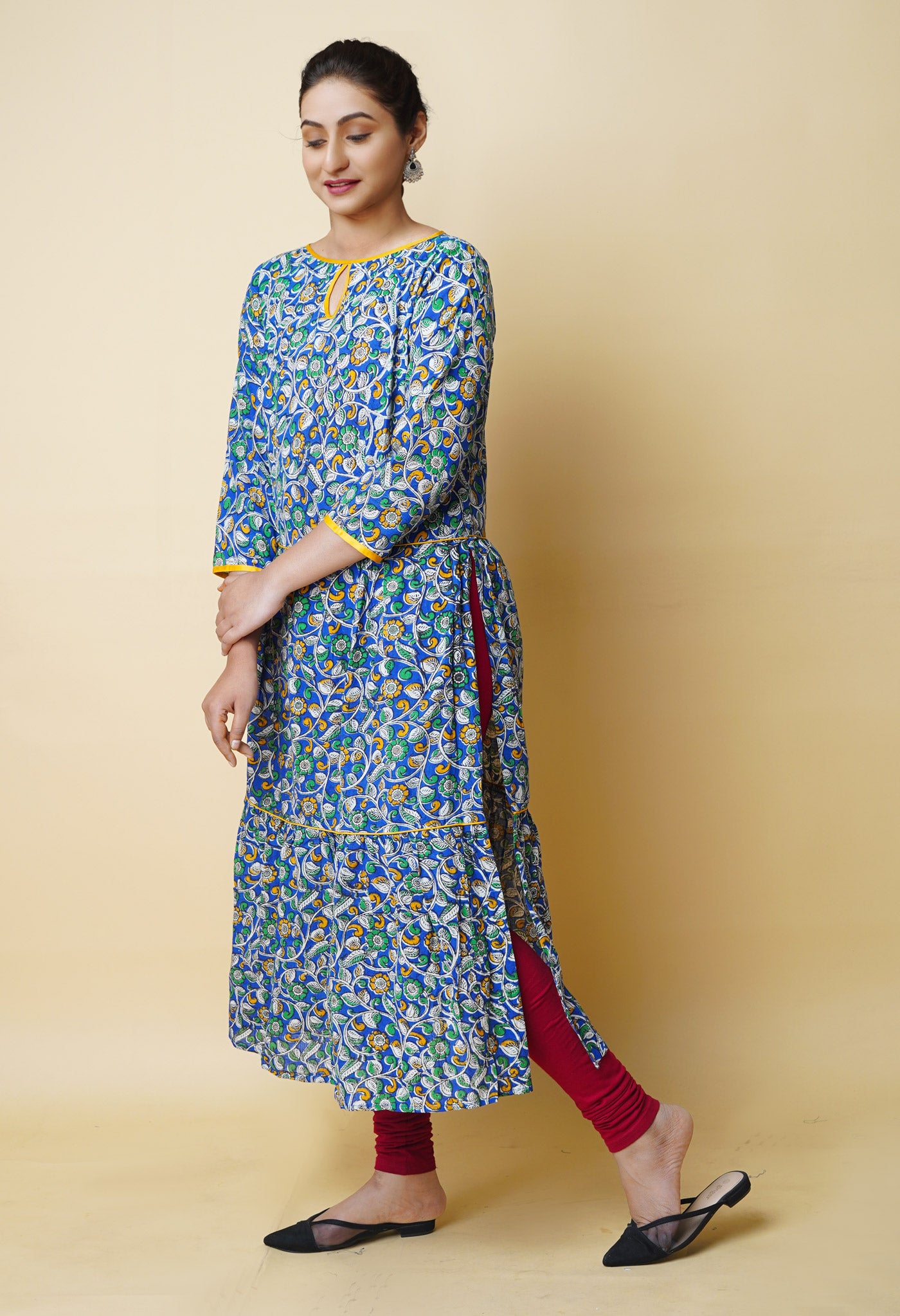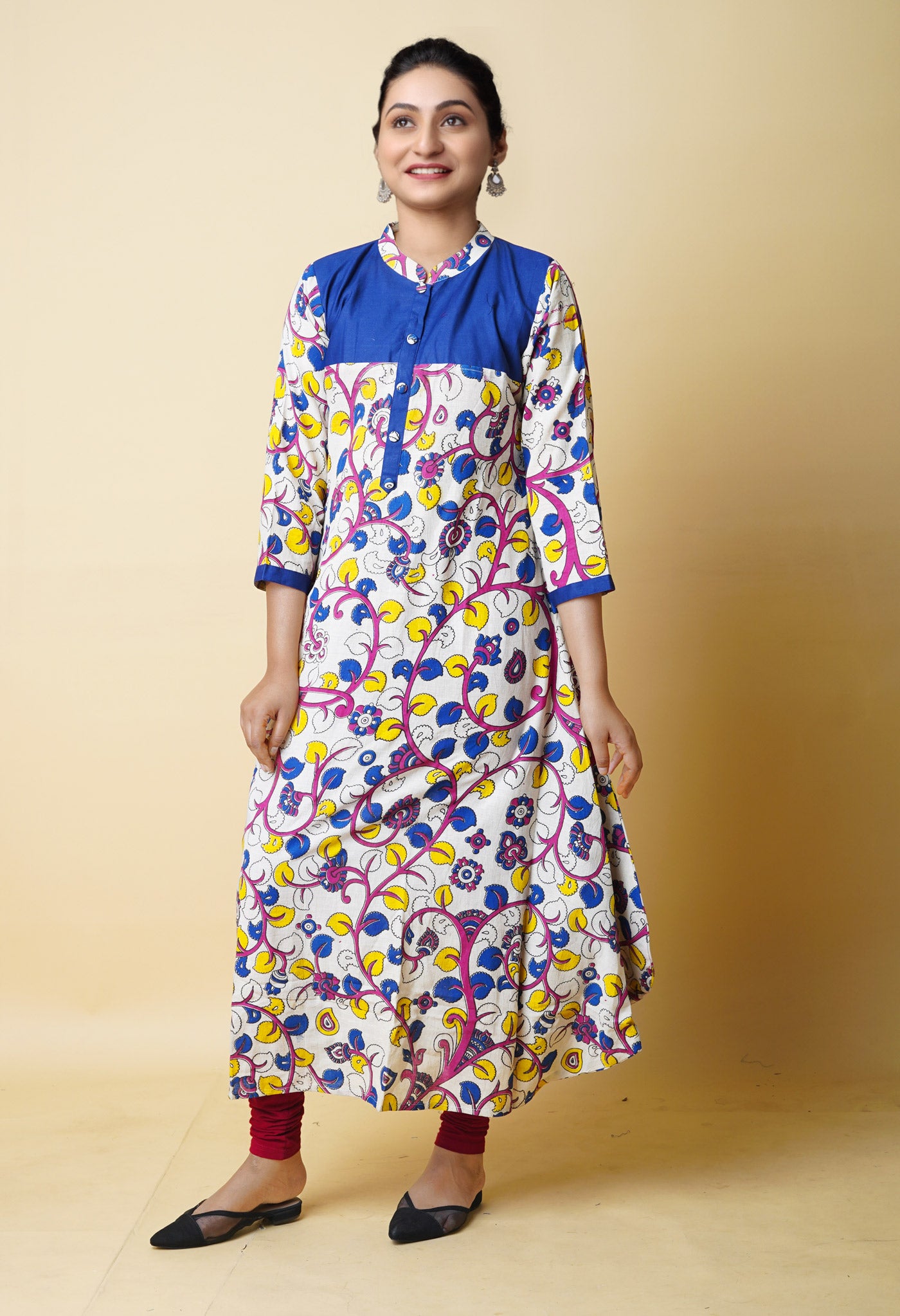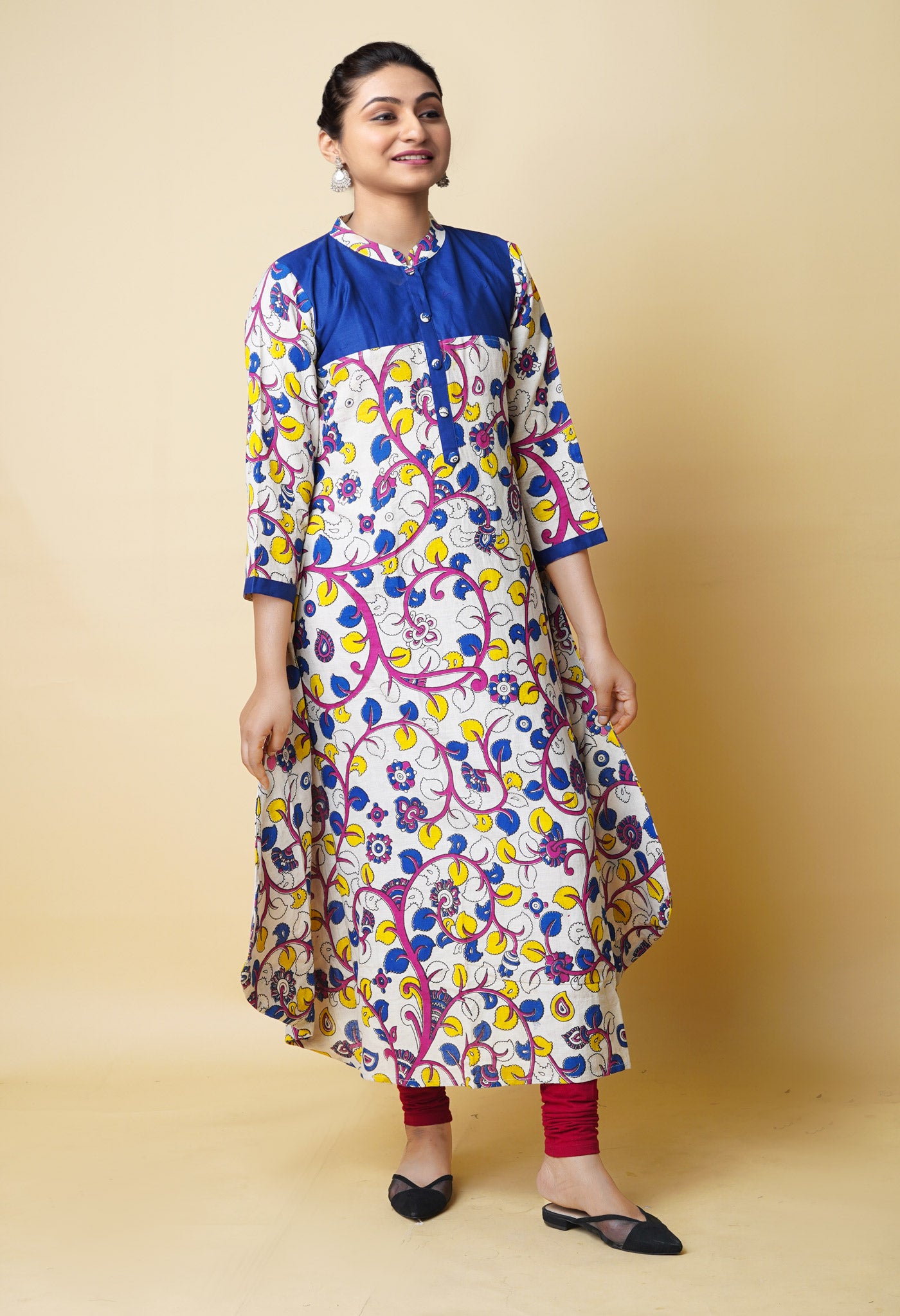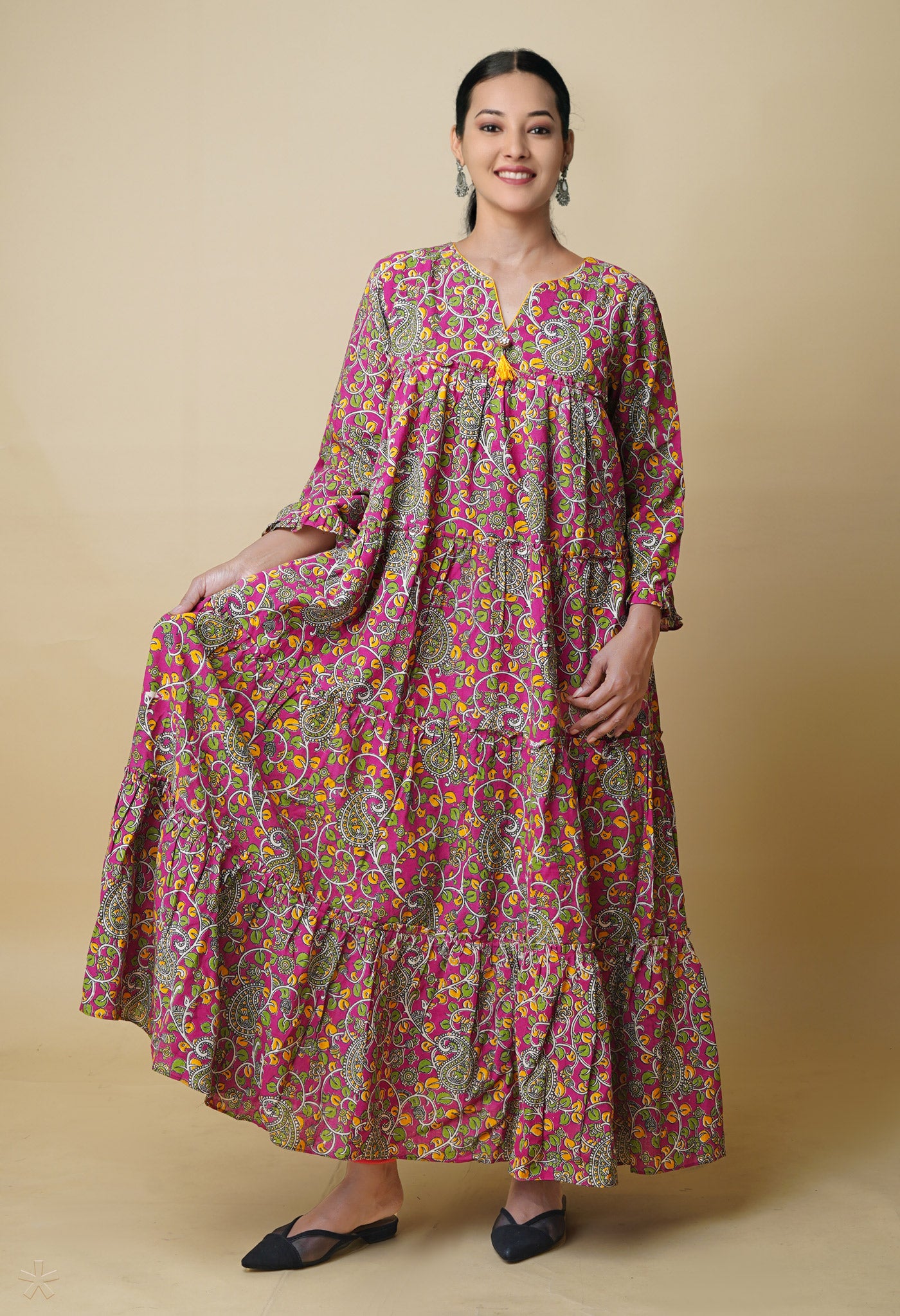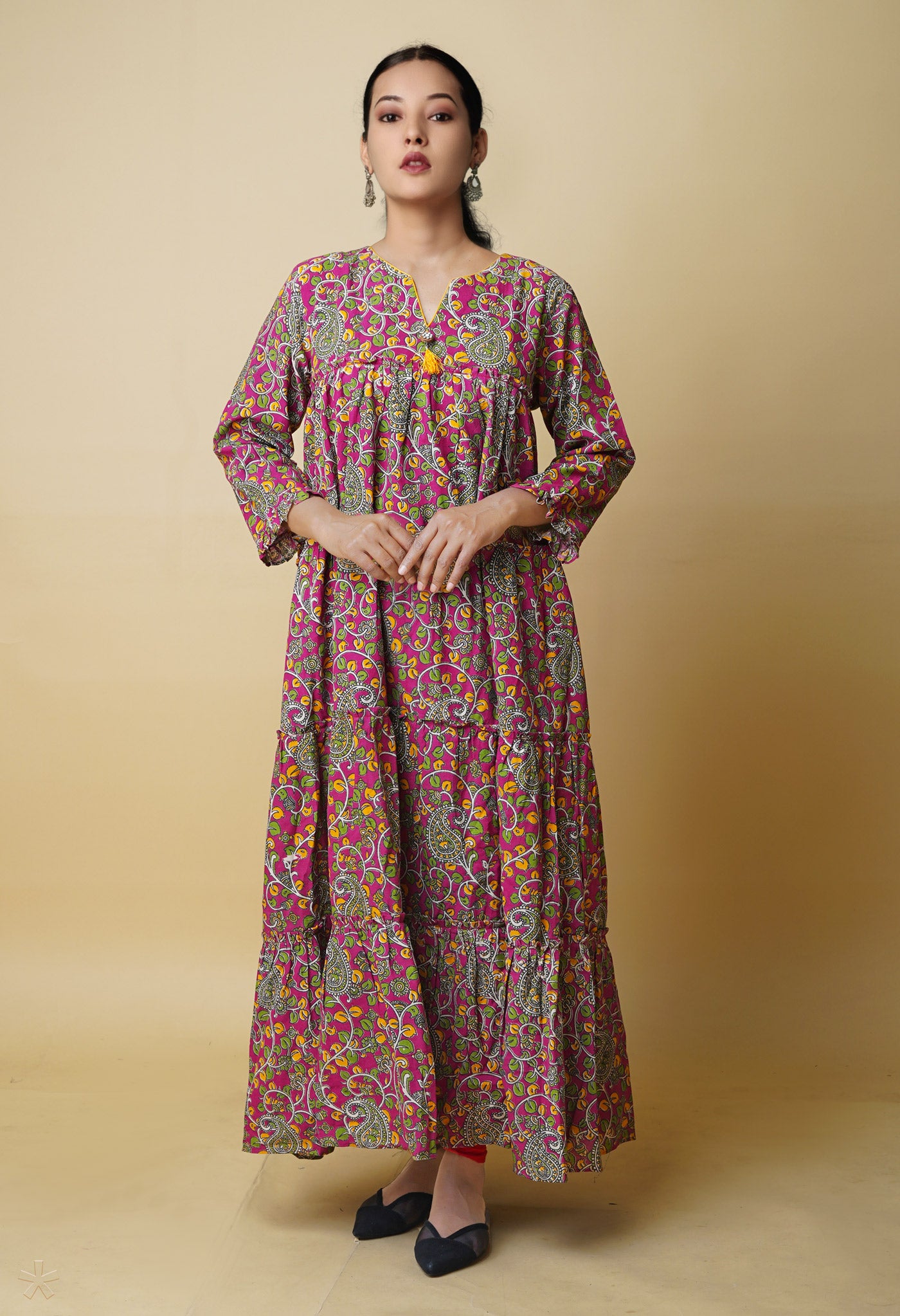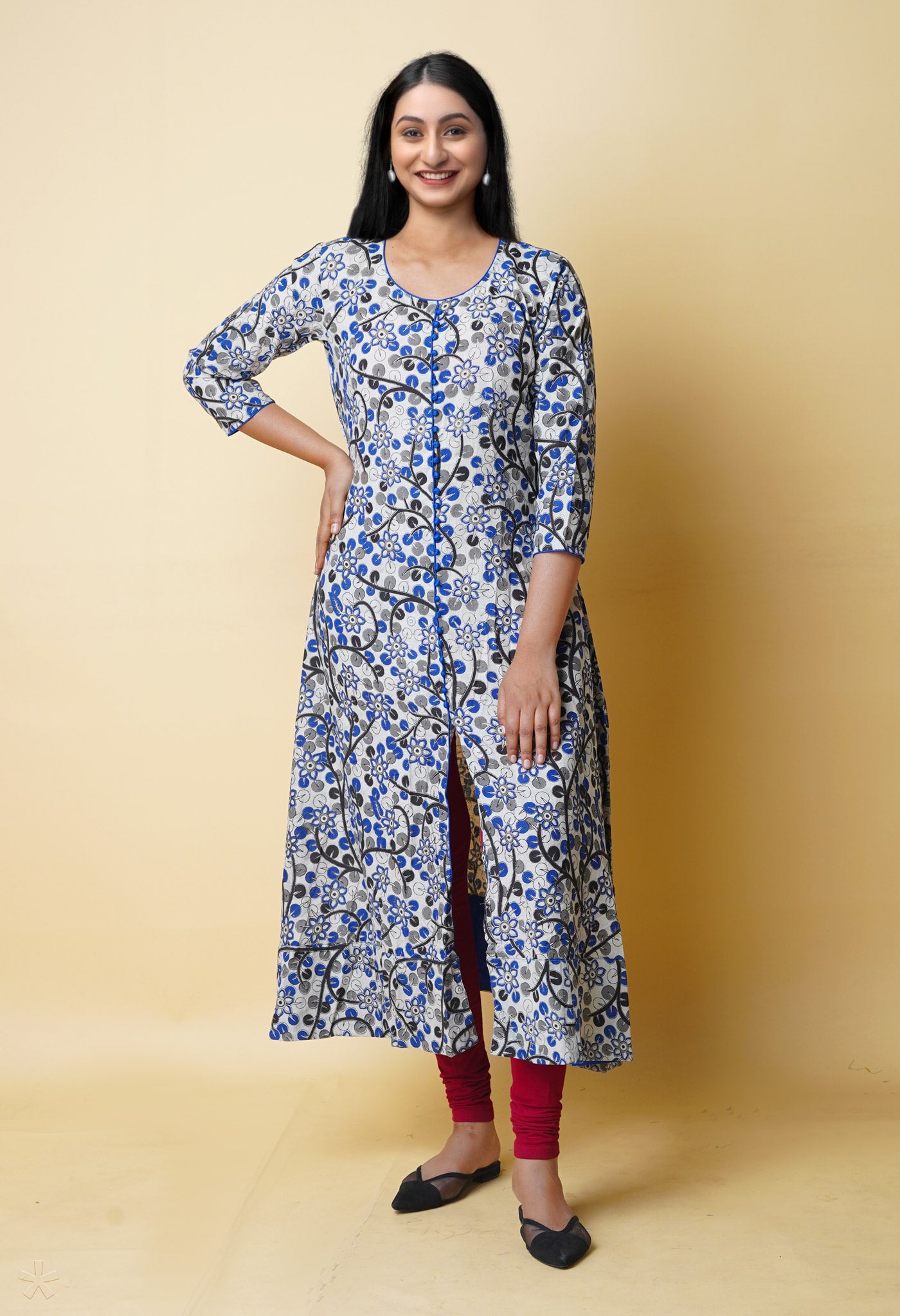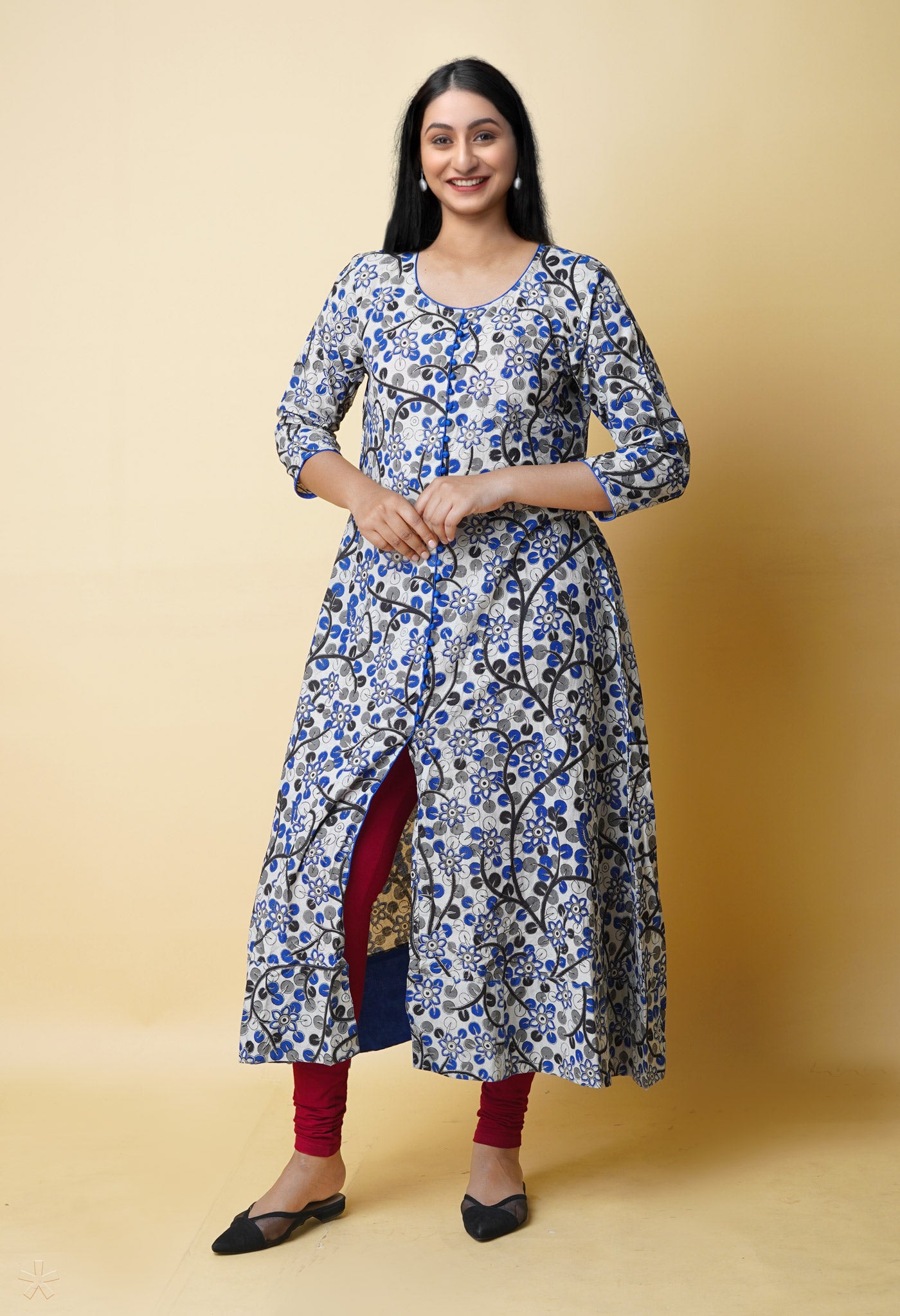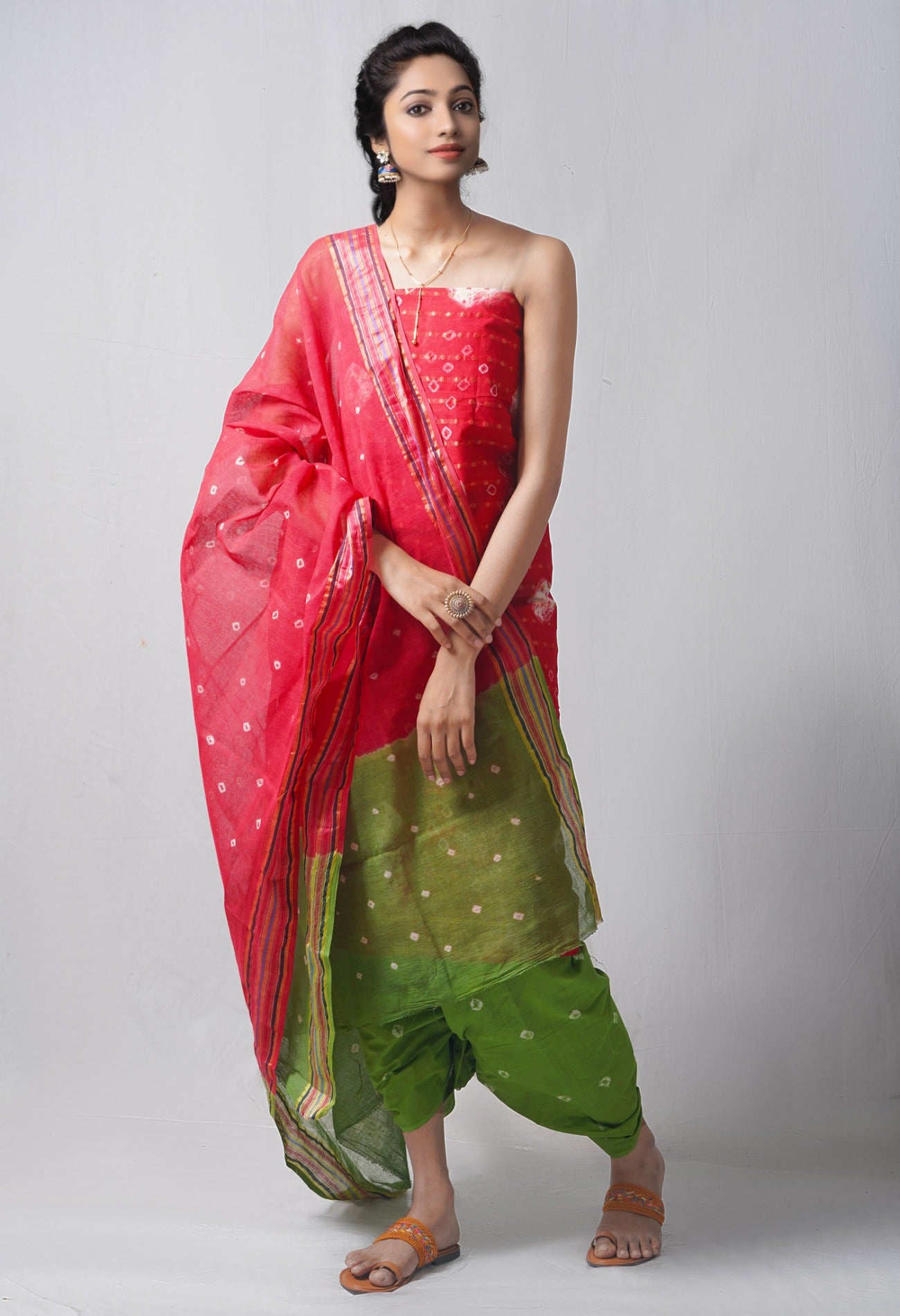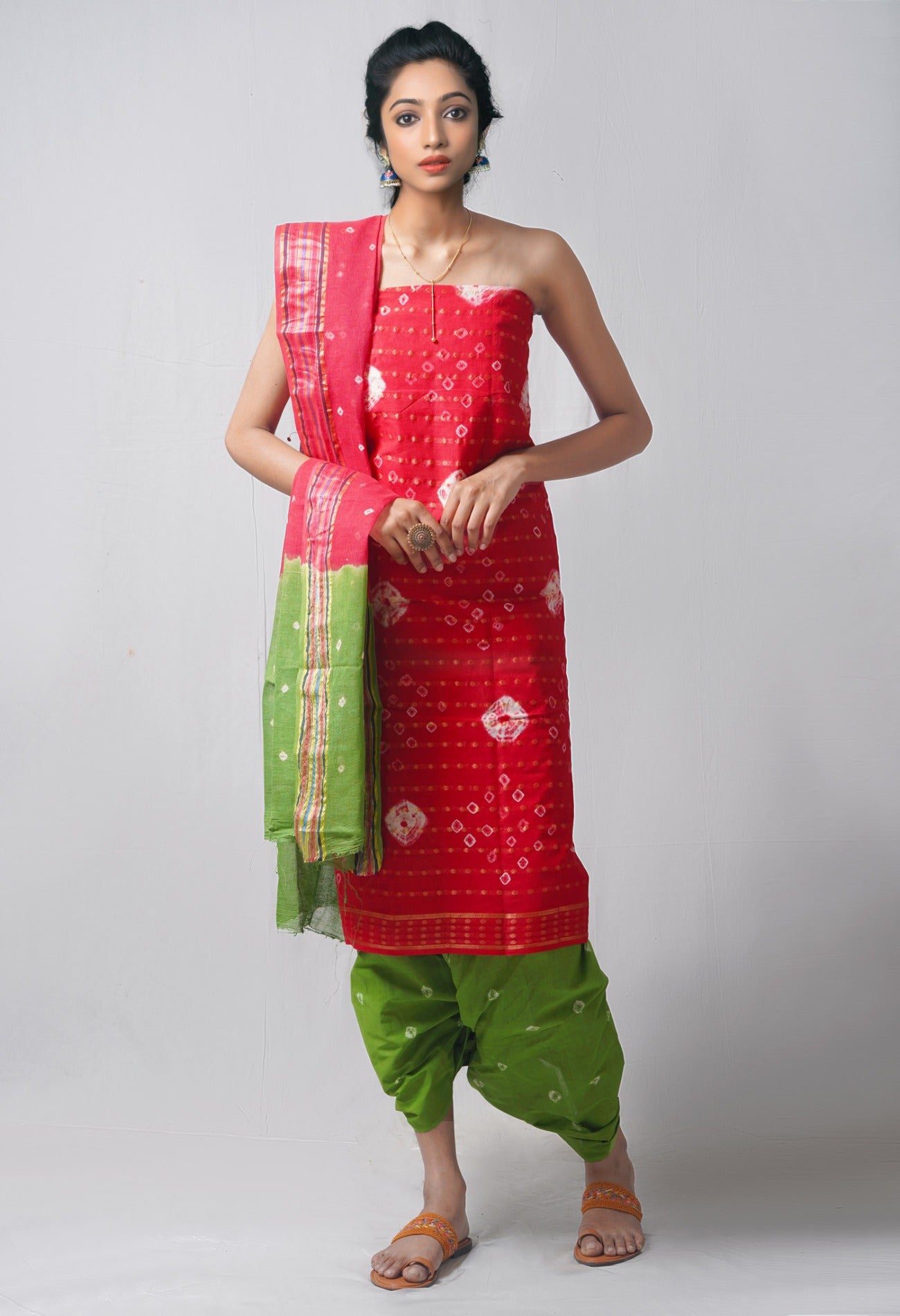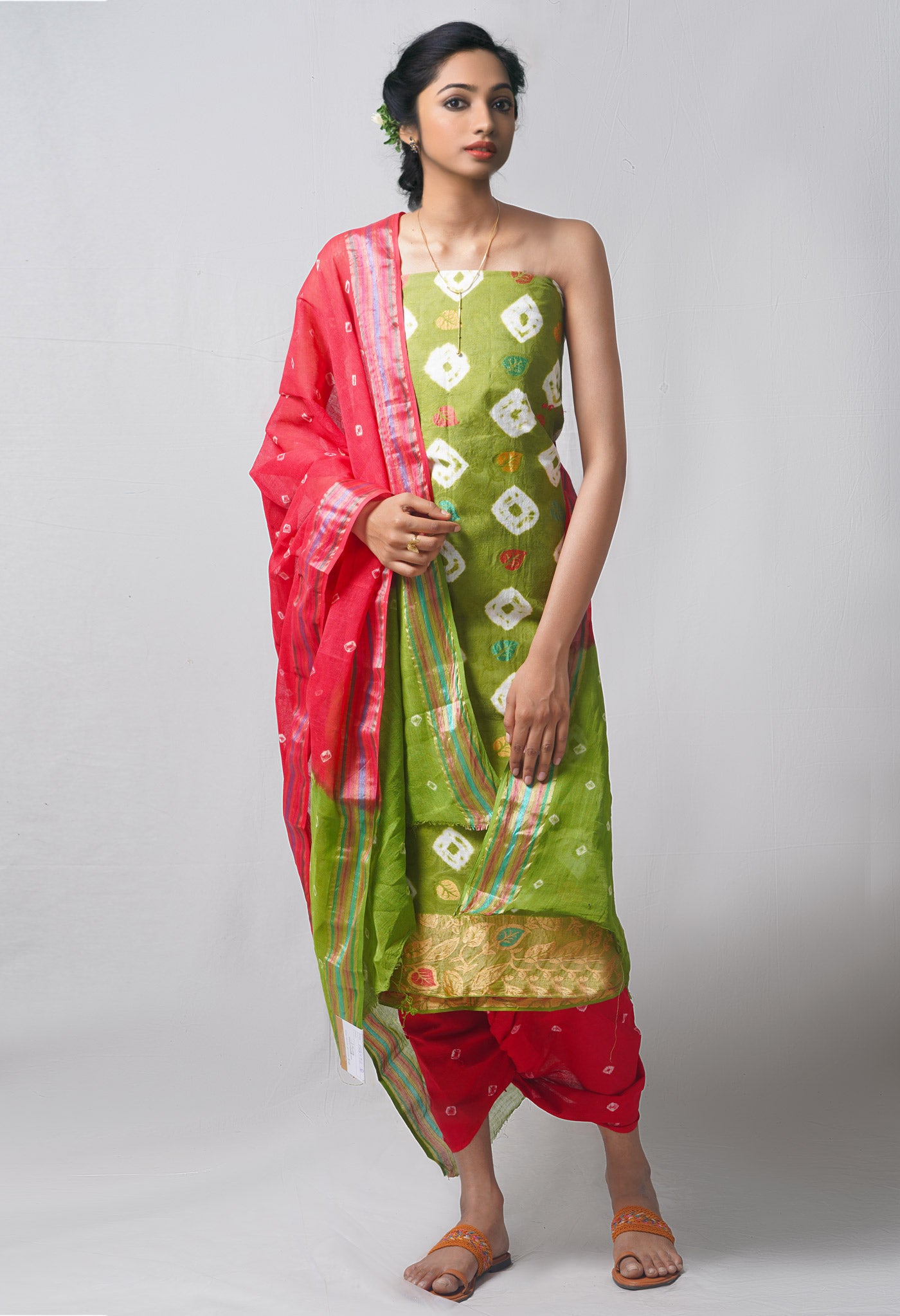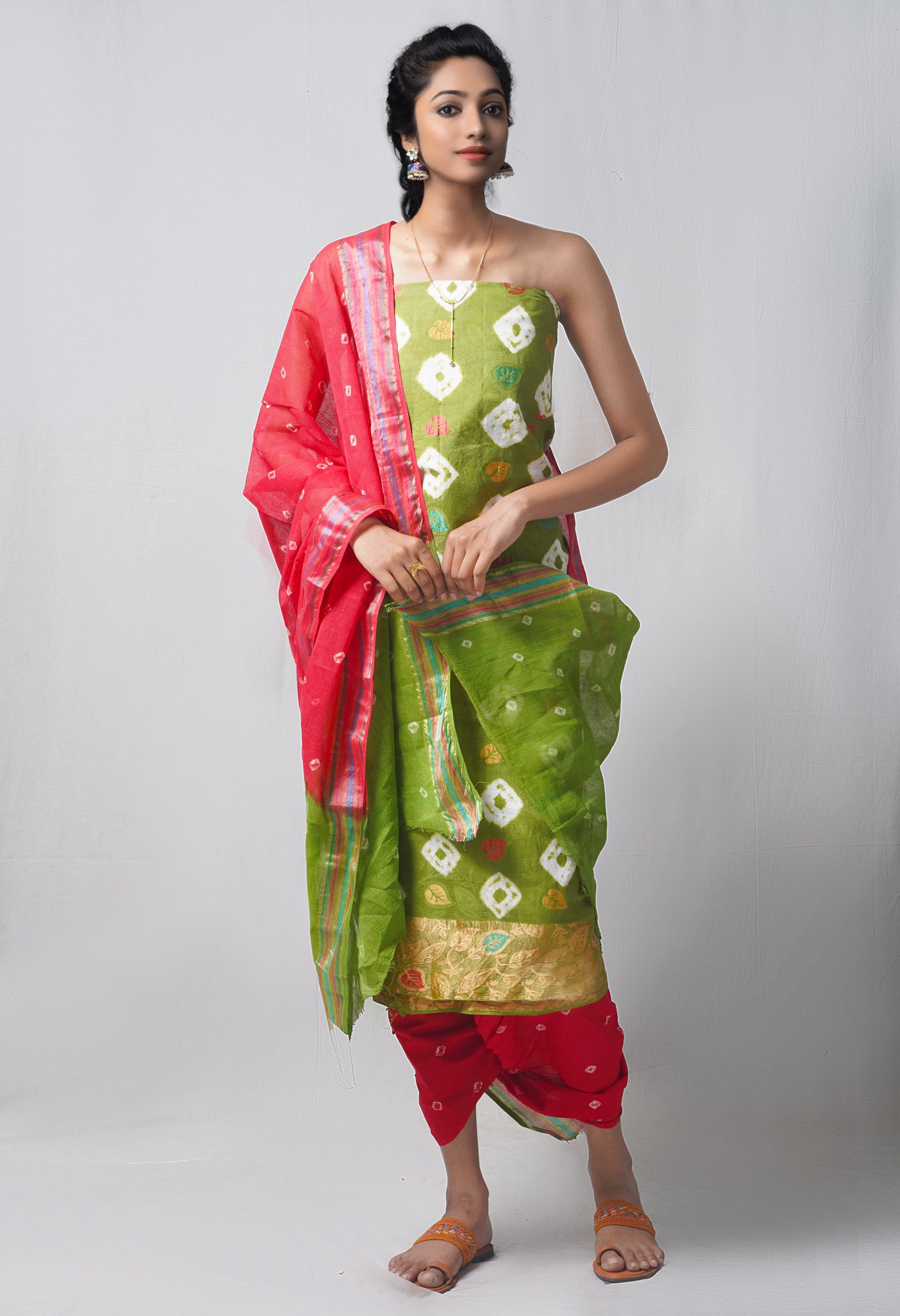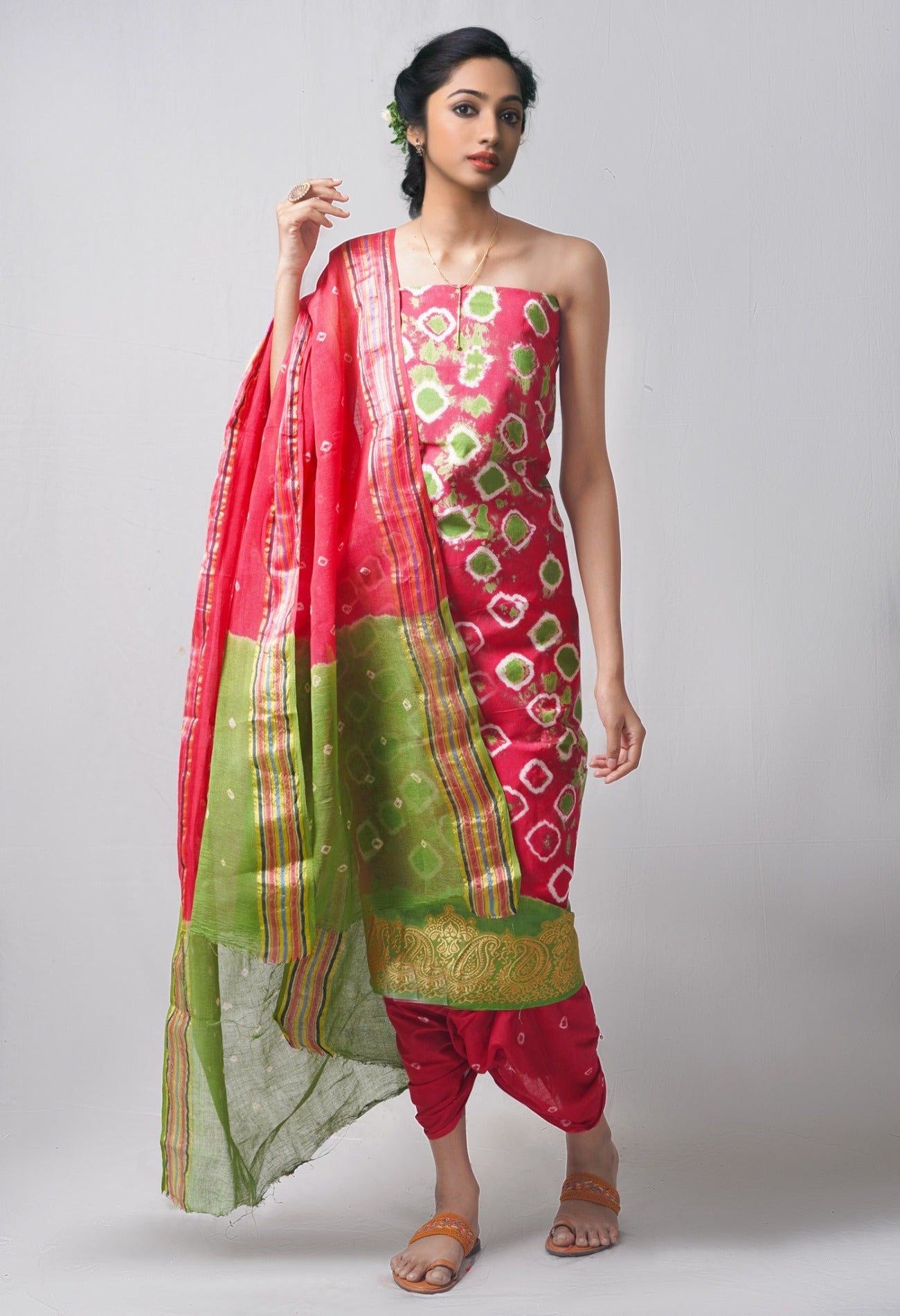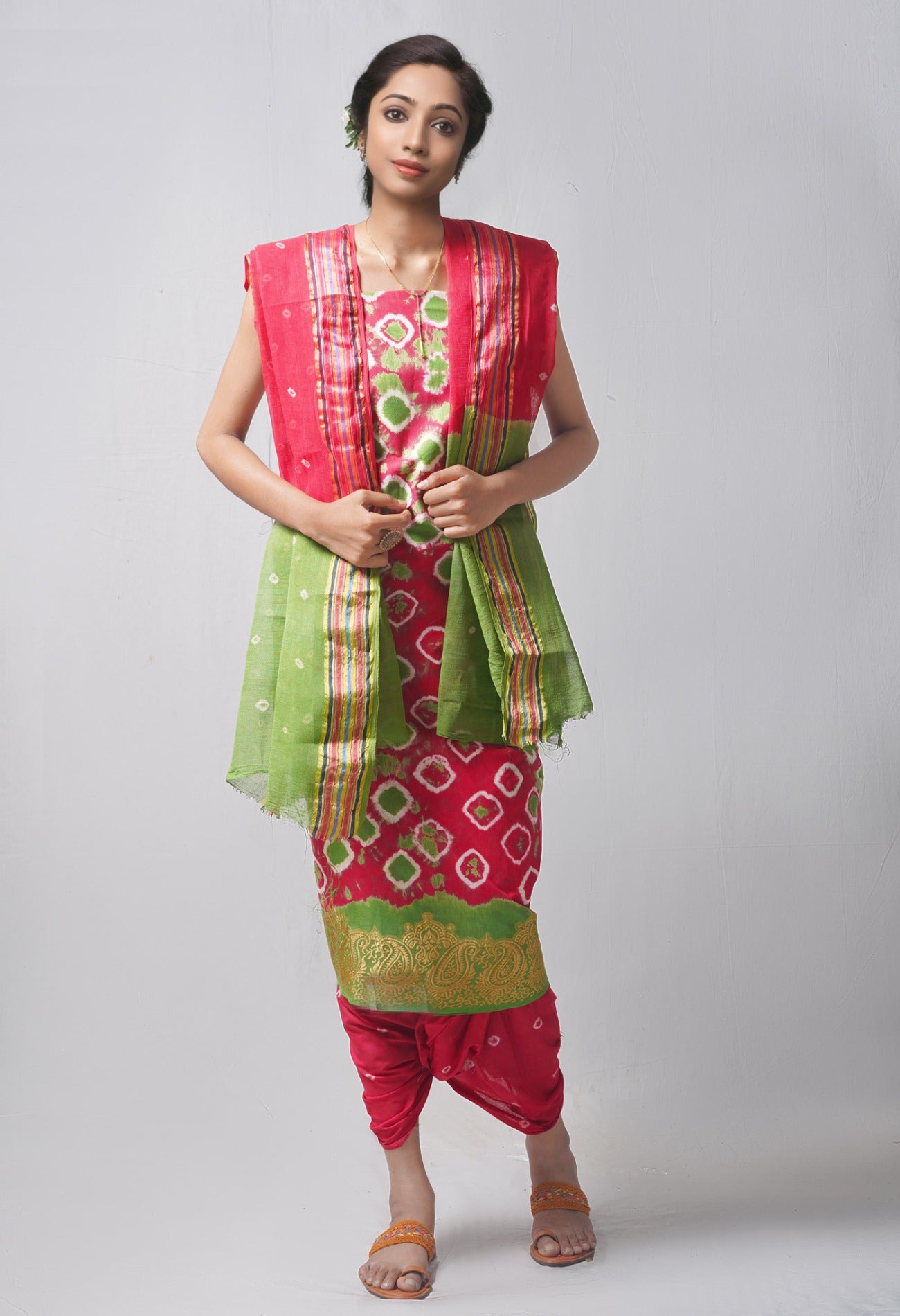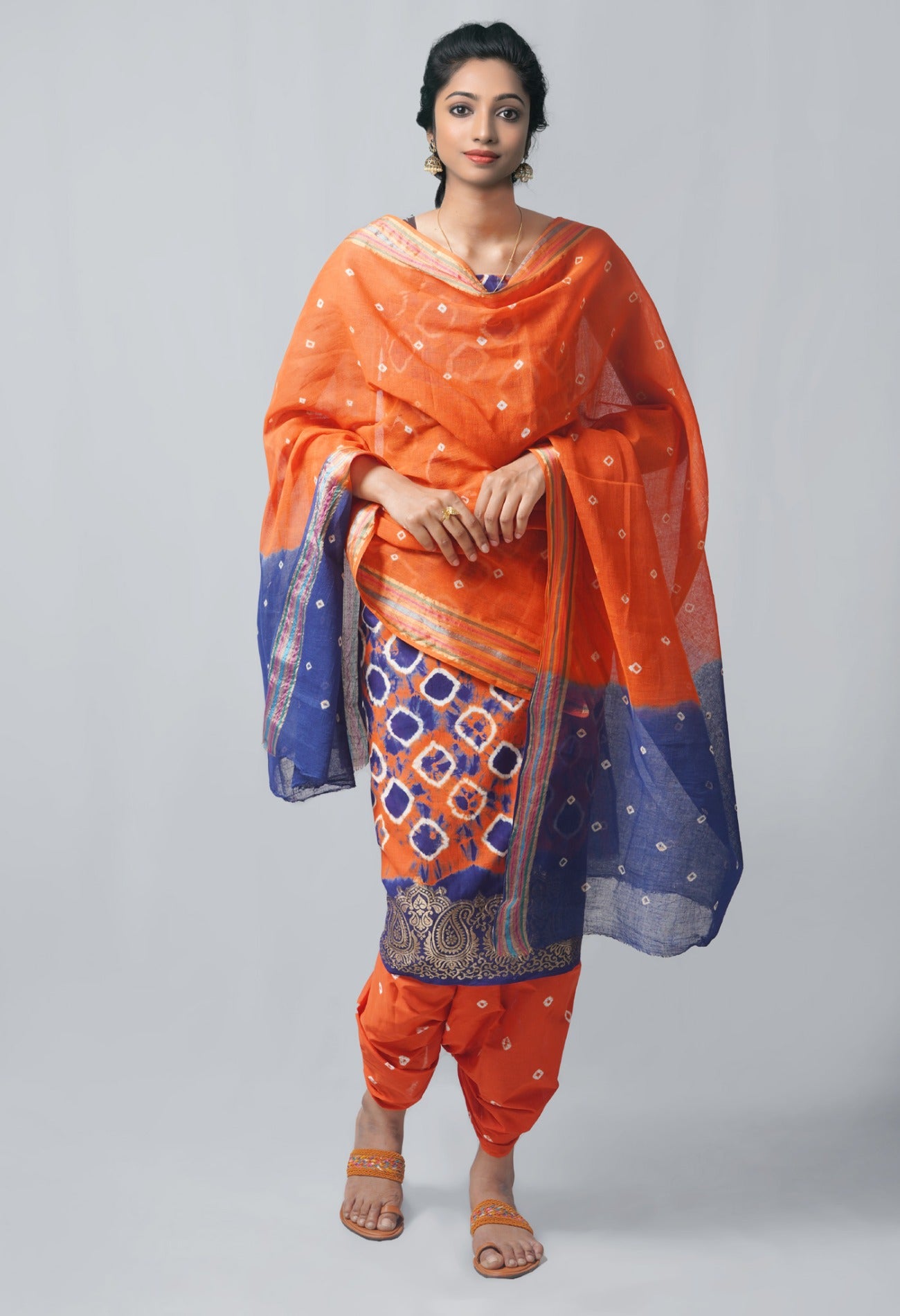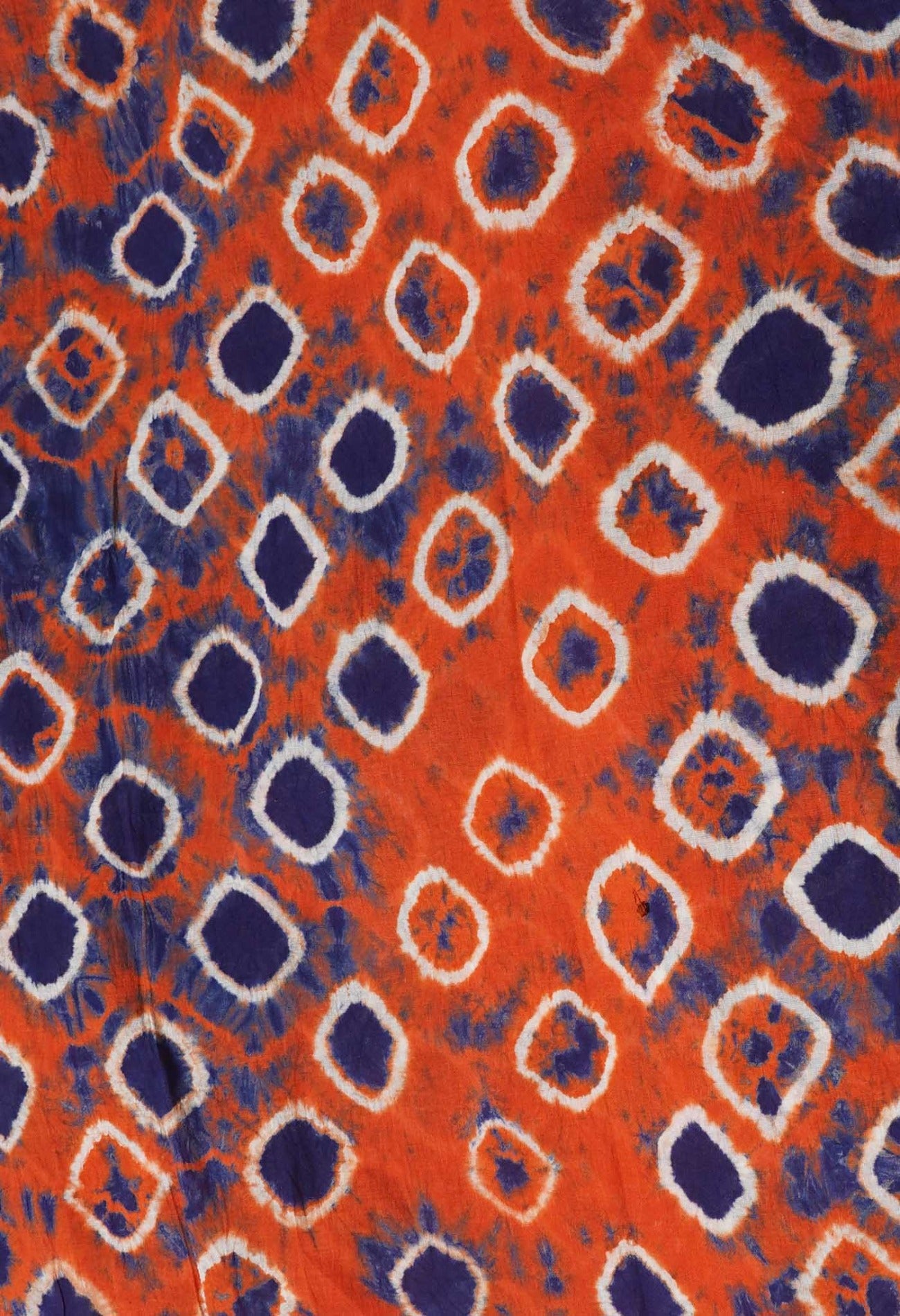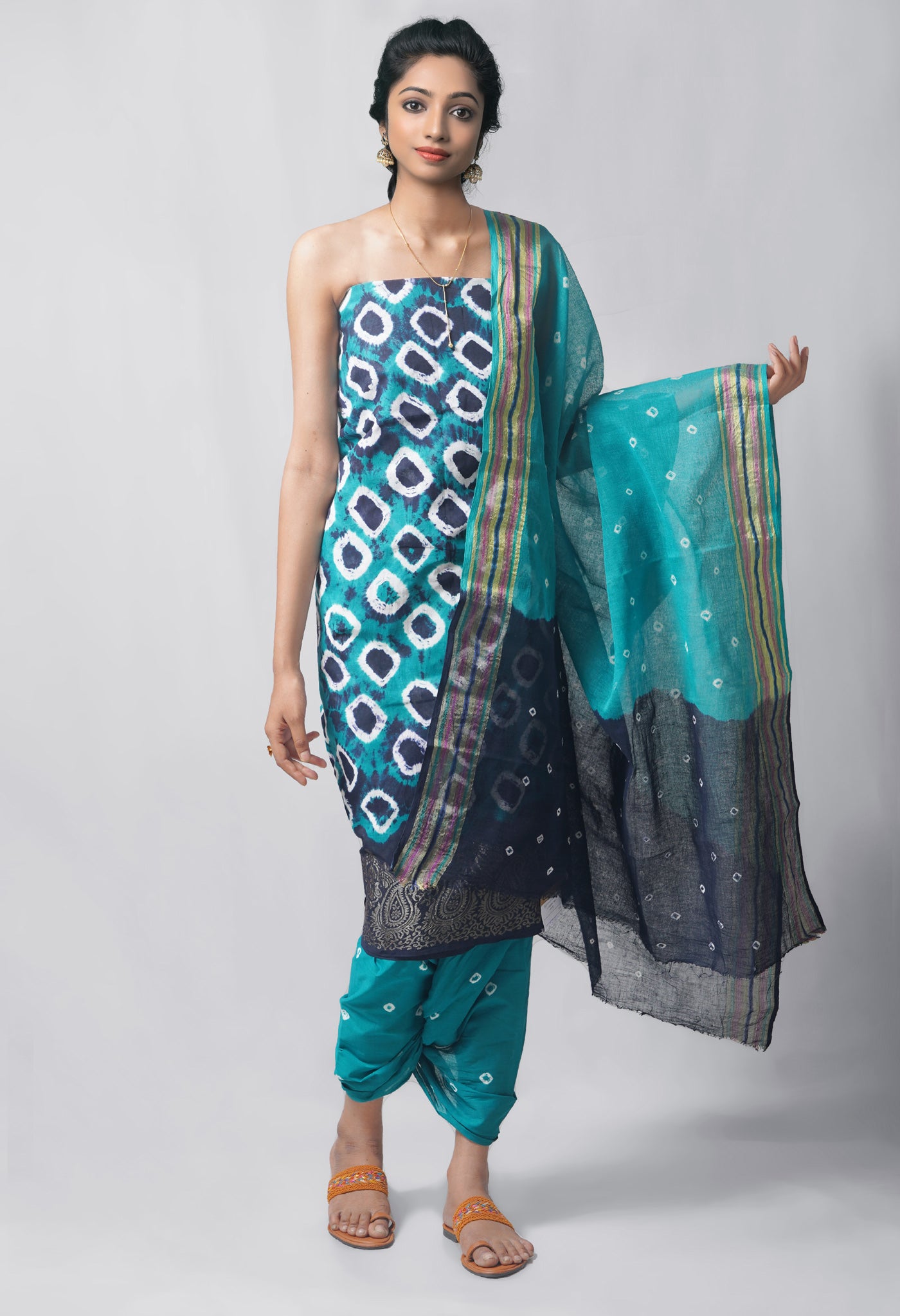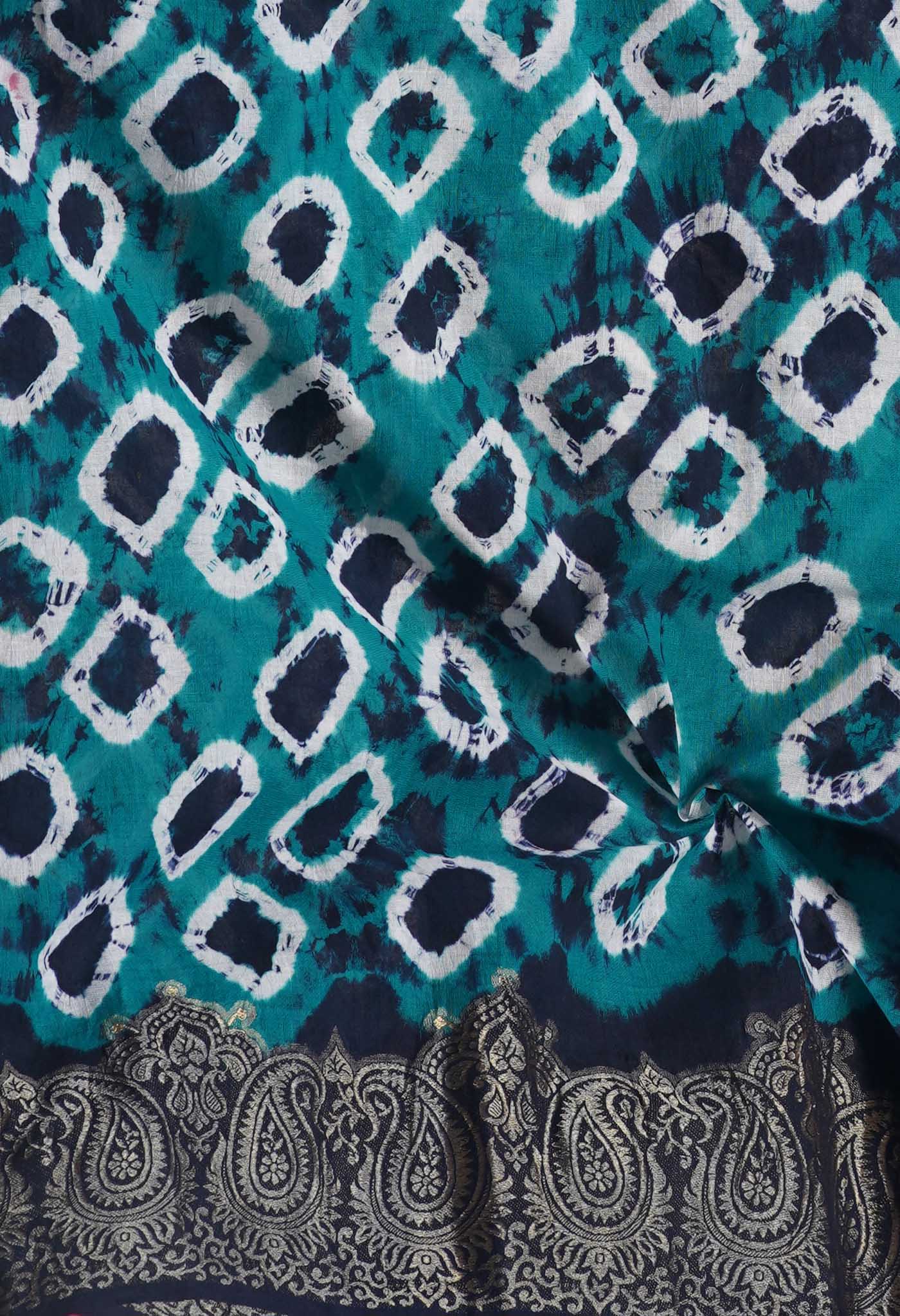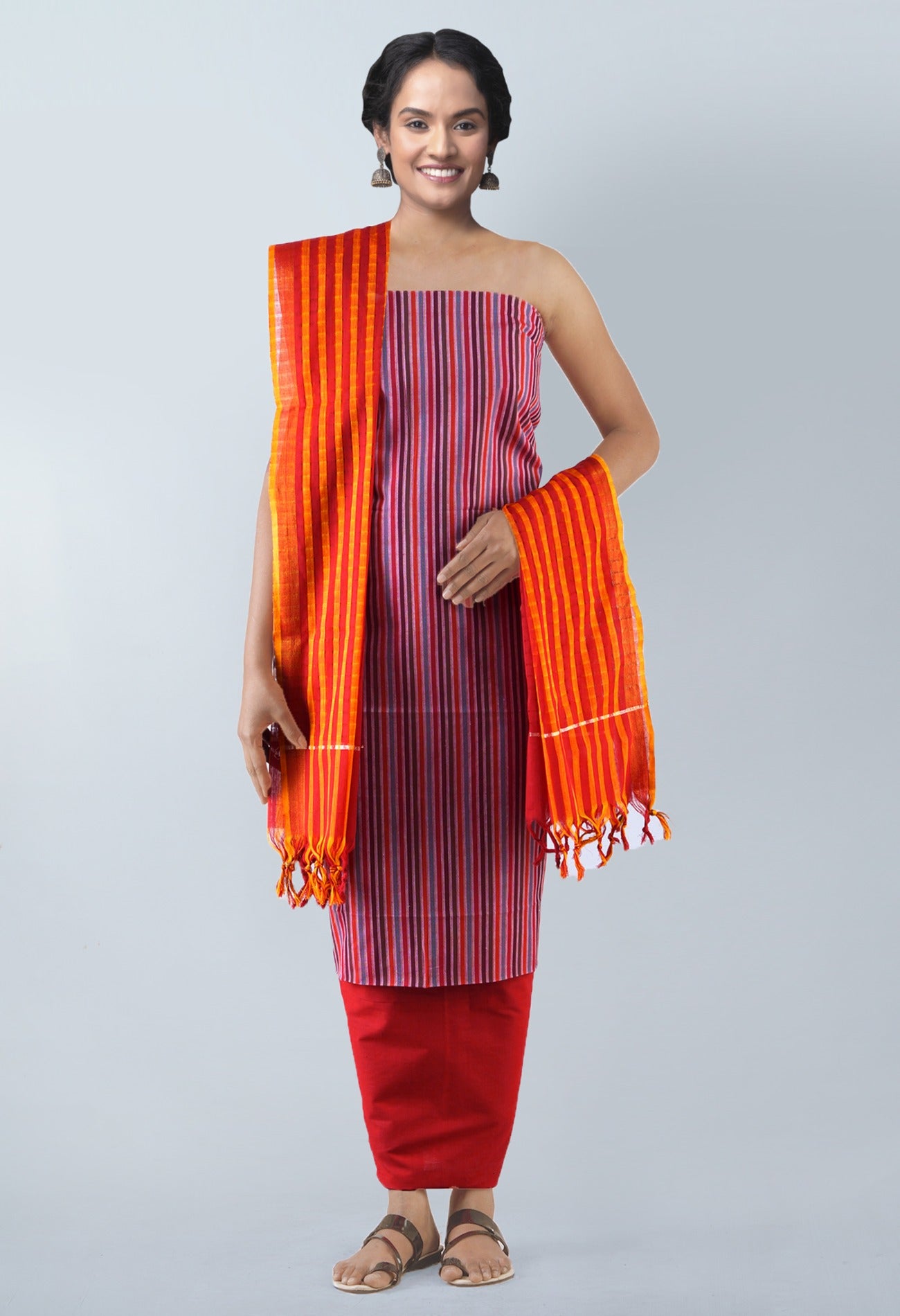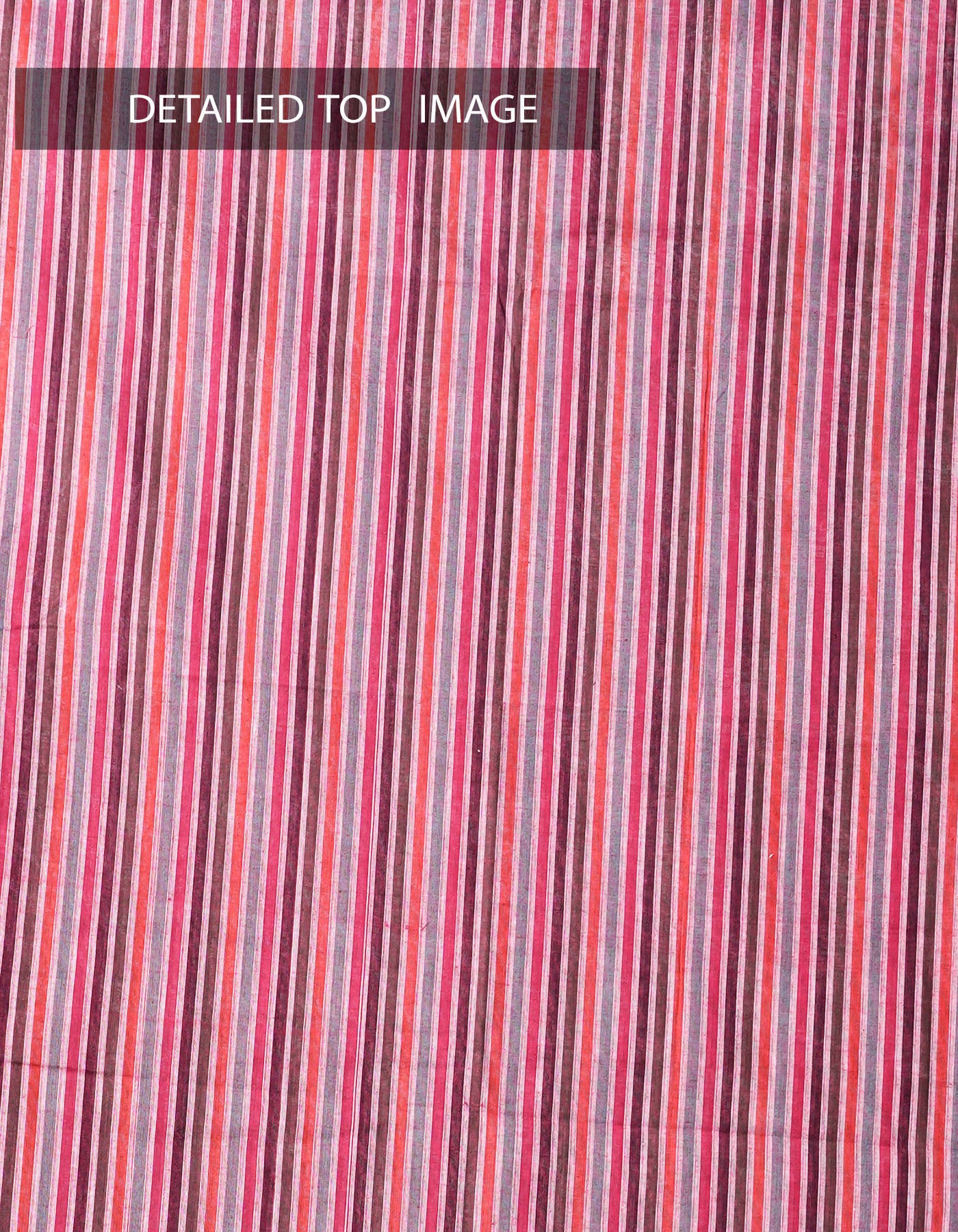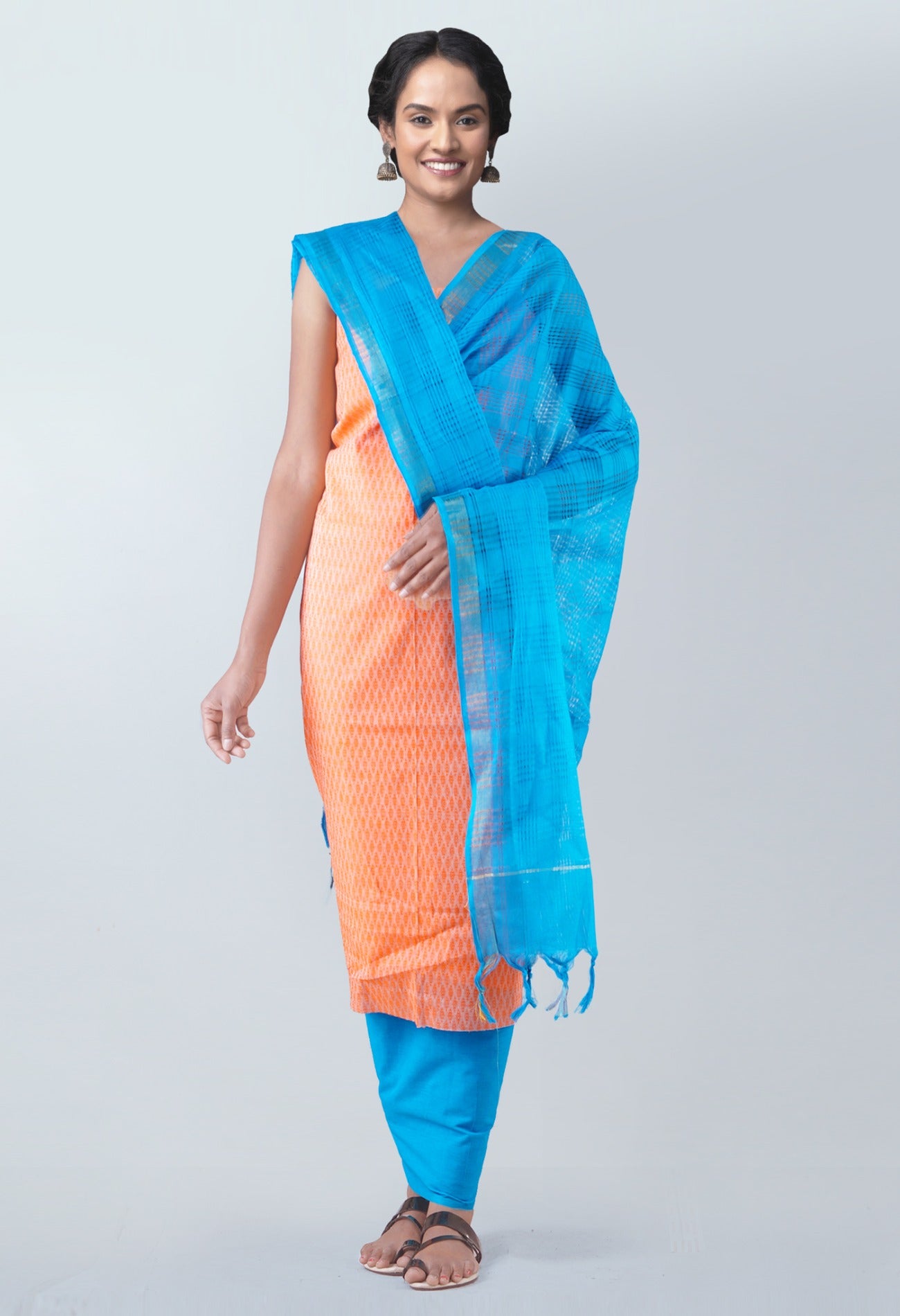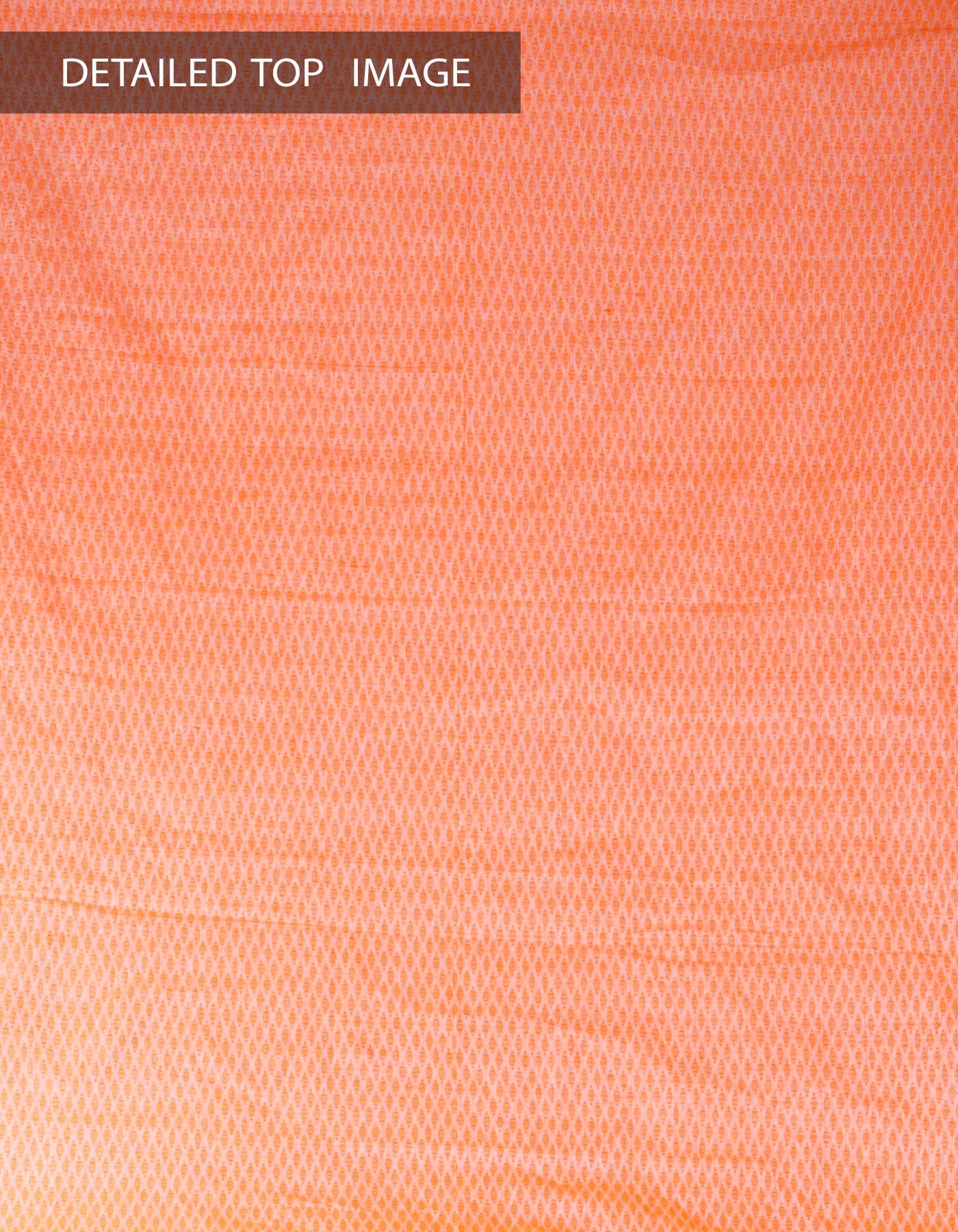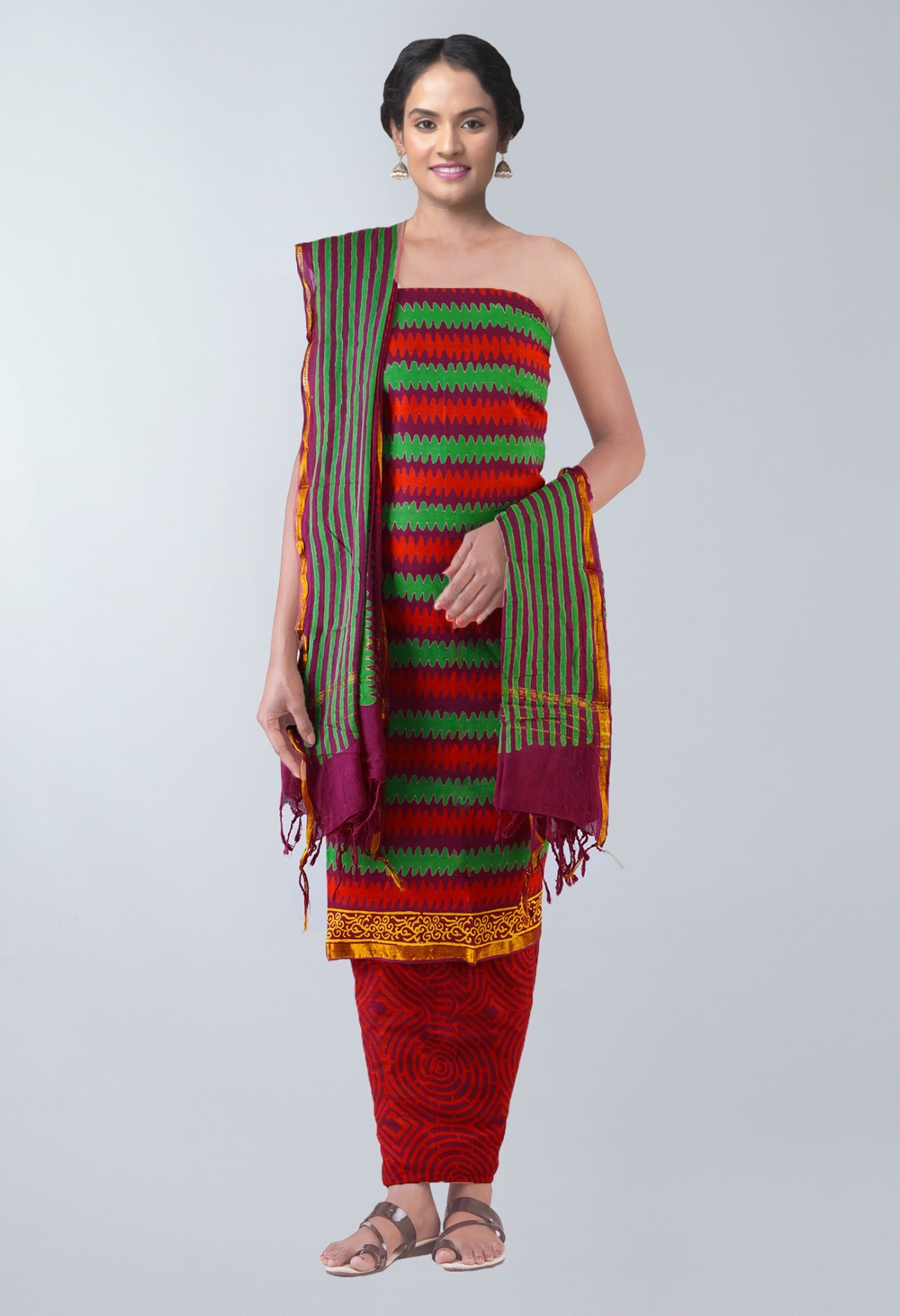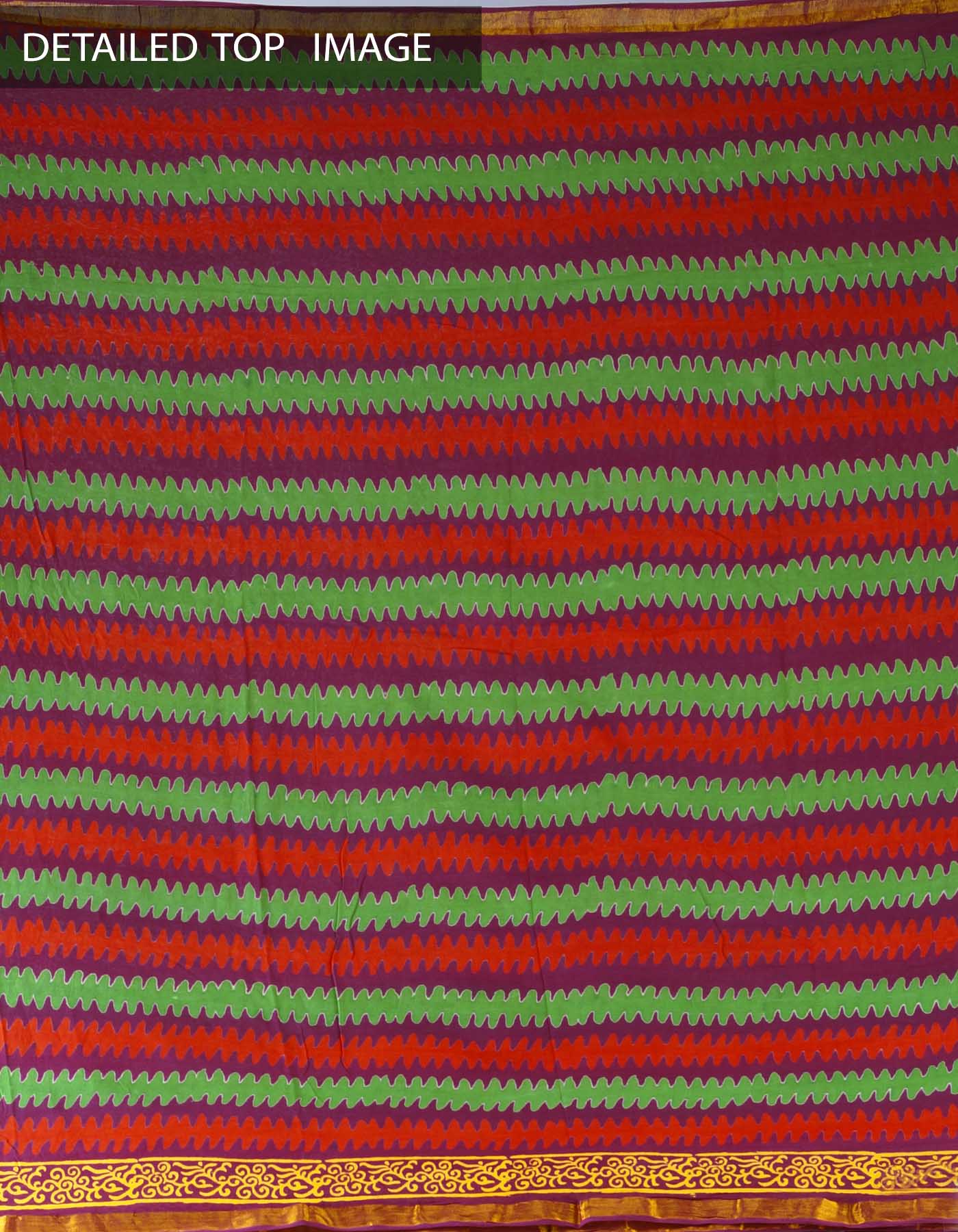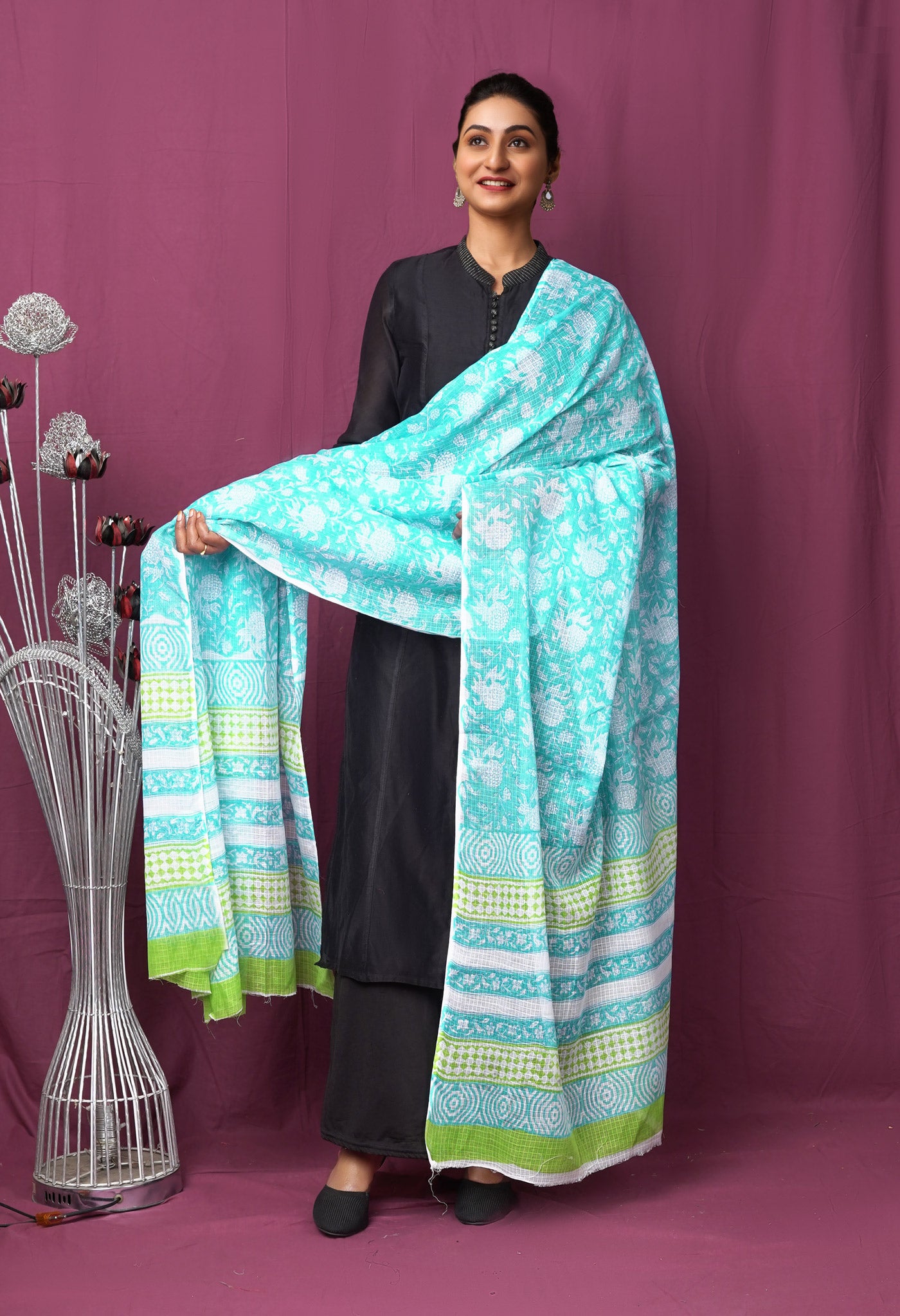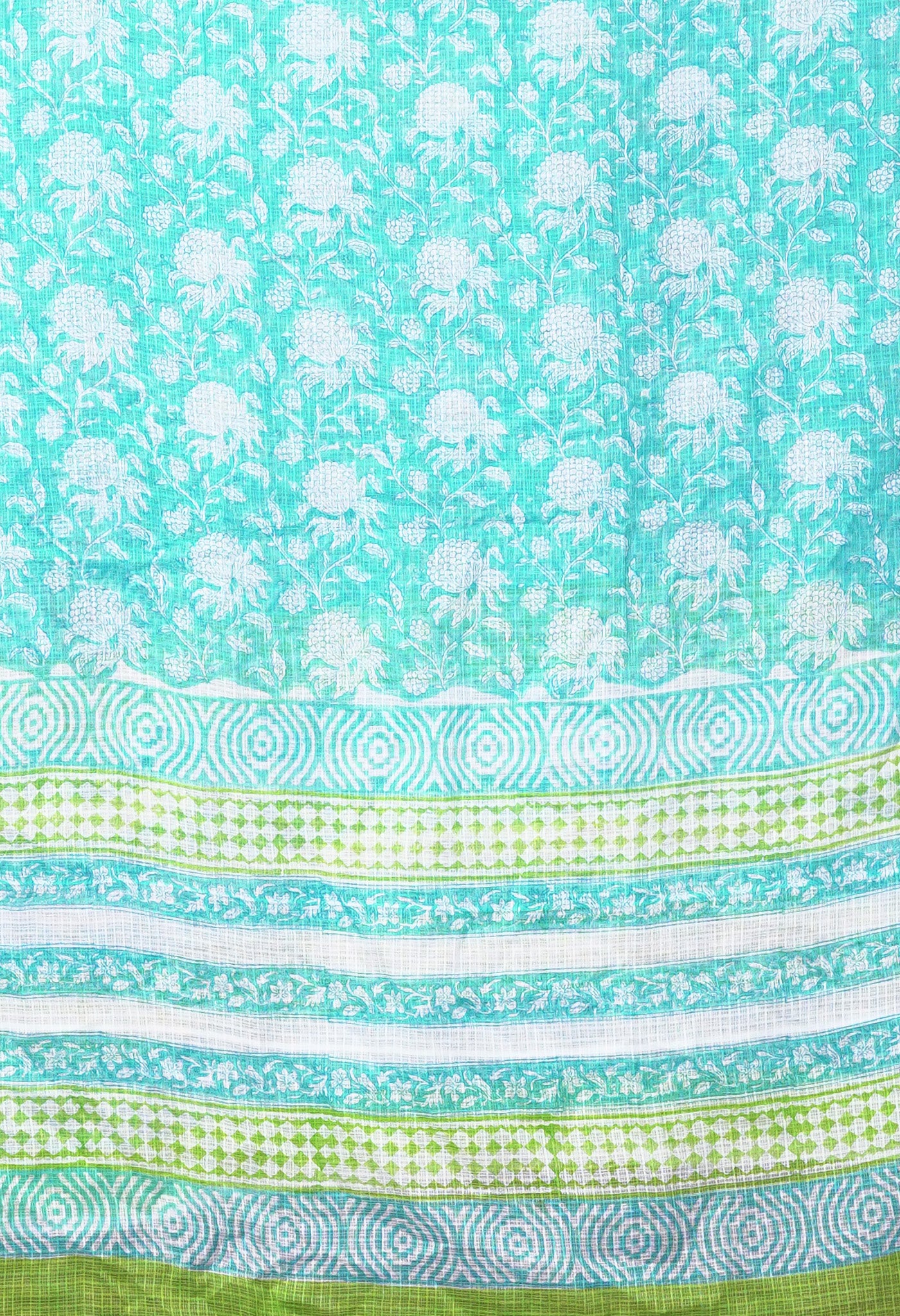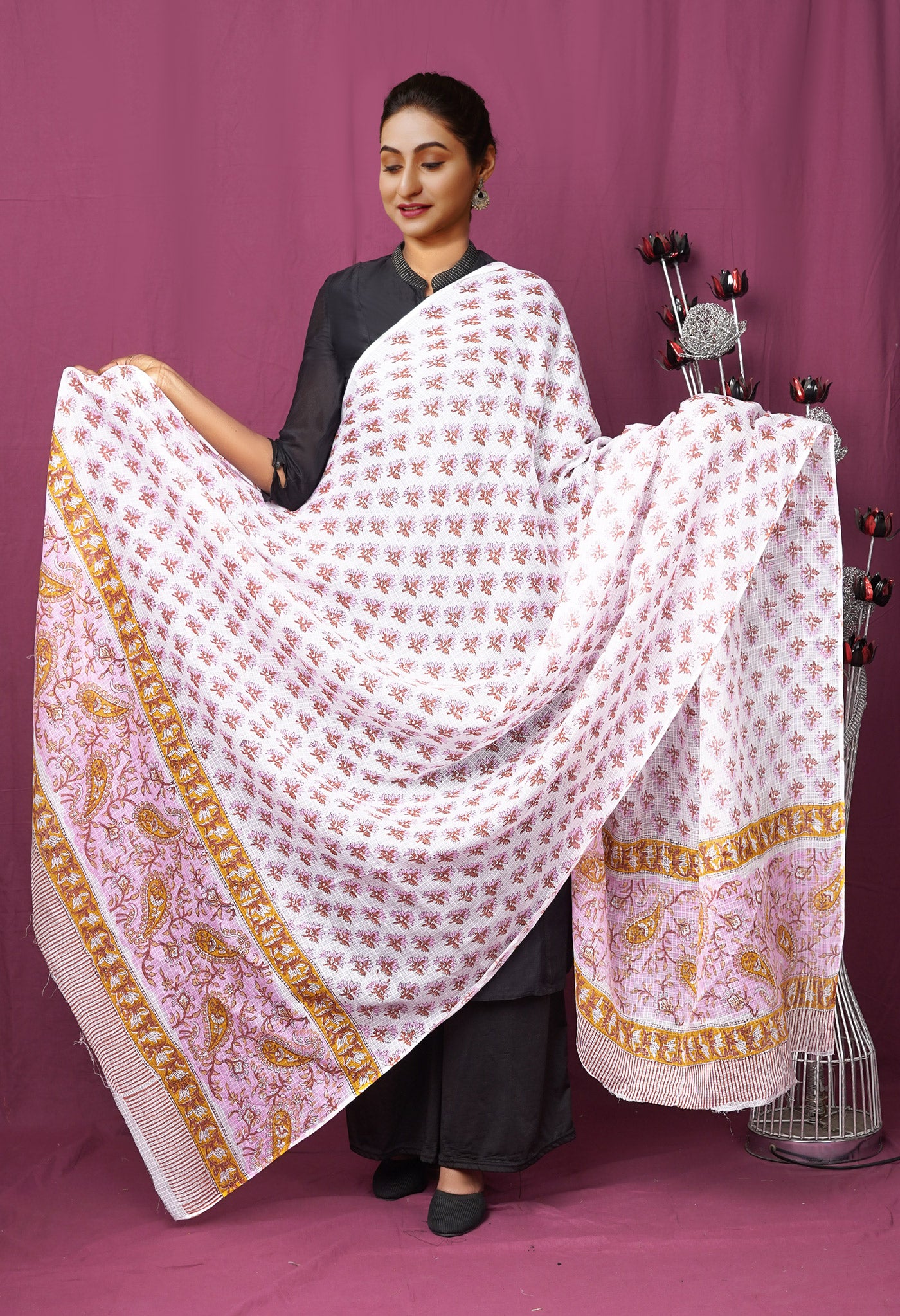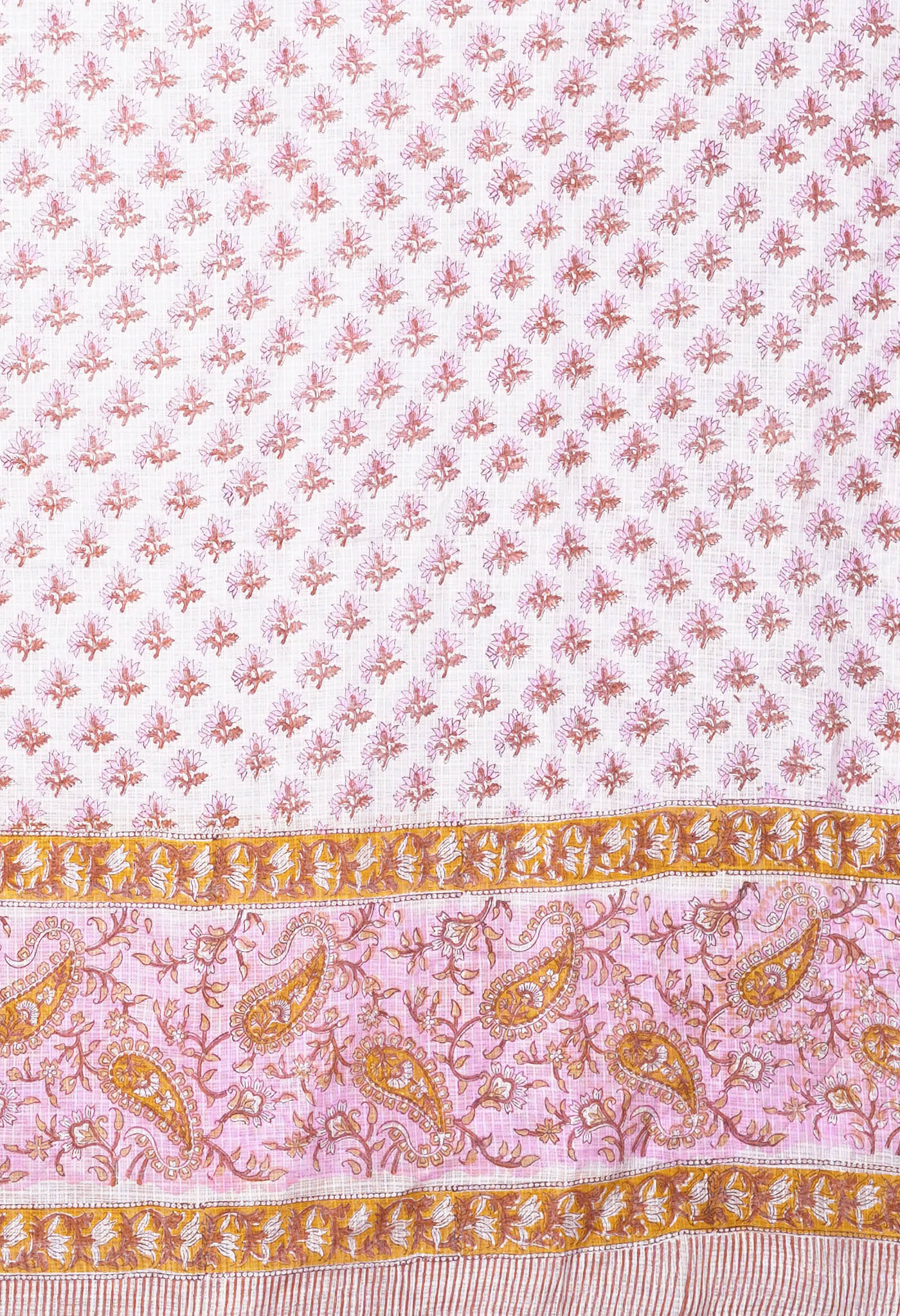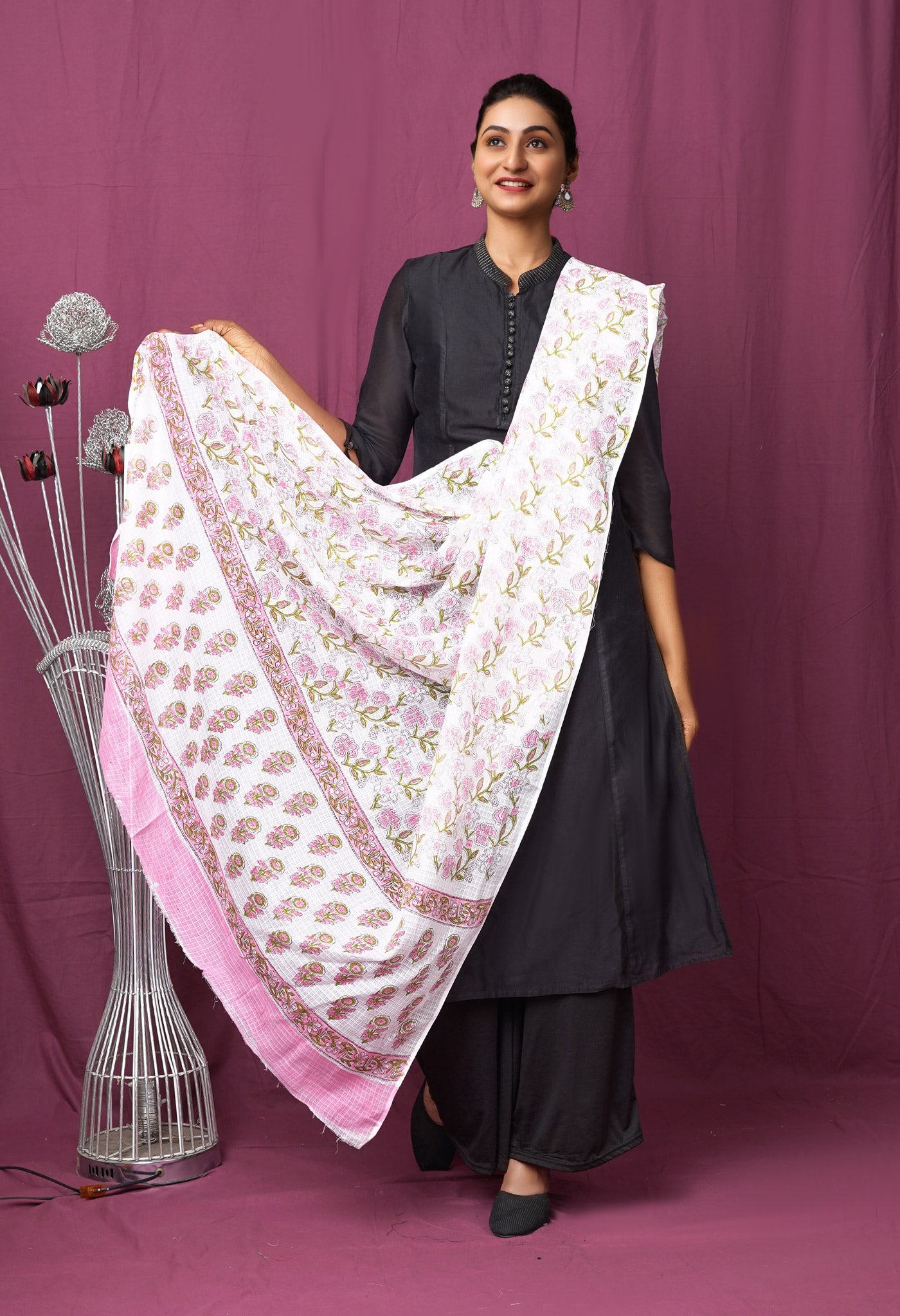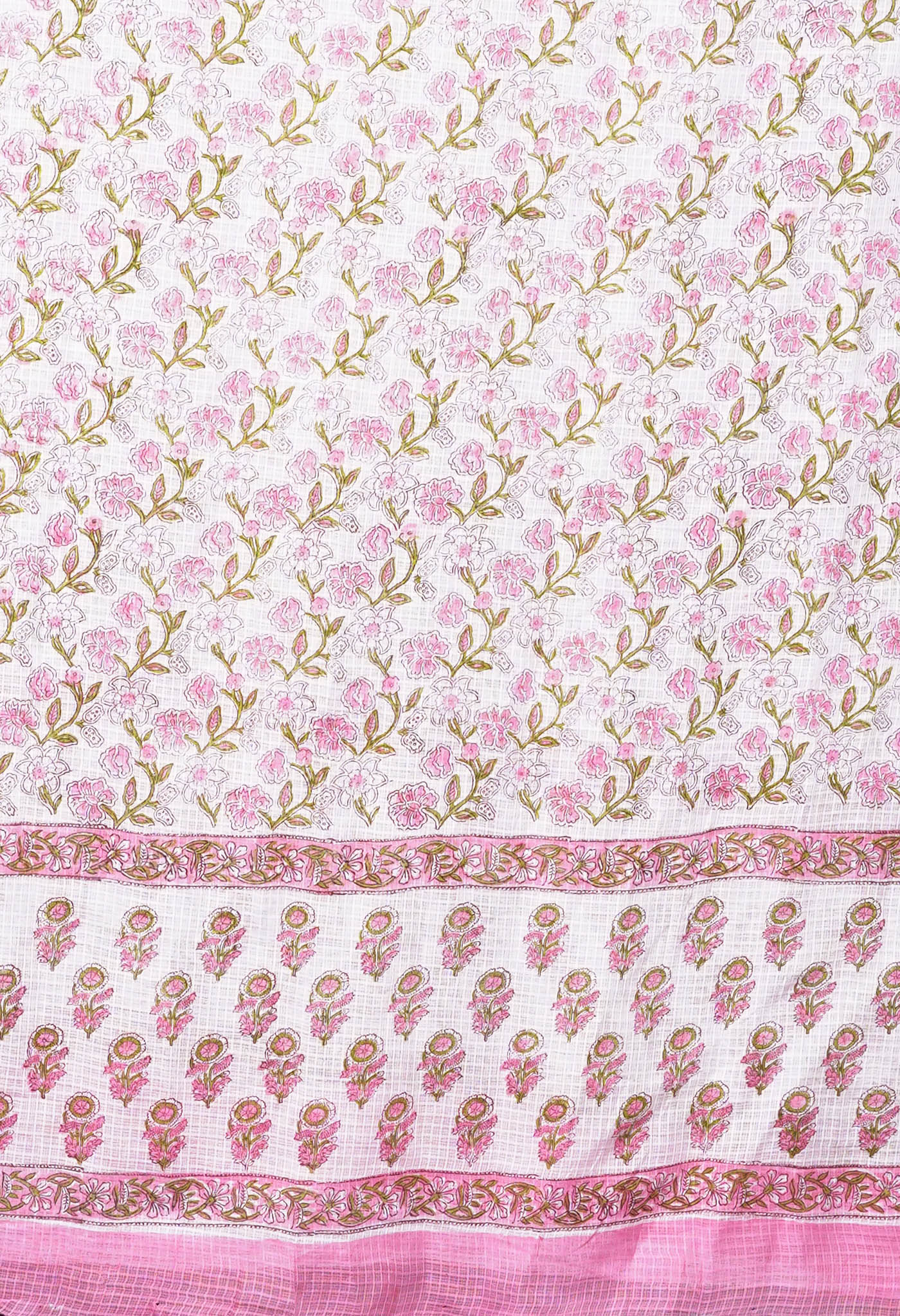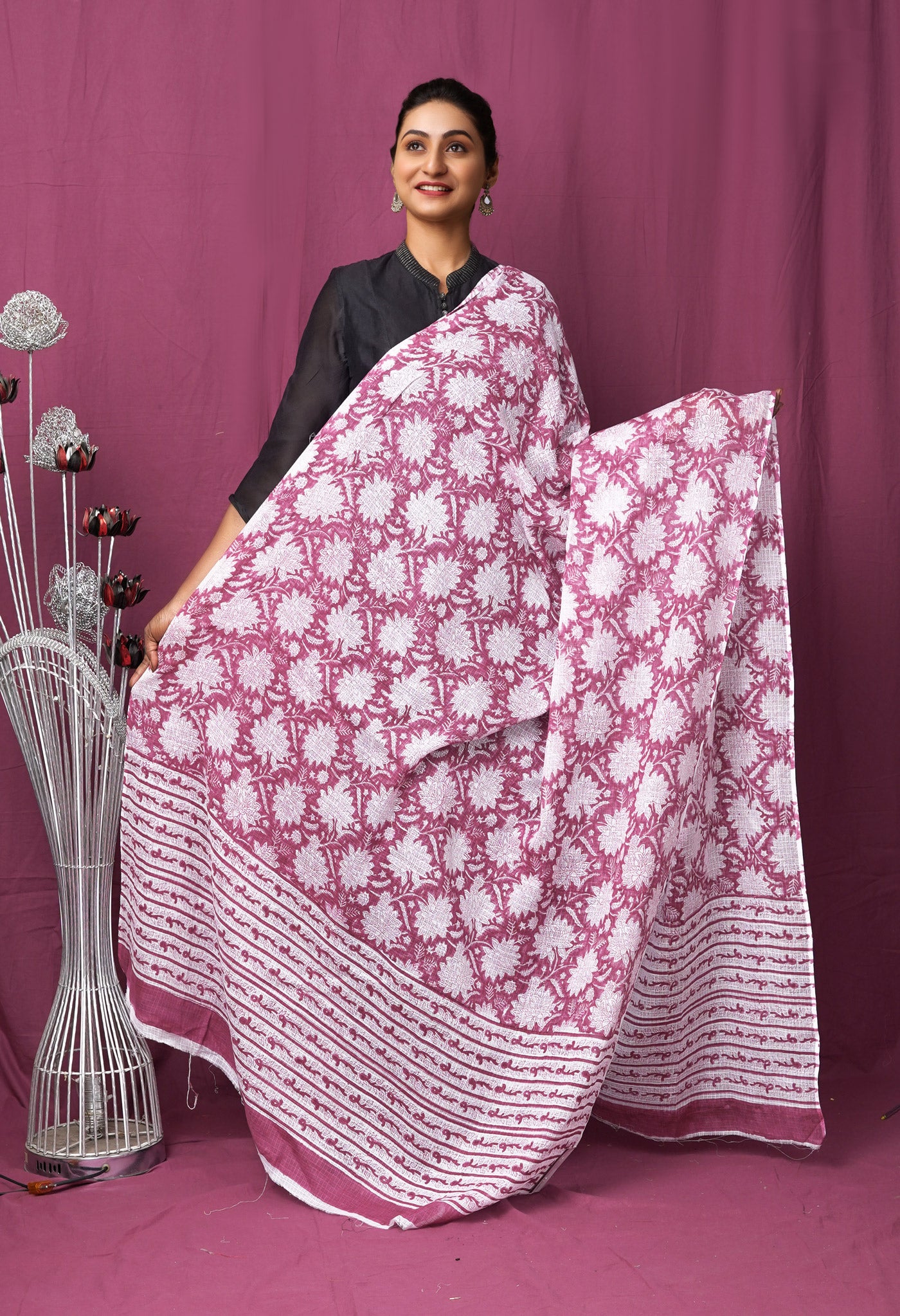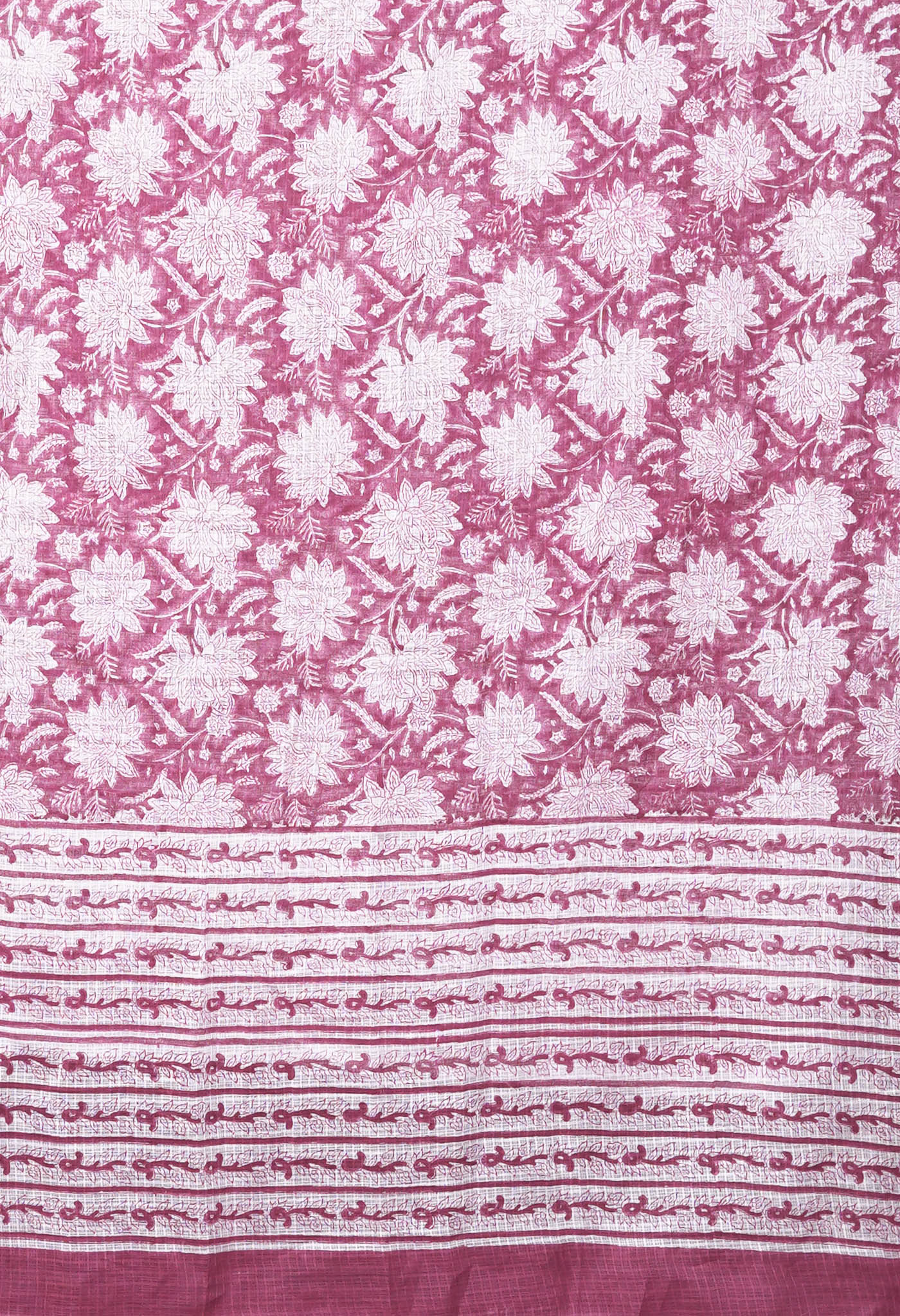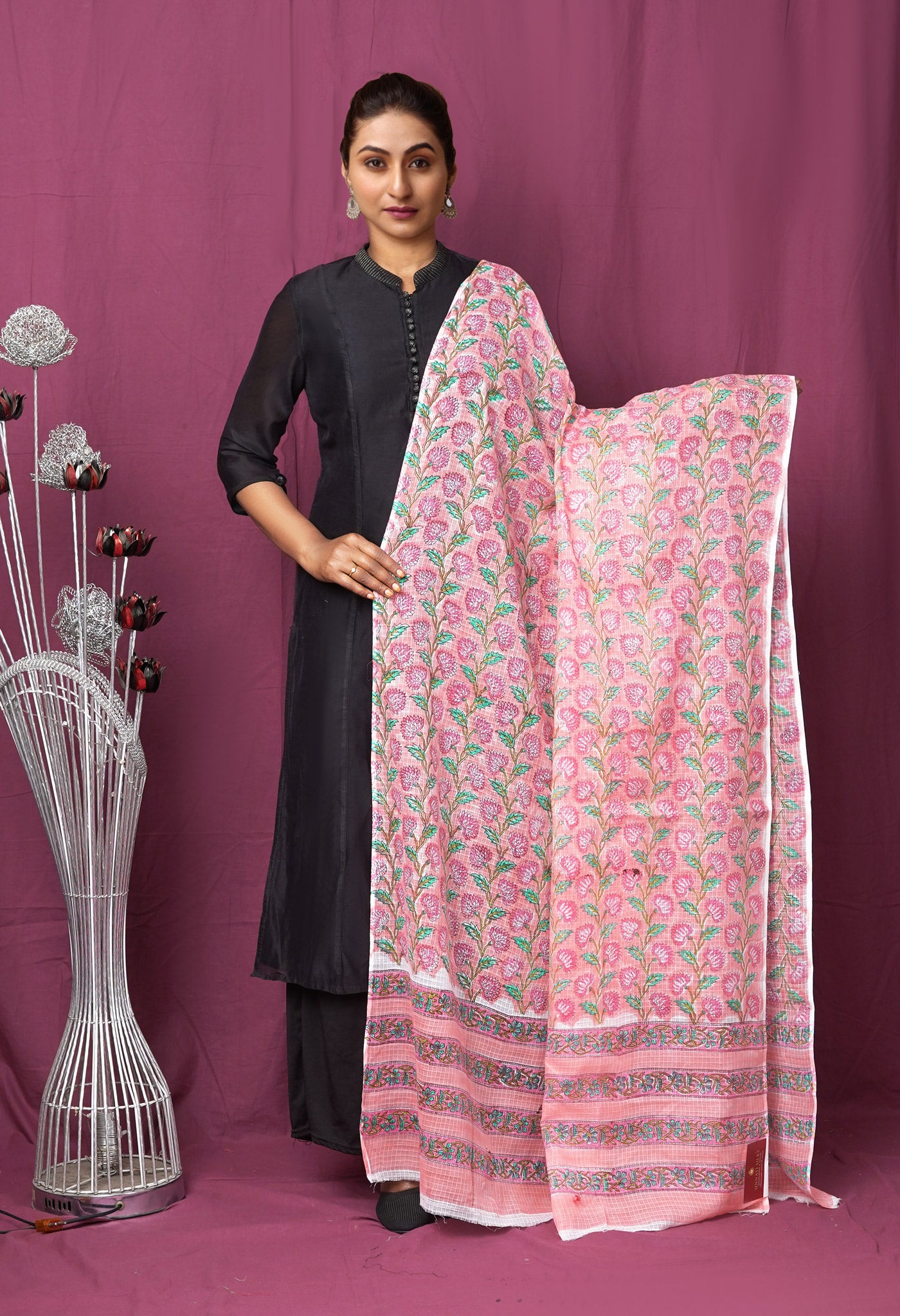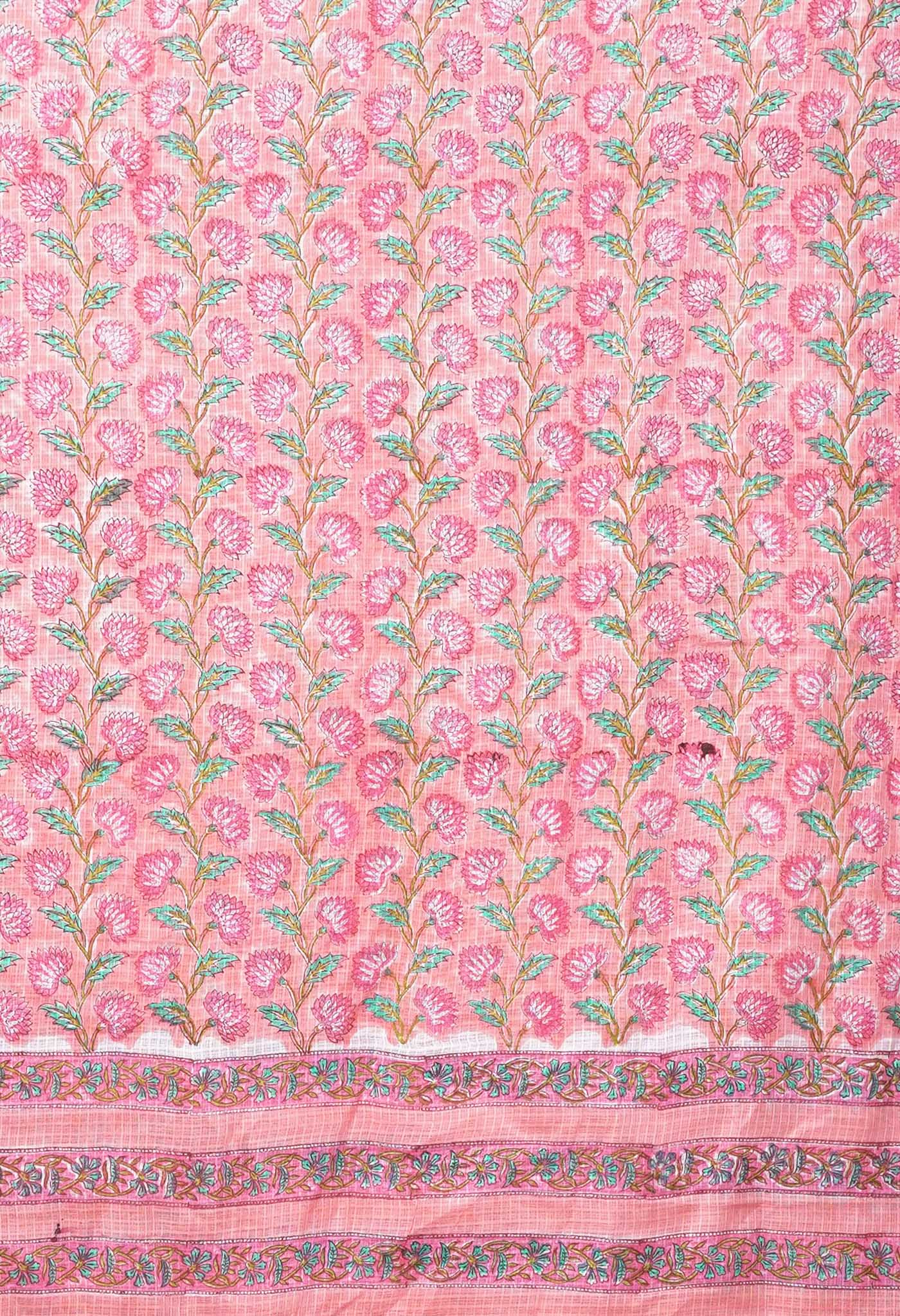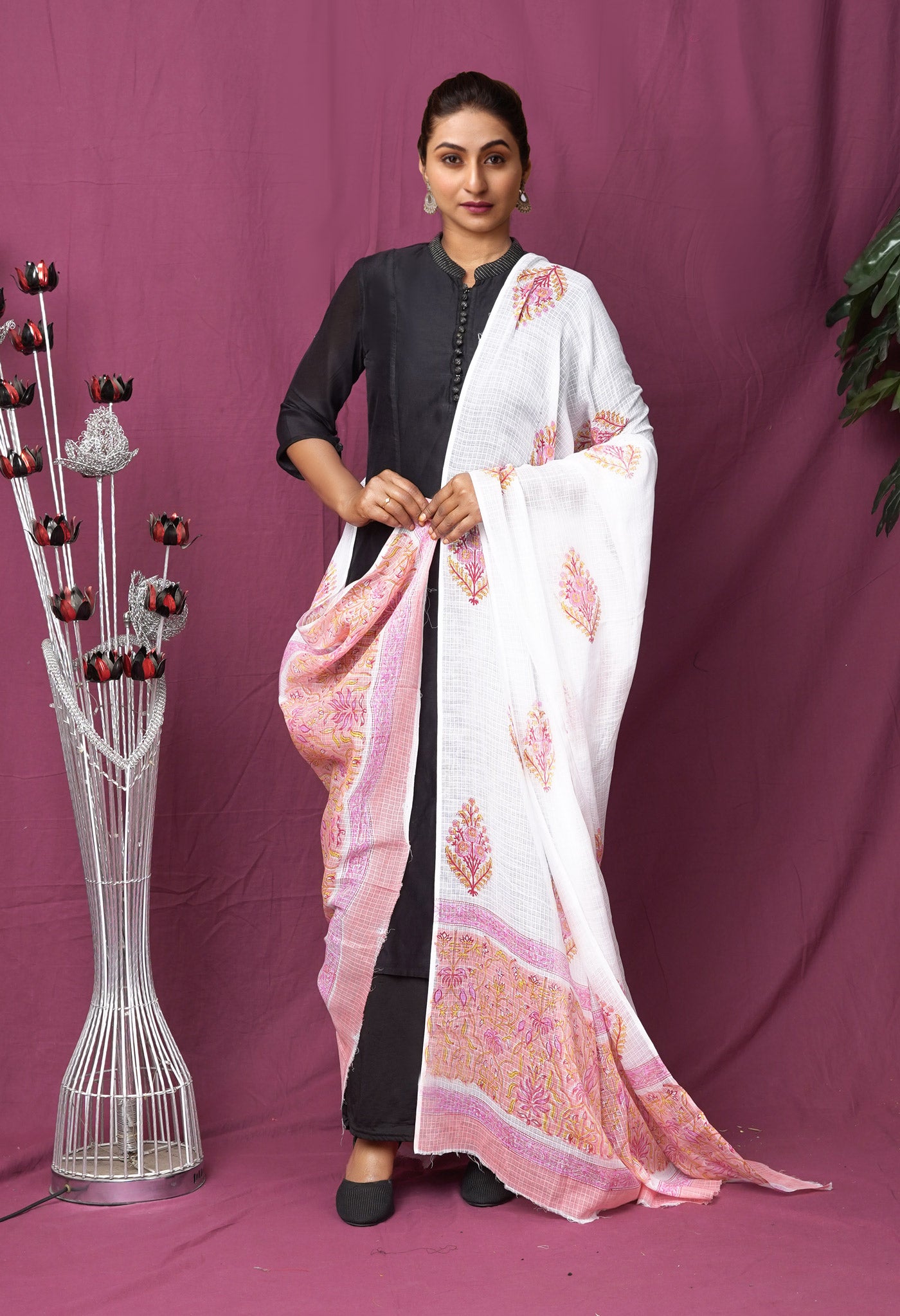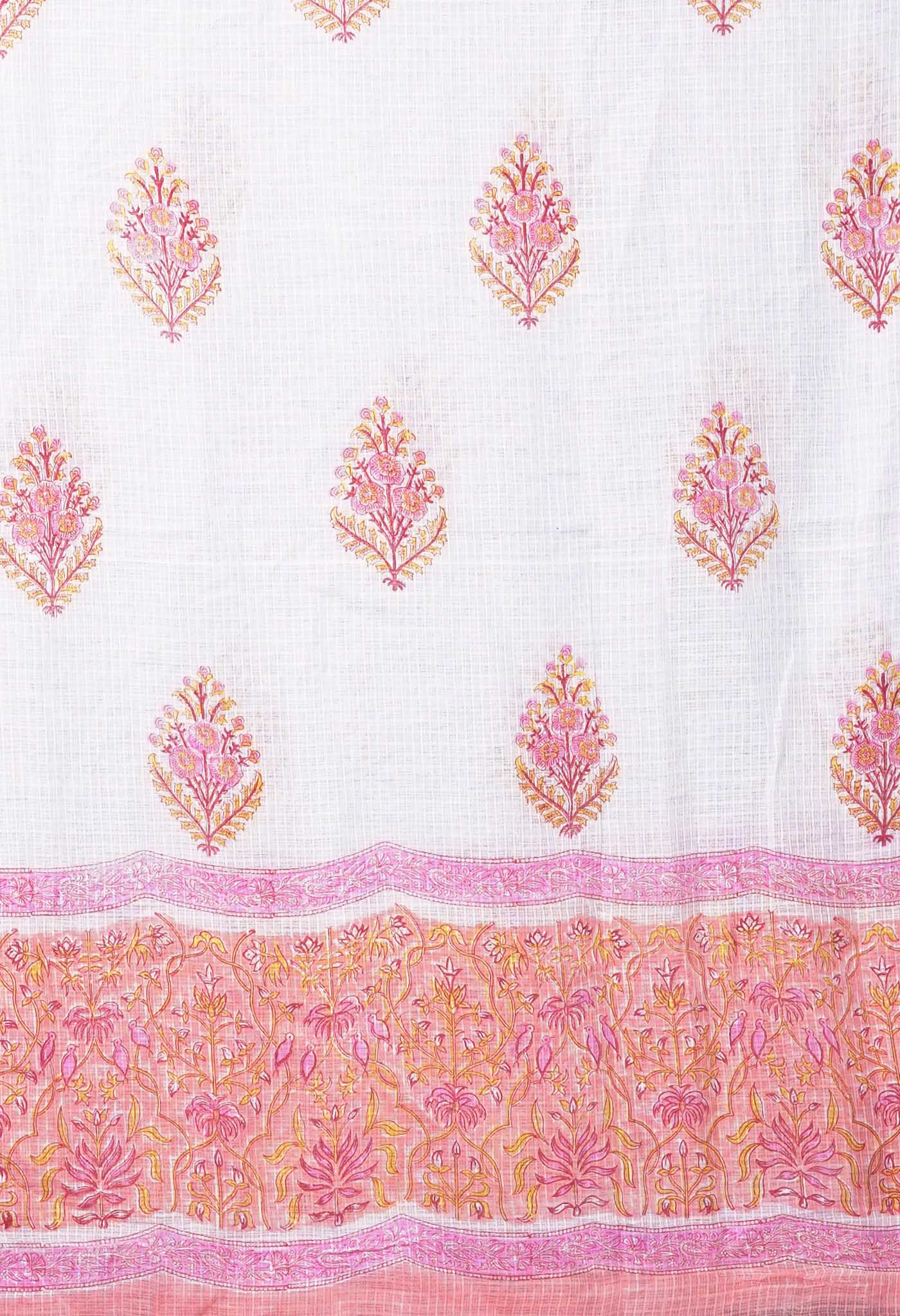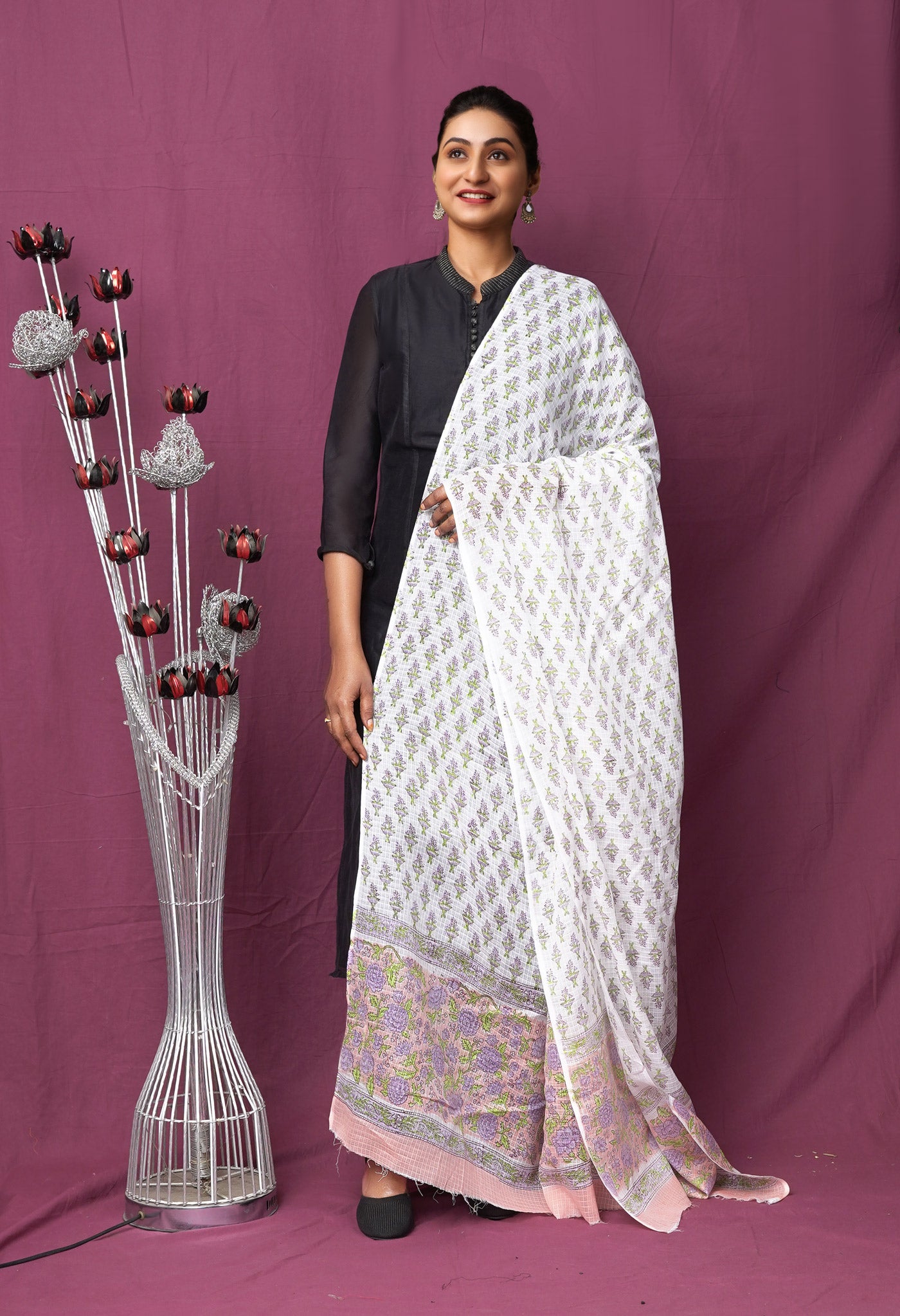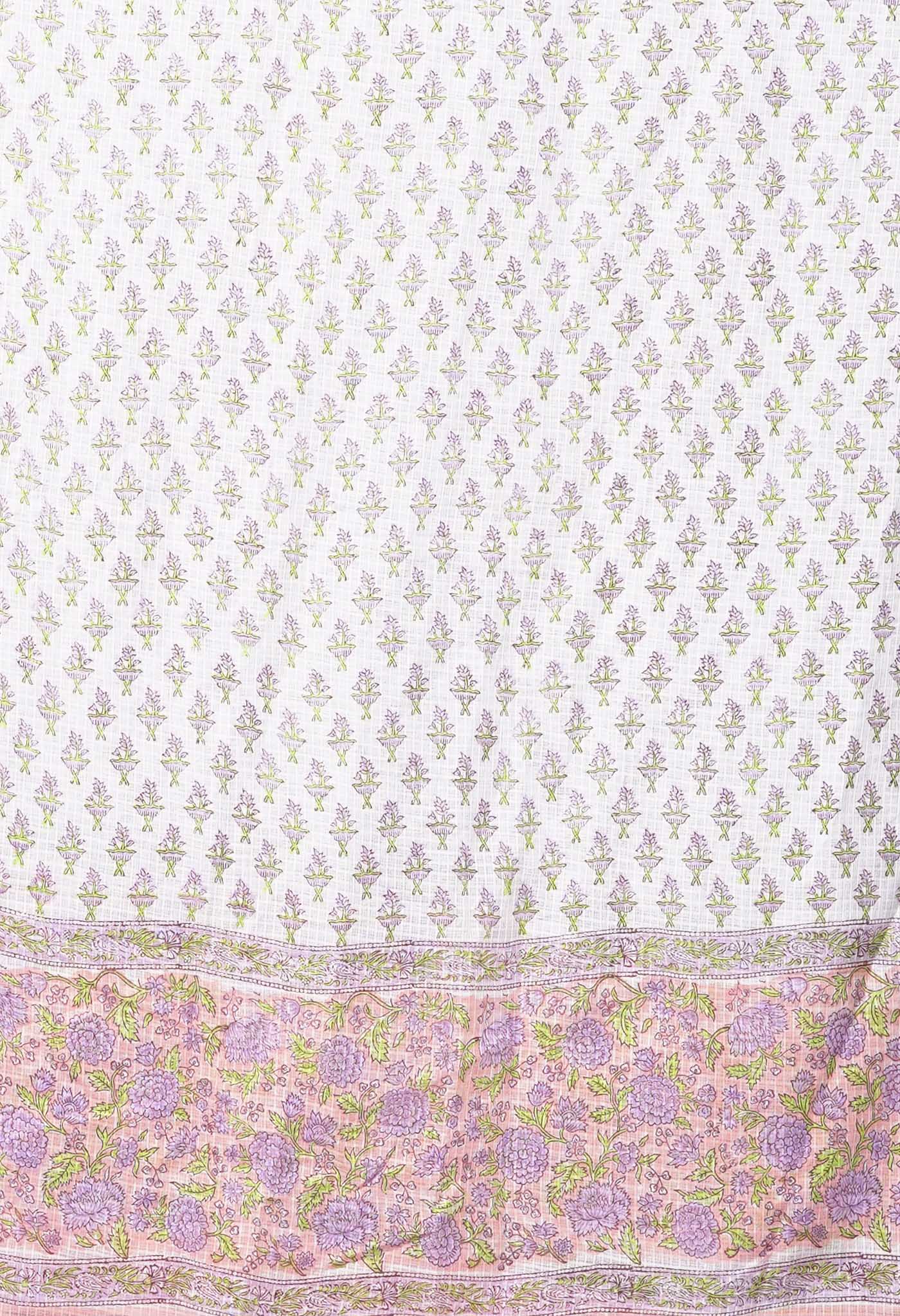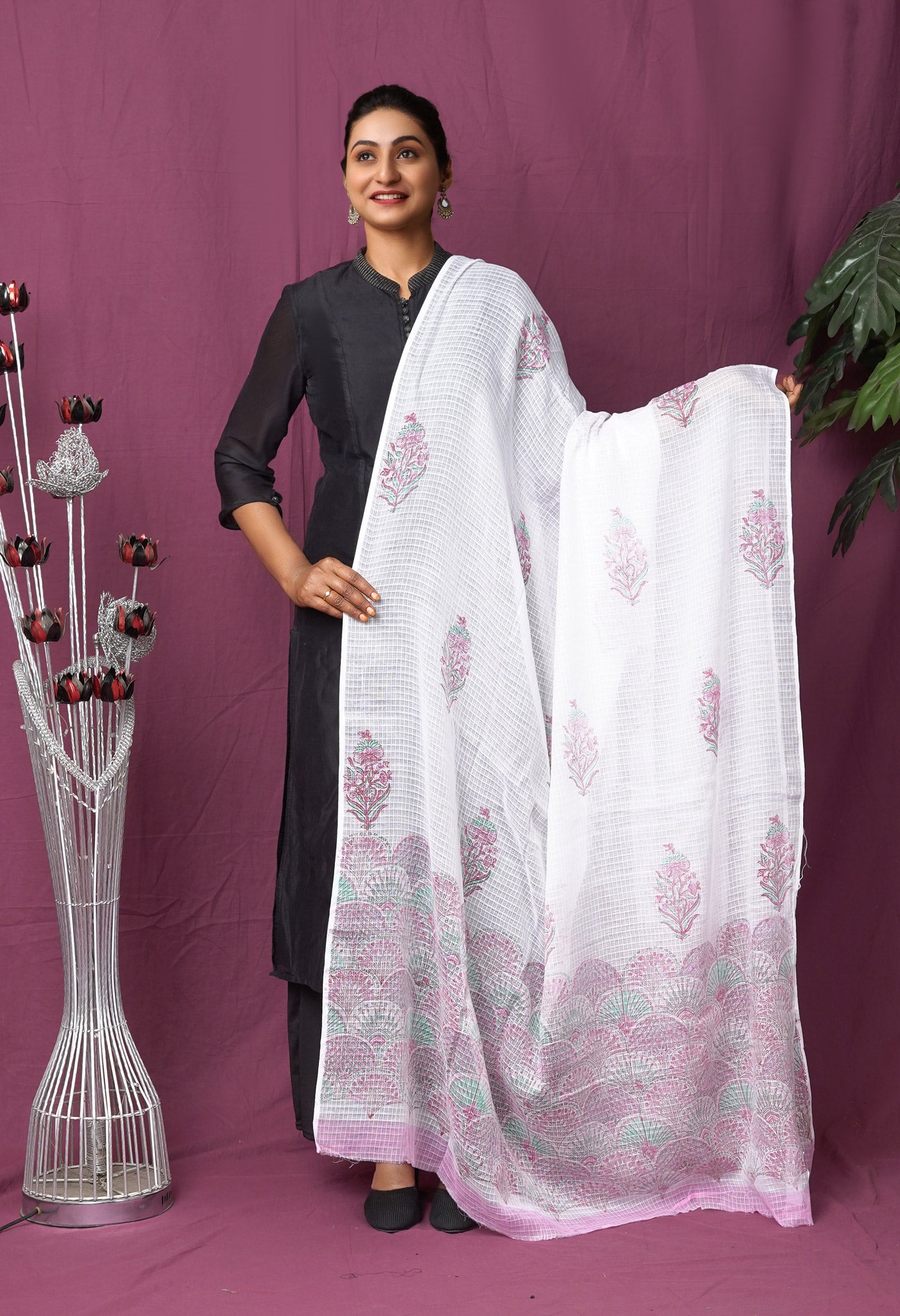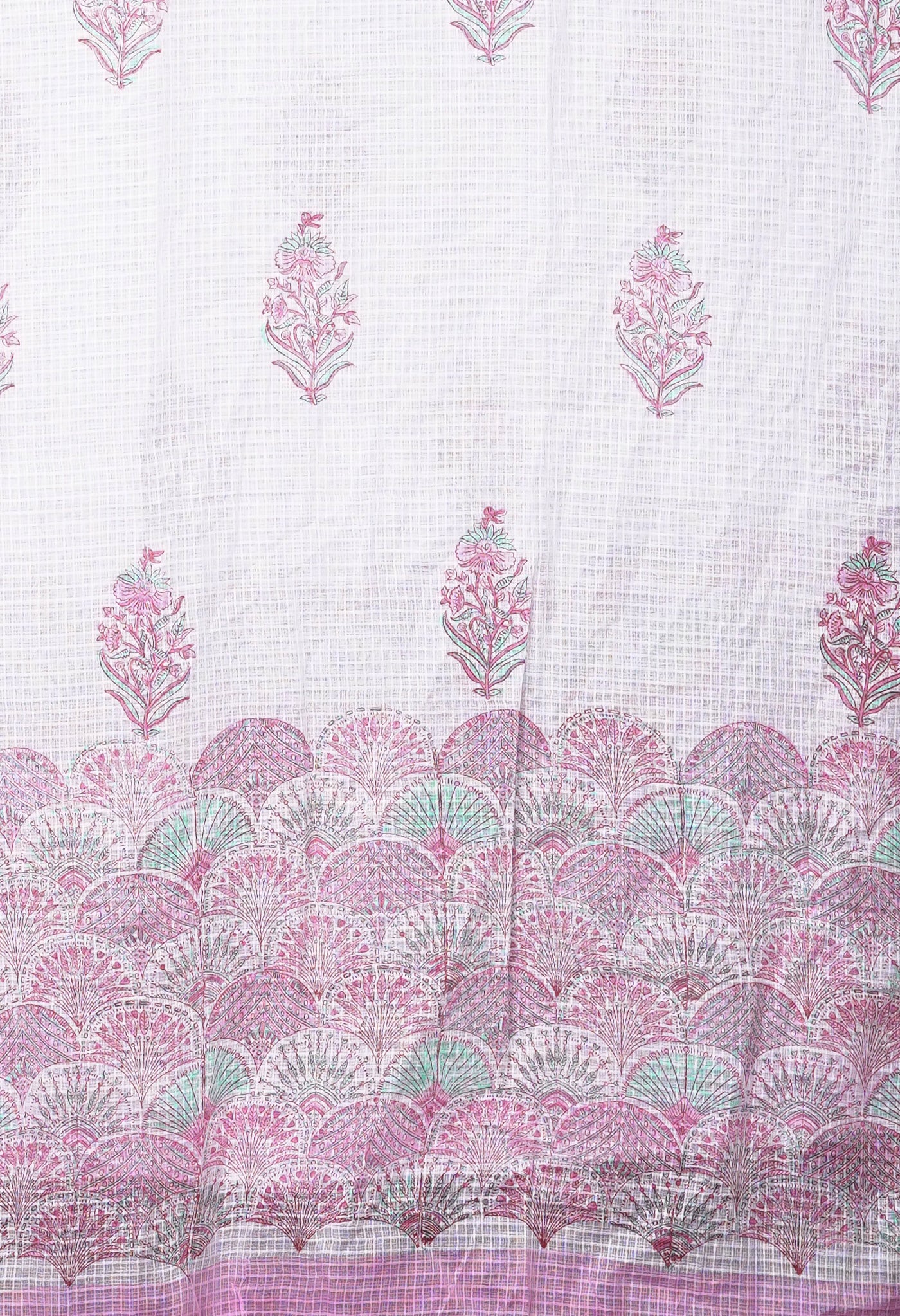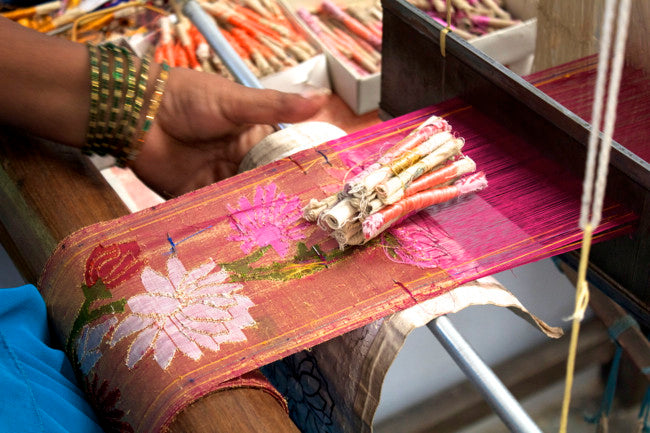
Paithani - A Legendary Craft from Maharashtra
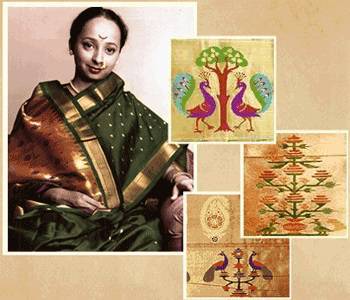 A traditional fabric of rich finery, the Paithani saree of Aurangabad, Maharastra is a splendid combination of pure silk and fine silver zari. Exquisitely hand-woven with beautiful motifs, this grand saree is known for its characteristic borders and the peacock design on the pallu.
A traditional fabric of rich finery, the Paithani saree of Aurangabad, Maharastra is a splendid combination of pure silk and fine silver zari. Exquisitely hand-woven with beautiful motifs, this grand saree is known for its characteristic borders and the peacock design on the pallu.
The Paithani sarees of Maharashtra speak of traditional finery that has sparkle and dazzle. A rich fabric that employs pure silk threads and silver dipped zari, it is a garish display that makes the saree both high-priced and special.
The rich-look Paithani sarees have a plain or spotted body, a characteristic square design with its variations on the coloured borders and a typical Peacock design on the pallu or end-piece.
Known for the more popular kaleidoscopic variety that displays a fine shimmering effect on account of more than one coloured silk thread being used in the weave, this saree of pure silk and silver zari is not only costly but also a much sought after and prized possession on account of the richness of the fabric.
A plain weave, the Paithani gets its exquisite look from the special way in which the pure silk weft interstices with the silver zari on the warp. There could be two different borders for the body which would involve different silk wefts for the borders and body.  Additional complexity would come in when the pallu is also taken up separately. This not only calls for skill but tremendous calculation as well.
Additional complexity would come in when the pallu is also taken up separately. This not only calls for skill but tremendous calculation as well.
There are three types of silk that are used in making Paithani sarees
Charkha – the most common and widely used, but dull looking and quite uneven.
Ciddle gatta – the more expensive, thin, smooth, shiny and even variety
China silk – the really expensive one and sparingly used.
Procurement of silk is made from Bangalore.
Golden zari is available from Surat and Yeola but with costs becoming prohibitive, the leanings are more towards shiny silver zari from Surat.
Fine strands of silk are used in the warp, while light but higher density twisted silk is used in the weft. The Paithani naturally gains weight on account of the silk and heavy zari finery that could reach upto 1.5 Kg. The warp is made by rolling on pegs or drums and in the form of a ball at the back of the loom enough for the making of two saris. The three shuttle weaving adopted for two borders and plain body could have an additional pallu or end piece warp of silk twisted on the main body. When the zari threads on the warp mingle with the silk threads from the weft with an interlocking design, the dazzling tapestry effect of the Paithani is visibly displayed.

The silk used in the weft is Charkha silk and Sidlaghatta silk whereas filature silk is used for the warp.
The Border and Pallu
The Paithani attains its winsome features on account of its charismatic borders and pallu. There was a time when pure gold was used with copper to give it strength for the borders. Now it is silver zari with gold plating. Borders are created with interlocked weft technique with coloured silk or zari. When zari is used, ground coloured silk patterns are added as a supplementary weft in the form of flowery vines.
 There are two types of borders – the Narali and the Pankhi. It is the crafting the inlay border paths that is quite complex and intricate and requires a lot of skill. The borders and pallu are woven in zari irrespective of the body colour.
There are two types of borders – the Narali and the Pankhi. It is the crafting the inlay border paths that is quite complex and intricate and requires a lot of skill. The borders and pallu are woven in zari irrespective of the body colour.
Motifs are one of more of the most attractive features on the Paithani. The motifs on the Body and the Pallu or end piece are quite different.
The influence of Ajanta and Ellora cave sculptures and Buddhist paintings have evolved a typical range of motifs for the main body. They include the Lotus flower, swan, gold coin or Asharfi, flowering vines, the encircled peacock bird within a bangle, parrot-mynah, the pheasant bird and the Narali. Small circles, stars, three leaf cluster too are sometimes used as motifs.
The pallu being the front portion or the attractive feature of the saree has a different lot of motifs. The Peacock or Mor is the most  popular and features quite large on the pallu field. Others include Muniya, the green parrot used generally for borders, Panja a flowery design,Barwa or the 12 strands of a ladder with three strands to one side, the Laher design done central to the pallu, and the Asawali or flowering plant.
popular and features quite large on the pallu field. Others include Muniya, the green parrot used generally for borders, Panja a flowery design,Barwa or the 12 strands of a ladder with three strands to one side, the Laher design done central to the pallu, and the Asawali or flowering plant.
Colour is the a third major attraction of the Paithani silk. Using Vat dyes and Acid dyes and selecting from a range of 400 plus shades, the yarn is first bleached and then the dyeing process done. Powder dye is mixed well in the vat, acid mixed for fixing the colour and a little coconut oil added to give the softness and lustre. The yarn is then dipped in the mix, pressed downwards with copper rods to soak it well, then removed and washed several times, squeezed and finally put out to dry in shade.
Popular colours are red, yellow, lavender, purple, sky blue, magenta, peach pink , purple, green, black and white and mixes, that were once used in vegetable dyes. But with artificial dyes, this range has increased manifold.
Classification of Paithanis are done generally according to three criteria – motifs, the weaving, the colours used.

Based on motif we have:
- The Bangadi Mor or single dancing peacock in a bangle of noticeable dimensions on the pallu. This is supposed to be most popular and expensive.
- The Muniya brocade having tota maina or parrot mynah on the pallu and border in leaf green
- The lotus brocade with the flower in seven or eight colours
On the basis of weave it could be
- Kadiyal border saree – where the borders are of the same colour but there are two different colours in the warp and weft of the body weave.
- Kad or Ekdhoti – where the colours of warp and weft are different and the body has a narali border and simple motifs.
Taken on basis of colour it would be
- Kalichandrakala for a black saree with a red border
- Raghu for a parrot green coloured sari
- Shiroda for a pure white one
 The making of this pride of Maharashtra and India, involves an elaborate process of cleaning the silk threads, dyeing them in the requisite colours, drying and then separating the threads very carefully. It is then the carefully wrapped warp and the reel wound wefts that are brought together in an elaborate pattern of interstices that completes this fascinating yarn of finesse.
The making of this pride of Maharashtra and India, involves an elaborate process of cleaning the silk threads, dyeing them in the requisite colours, drying and then separating the threads very carefully. It is then the carefully wrapped warp and the reel wound wefts that are brought together in an elaborate pattern of interstices that completes this fascinating yarn of finesse.
There are three methods of weaving that could be used. The split tapestry weave, the interlocking method, the dovetailing method.The weaving of a Paithani saree does not involve any extra weft forming figures. Instead the figures are formed by a plain tapestry technique.
The Paithani is today affordable to a sizeable section of the market. On account of the purity of materials and the elaborate finery, the saree is quite heavy and worn for exclusive occasions only. It is jealously treasured to be displayed on those weddings, festivals, functions, grand parties, that call for it.
The Paithani remains to this day as exclusive and counted as it always has been.

